

The Cost of Travel in Australia: My 2024 Budget Breakdown
I’m so excited to be sharing how much it costs to travel in Australia. Not only is this country home for me (I moved to Melbourne in 2021!), but I’ve also spent a significant amount of time travelling across its beautiful landscapes.
There was the lengthy road trip from Brisbane to Melbourne, the two weeks I spent hiking in Tasmania, the week I dedicated to snorkelling the Great Barrier Reef, and even the five times I’ve tackled the Great Ocean Road (what can I say? I love it!).
My partner’s family live in Melbourne, and before moving here to join them, we used to spend a month in this vibrant country every year, for over a decade, celebrating Christmas Down Under and visiting as many hipster cafes as possible.
Needless to say, I’ve seen a hell of a lot of this country over the years and have visited on every budget imaginable: as a backpacker with absolutely no spare cash, as a solo traveller on a mid-range budget, and as part of couple on a romantic luxury vacation.
In other words, I’m perfectly placed to share exactly how much you can expect to spend on a trip to Australia! Whether you’ll be living the Working Holiday dream and driving a beaten-up campervan along the East Coast, taking that once-in-a-lifetime trip to Oz post-retirement, or simply desperate to make the most of your two-week vacation to Australia, I have you covered.
Today, I’m going to be sharing exactly how much you can expect to spend on a trip to Australia.
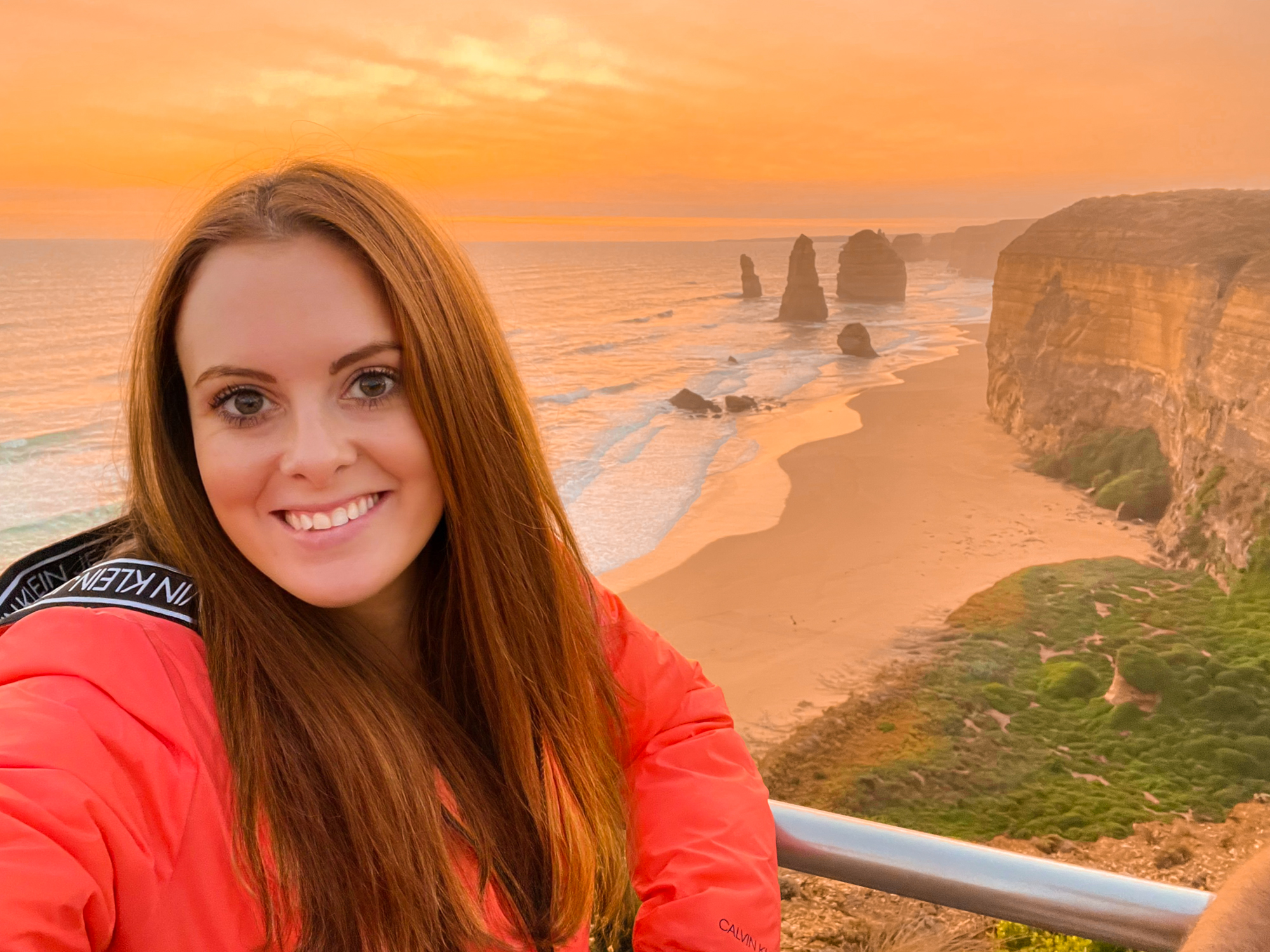
The Cost of Accommodation in Australia
You can visit Australia on any budget, from a $40 a night hostel in Cairns that’s highly-rated on Booking to the spectacular $500 a night Four Seasons Sydney , which offers up the best views of the Sydney Opera House in the city.
(Those prices are in AUD, by the way. 1 AUD is equal to 0.60 USD/EUR, or 0.53 GBP.)
But first things first; we have to get this out of the way. Yes, Australia is expensive. It’s incredibly expensive, in fact. And — like everywhere else in the world — prices have only skyrocketed as the pandemic has receded.
Despite this, there is still good value to be found. Because whether you’re travelling as a solo backpacker on a shoestring, as part of a couple on a mid-range budget, or as a family looking for a little luxury, value is the one thing you’re going to be looking for. That doesn’t necessarily mean cheap, of course, but it does mean staying in some incredible places.
So let’s take a look at accommodation. To start with, I’m going to cover the cheapest way to travel across the country.
If you’re on the tightest of tight budgets, there are several options that’ll land you with free accommodation while you’re in the country. Courchsurfing helps you to connect with locals by sleeping on spare sofas in their homes. It doesn’t cost a penny to do so and is a fantastic way to gain an insight into Australian daily life away from the tourists. There are over 300,000 hosts in Australia, so you shouldn’t find it too hard to connect with somebody likeminded.
Housesitting is a more upmarket way to avoid paying for accommodation, as it’s aimed at mid-range and luxury travellers. You’ll be looking after homes (and usually pets) while their owners are on holiday, and the houses can be extremely luxurious (I’ve had friends housesit a castle before!). This option works best if you don’t have fixed travel plans, as you’ll be agreeing to dates that the owners set. It’s always worth taking a look at the site, though, just in case somebody’s vacation dates happen to coincide with yours; there’s usually several hundred housesits to browse through in Australia at any one time.
Finally, when it comes to free accommodation, you could take a look at WorldPackers in Australia , where you’ll be able to volunteer for locals in exchange for food and board. There are some seriously cool options available on the site right now, from helping out at a local surf school to lending a hand at building an eco-sanctuary in the rainforest. Readers of this site get a $10 discount for WorldPackers with the promo code neverendingfootsteps .
If you’re not looking to travel for free, though and just want a clean and comfortable room to sleep in, there are plenty of great budget options, too.
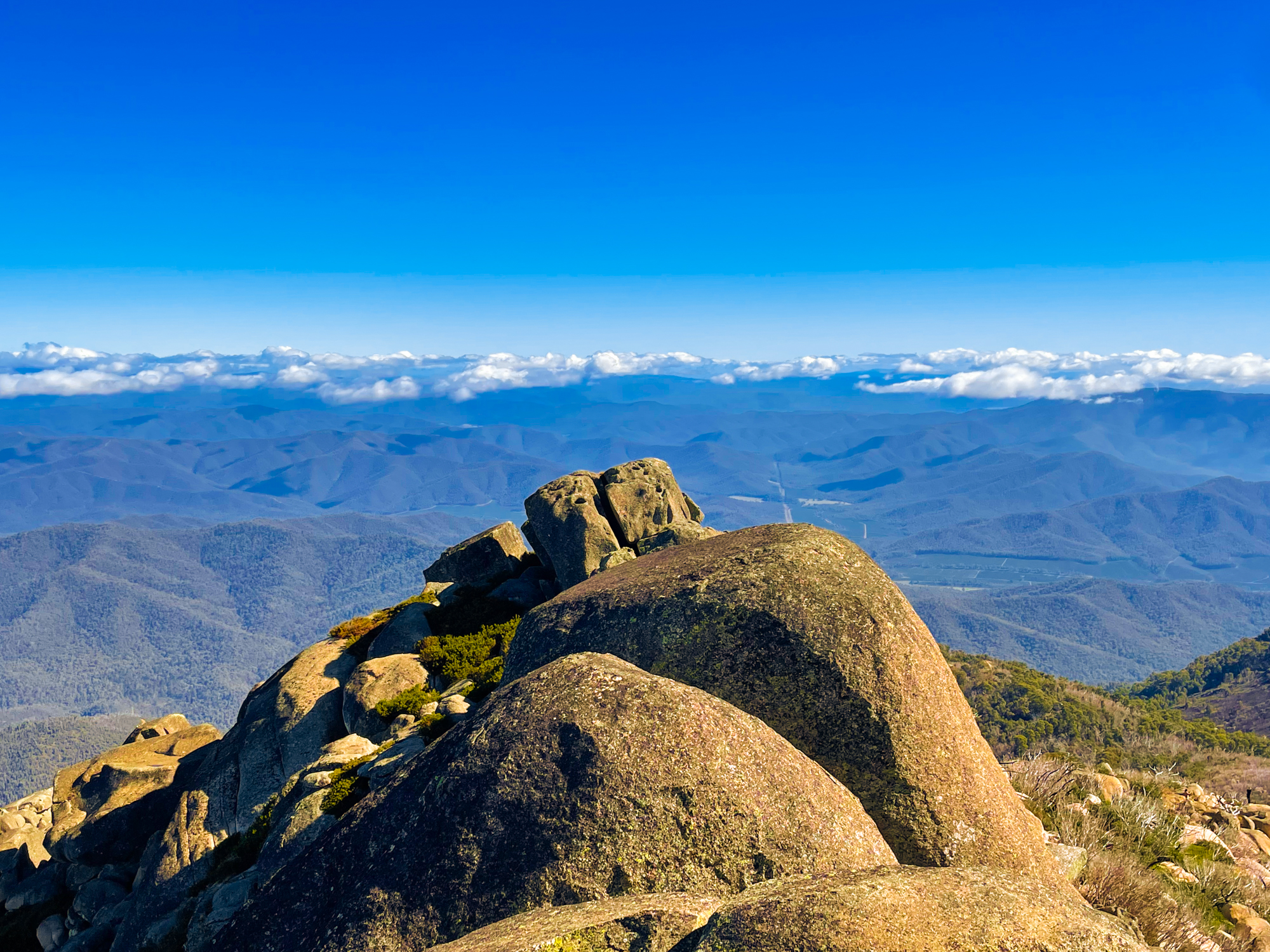
The Best Hostels in Australia
One of the most affordable ways to explore Australia is by staying in a hostel.
During my first visits to Australia, I was in my early twenties and living the backpacker dream; attempting to save as much money as possible. I was impressed by the quality of the hostels in Australia, as well as how many there were to choose from. This country is practically a mandatory stop on backpackers’ round-the-world trips, so there’s cheap accommodation aplenty in every tourist destination.
Here’s some of my favourite spots in the country:
- My favourite hostel in Sydney is easily the epic Sydney Harbour YHA — just wait until you see the views of the Sydney Opera House from the rooftop terrace! It’s in a perfect location for exploring the city, the staff are amazing, and breakfast is included. You’ll pay $70 per night for a dorm bed, or $200 a night for a private room with en-suite.
- In Melbourne , you can’t get better than the Space Hotel — I recommend my friends here whenever they come to visit! Here, dorm rooms are priced at just $65 a night and private rooms are $160 per night . In a town where most hostels are rated poorly, this well-reviewed spot is a no-brainer.
- You’ll likely be heading to Brisbane while you’re in Australia, and if so, I recommend Breeze Lodge , which has dorm rooms for $55 night . The staff here are wonderful and really helped me make the most of my time in town. The rooms were spotless, the vibes immaculate, and the beds comfortable. You can’t ask for more than that!
- The Gold Coast is home to the Surf Inn , which is one of my favourite spots in the country. Here, dorms are priced at $65 a night . No wonder it’s the best-rated budget accommodation in town. What I loved most about this place is its lovely swimming pool, the fantastic free breakfast, and its close proximity to the beach. Truly, this is one of the best value spots in all of Australia.
- I’m a massive fan of Perth . I chose to stay in Spinners Hostel during my most recent visit and came away so impressed with the rooms. Not only is it inexpensive at $50 a night for a dorm, but the beds are comfortable, the rooms modern and spacious, and the location incredible (I love the Northbridge neighbourhood so much!)
Overall, then, you can see that you can expect to spend around $60 a night for dorms in Australia, and around $160 a night for a private double room in a hostel. See what I mean about Australia being a little bit pricey?
Well, now it’s time to move on to the cost of hotels in Australia. Because what if you’re not a budget traveller and just want to stay in a lovely, well-reviewed hotel or guesthouse that’s good value for money and has all the things you need from a place to lay your head? I’ve got you!
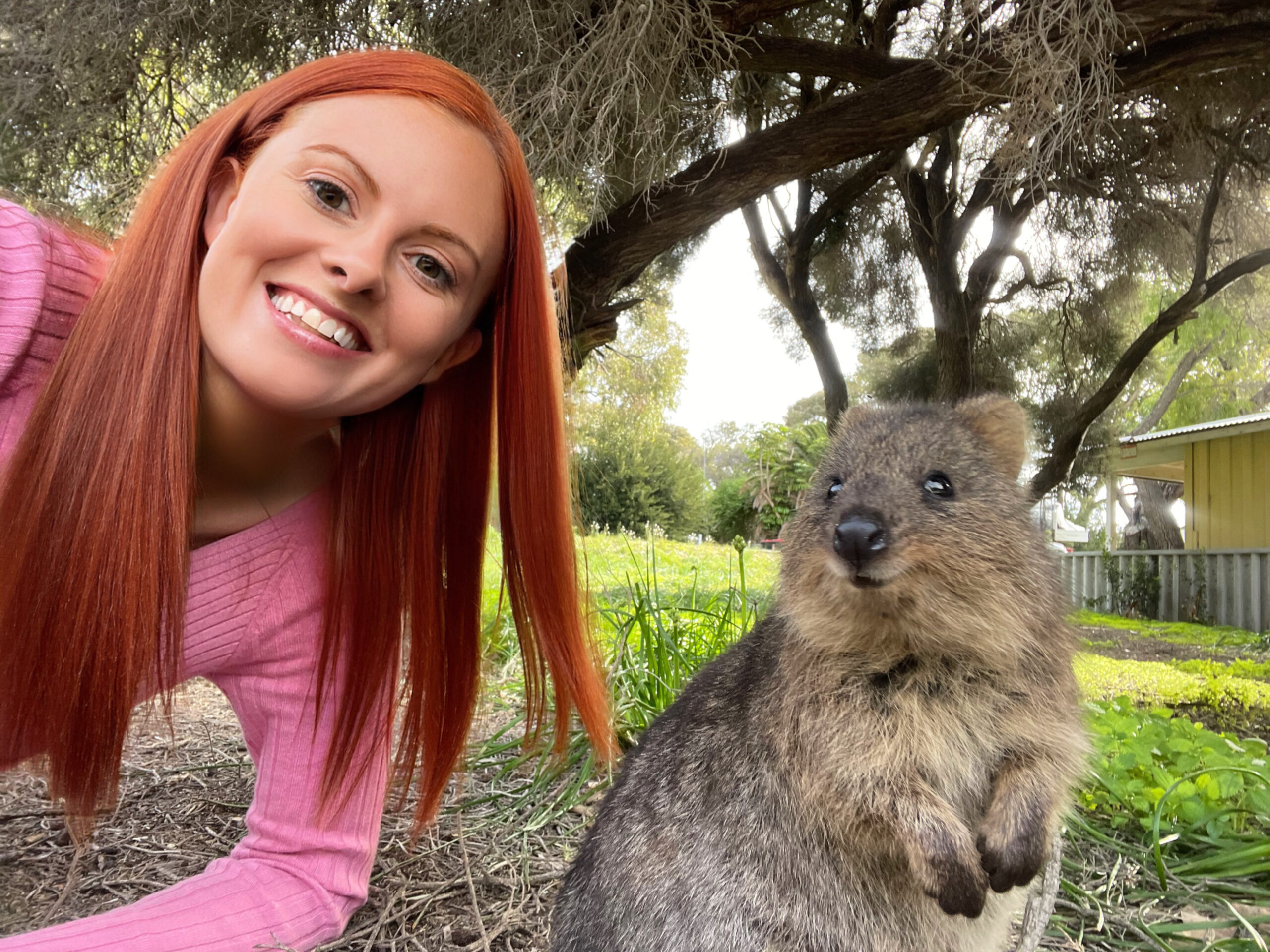
My 2024 Recommendations for Hotels in Australia
It’s time to start looking at hotels.
In this section of my budget breakdowns, I always like to share my personal recommendations for accommodation within a country. That way, you get to browse through my favourite properties in order to make your trip planning easier, while also gaining an insight into how much you can expect to spend. And trust me: I spend hours researching each and every hotel that I stay in; I know which places offer the best value in Australia.
My biggest tip? When you head to Booking.com to find a hotel, ignore the default results that are shown whenever you search for properties in a destination. That initial list is simply a rundown of all of the hotels that pay Booking the highest commission[!], some of which have some pretty poor write-ups. Instead, click the “sort by” dropdown menu above the search results and choose to sort the properties by “Top Reviewed”. That way, you’ll be able to see which hotels are actually the best option for you.
All that to say, as I’ve been roaming around Australia, I’ve been making a note of the best accommodation in every city, putting in the hard work so you don’t have to. Here’s where I recommend staying (these are predominantly mid-range budget options, in excellent locations with the best reviews). Again, all prices are in AUD:
Sydney: Medusa Hotel ( $230 per night ) — Located in one of my favourite Sydney neighbourhoods — the eclectic Darlinghurst — Medusa hotel is close to so many of the best restaurants and cafes in the city’s inner east. You’re a 30 minutes walk from the CBD (and many of the tourist attractions) so you’ll pay a little less for accommodation than you would if you were right in the heart of the city; an added bonus. On top of that, the property itself is super-quiet and peaceful, tastefully decorated, and with a lovely courtyard. I stay here every time I visit Sydney.
Melbourne: ZaGame’s House ( $260 a night ) — Fun fact! When the pandemic struck, I was in Melbourne as the city went into lockdown. Without a home, I spent nine months living out of hotels and Airbnb apartments, trying so many different Melburnian neighbourhoods on for size. In other words, I know this city, and I know the best places to stay. I love ZaGame’s House for its location — right in the heart of the incredible Carlton neighbourhood, where you’ll find the Queen Vic Market (my favourite food market in the world!) and still be within walking distance of the main attractions in town. You’ve got beautifully designed rooms, amazing staff, a well-equipped gym, and one of the most comfortable beds ever. This is one of my favourite places in Melbourne.
Brisbane: The Inchcolm by Ovolo ( $275 a night ) — Take a look at the photos of the Inchcolm and tell me you don’t want to immediately book a stay there! The decorations and artwork are gorgeous, and the rooms are clean, spacious, and so comfortable. For me, though, the main reason to stay at the Inchcolm is the phenomenal staff members! No matter whether you’re looking for travel advice or a cocktail recommendation in the bar, they’re only too happy to drop everything and help you out. Throw in free access to the Fitness First gym across the street and you’ve got yourself everything you need for your time in Brisbane!
Gold Coast: Meriton Suites Surfers Paradise ( $235 a night ) — To me, staying on the Gold Coast is synonymous with being in a high-rise hotel, gazing down on a stretch of pristine white sand that seems to go on forever. Well the Meriton Suites in Surfers Paradise offers exactly that and I couldn’t stop swooning over its views. You’re located just steps away from the beach, the rooms are clean and spacious, with fully-equipped kitchens, and you’ve got access to an indoor and outdoor pool, jacuzzi, sauna, gym… the list goes on. This place is an absolute gem!
Cairns: Travellers Oasis ( $130 a night ) — A cheaper option for Cairns, but when the accommodation is so great, staying here is a no-brainer. Travellers Oasis has the best outdoor area, with a jungle-esque garden area, access to a BBQ, and a refreshing swimming pool (100% needed in the sweltering humidity of Cairns!) Rooms are well-cleaned and comfortable, with air conditioning to help keep you cool. It offers up a relaxed vibe to travellers, thanks to the warm and welcoming owners. As an added bonus, it’s only a five-minute walk from all of the best restaurants in town.
Perth: Alex Hotel ( $230 a night ) — There’s no getting around it: Perth is one of the most expensive cities in Australia for tourists, but that doesn’t mean there aren’t bargains to be found. In particular, I’m a huge fan of Alex Hotel, in the city’s CBD. Not only is it only a 15-minute walk from my favourite restaurant in the city (Ramen Keisuke Tonkotsu King: if you’re a ramen fan, you have to go!), but the interior is beautifully decorated, the breakfasts are impressive, and the rooftop terrace offers up some great city views.
Hobart: The Lodge on Elizabeth Boutique Hotel ( $196 a night ) — The Lodge is a wonderful historic home (one of the oldest buildings in Hobart!) that’s located just a 10-minute walk into the centre of the city. What I loved about it was how homely it feels. It’s like coming back to a cosy home at the end of a long day of exploring — and there’s no better feeling than that! You can expect free parking, tons of travel advice from the owners, delicious breakfasts, and even free glasses of port in the communal lounge. Enjoy!
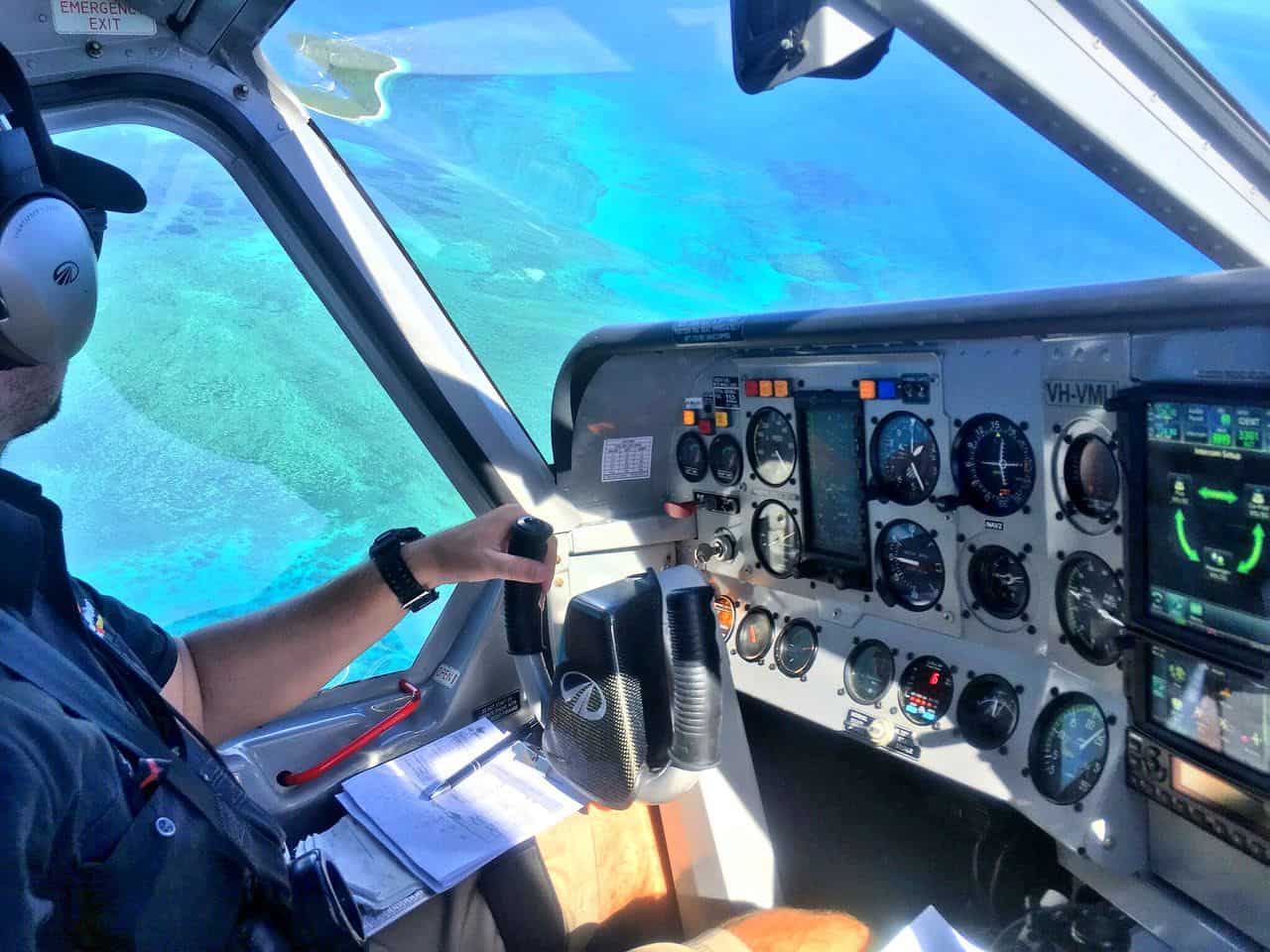
The Cost of Transportation in Australia
One thing to keep in mind is the sheer size of this country! It’s around the same size as the continental U.S., so if you wouldn’t expect to be able to see the entirety of the United States in two weeks, it’s unrealistic to hope to do the same in Australia.
With the vast majority of Australia’s attractions scattered along its coastline, driving distances can therefore be huge. My road trip from Brisbane to Melbourne involved driving well over 1,000 miles (1600 km), while Sydney and Perth are separated by a whopping 2,500 miles (4,000 km). To drive from Brisbane to Cairns, you’ll spend 19 hours behind the wheel and still be in Queensland.
Because of this, it’s often easier, definitely faster, and usually cheaper, to fly between Australian cities. Still, don’t expect flights to always be speedy: it takes a whopping five hours to fly from Sydney to Perth!
If you’re short on time, though, it’s well worth taking a look at the offerings from the local airlines, as flights within Australia can sometimes even cost less than taking a bus. As an example, I paid just A$40 for a Jetstar flight from Cairns to Melbourne, skipping the 31 hour[!] drive time. You’ll most likely be flying with Qantas, Jetstar, or Virgin Australia; Qantas has the nicest planes; Jetstar is usually cheapest. I recommend using the flight comparison tool, Skyscanner , to find the best deals.
One of my top tips for saving money in Australia is to check the prices of flights for smaller airports that are located on a city’s outskirts. For example, Avalon Airport is just 15 miles from Melbourne’s main airport of Tullamarine, but usually offers cheaper flights. It’s nearly always less expensive to fly into the Gold Coast instead of Brisbane; two cities that are less than 50 miles apart.
One final thing: last year, the budget airline Bonza launched in Australia, offering very cheap flights for a limited number of destinations in the country (they have neither SA or WA flights nor Sydney yet). The catch? The only way to see their prices of flights is to download the “Fly Bonza” app. Yeah, it’s kind of a pain in the ass. Still, if you’re looking for a bargain, it might be worth the added annoyance for you to take a quick look; their prices are often half what the major carriers are charging. (Melbourne to Alice Springs is $169 direct, for example, in comparison to Jetstar/Virgin’s $350 with a layover in Adelaide).
With all that being said, there’s nothing quite like overlanding across Australia, and this country is well set-up for a road-trip. I’ve road-tripped four times throughout the country, from the Great Ocean Road to the entire East Coast.
If you’re on a tight budget, the easiest way to see the country is to buy a campervan when you touch down in Australia — this is how backpackers have been exploring Australia for decades . Then, when you’ve finished your road trip, you simply sell your campervan to a brand new arrival in the country. It works out to be a lot cheaper than renting (as long as you don’t total the car!) as you’ll make most of your money back at the end of the trip. Some people even manage to sell their campervan for more than they paid for it, completely eliminating all transportation costs from their trip!
You can find campervans for sale on Gumtree and Facebook (try the groups Backpacker Campervans for Sale and Campervan Sales Australia ). In general, there’ll always be a cheap and cheerful option for 10,000 AUD (6,500 USD/EUR or £5,300) available. For something with lower mileage and a more comfortable set-up, you’ll be looking at around 25,000 AUD , although obviously the sky’s the limit! If you want a bougie, Instagrammable, #vanlife set-up, you’ll be looking at as much as 70,000 AUD for your camper.
If buying isn’t for you, then renting is still a great option, whether it’s a campervan to road trip around the country, or settling on an economy car to save money. Personally, I’ve always nearly always rented a car while road-tripping Australia, so that I could stay in hotels along the way.
Regardless of which method best suits you, car rental prices can range from $50 a day for an economy car, all the way up to $150 — I always book through RentalCars.com when hiring a car. For campervans, it’s best to go with Jucy or Travellers Autobarn — both companies have a range of vehicles, including brand new ones, that are competitively priced. You’ll expect to pay between $120 and $230 a day , depending on how high-end the vehicle is.
Public buses are a great way to get around the country — in my option, the best way if you’re on a tight budget — and they’re seriously cheap if you’re going to be traversing the entire country. Greyhound is your best bet here, as they cover most of Australia and at very reasonable rates. If you book far enough in advance, you can sometimes grab a ride for just $1 !
Take a look at Greyhound’s Whimit passes, too, if you plan on travelling predominantly by bus. These are easily the cheapest way to travel across Australia. The Whimit passes give you unlimited travel across Australia; you can undertake any bus route of any length at any time over any travel period. Prices are as follows:
$665 for 90 days of travel works out to just $7.39 per day , which is so much cheaper than renting your own car and paying for petrol!
I’ll briefly mention interstate trains here, as there are a few of them in Australia, but they make for a pretty expensive option. It’s usually way cheaper to take the bus or fly between stops than to take the train. For example, the famous Ghan train, which runs between Adelaide and Darwin, takes you across the heart of Australia over three days, living in luxury and gazing out at that iconic Outback scenery. This isn’t a trip for the budget travellers, however: a three-day trip on the Ghan comes in at a whopping $3000 . Per person . Yikes!
I do want to give a specific shout-out to the cost of trains within the state of Victoria, however! They’re incredibly affordable here. In fact, you’ll never pay more than $9.20 for any train ride, even if its a multi-hour journey, taking you from one side of the state to the other! It makes day-tripping cheap and feasible for those of you who don’t want to drive.
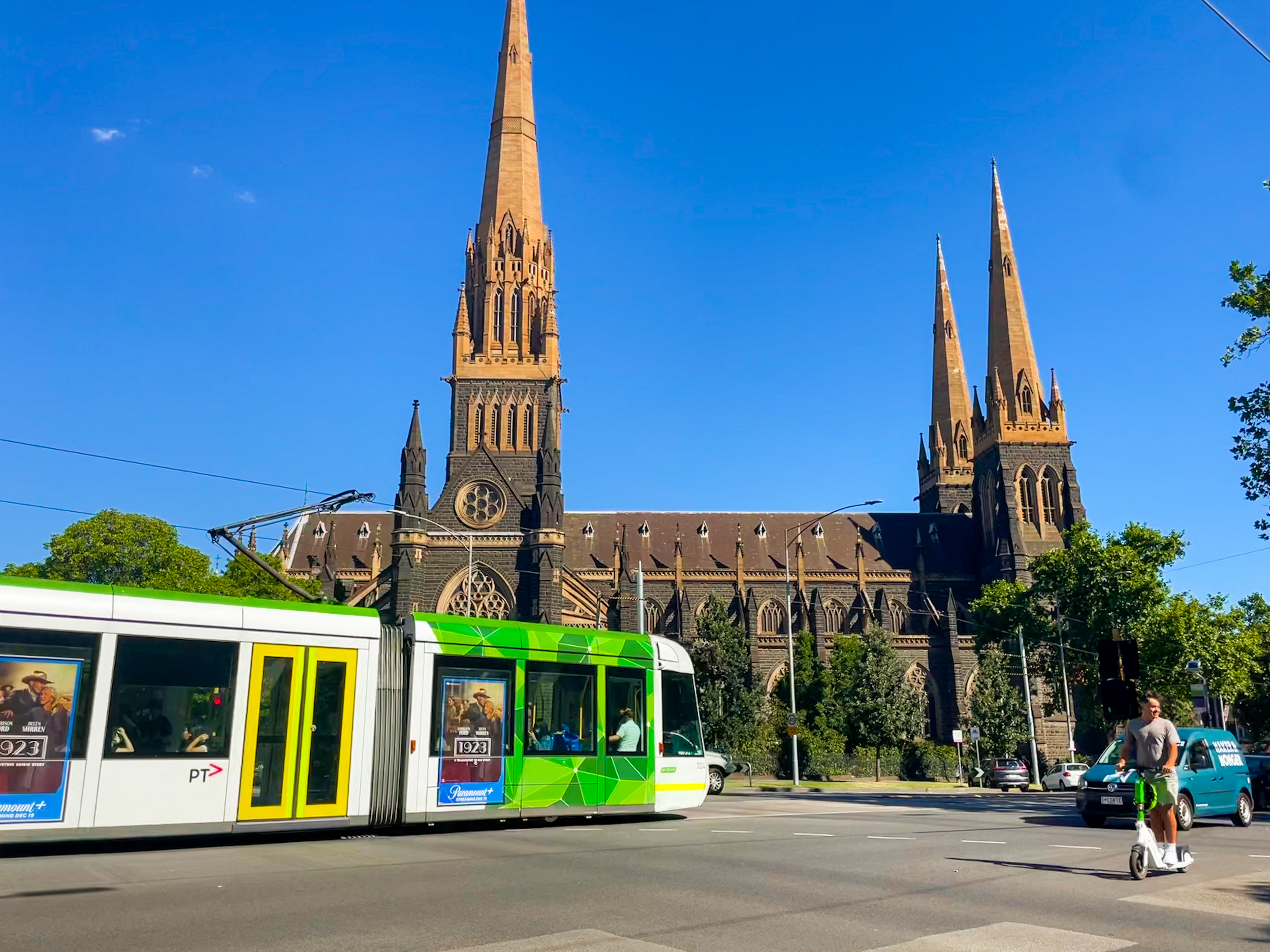
Within the cities themselves, you’ll find that public transport is reasonably priced. Unsurprisingly, Sydney and Melbourne have the best public transport accessibility in Australia, followed by Perth and Brisbane.
Buses, trains, and ferries operate in the vast majority of Australian cities, and you’ve also got trams in Melbourne and light railways in Sydney, Adelaide, Canberra, and the Gold Coast. There’s even a metro system in Sydney and Adelaide! We do also have Uber here in Australia, which makes getting around a breeze. I generally pay around $50 for a 30 minute drive.
Needless to say, there’s lots of ways to get around if you won’t have a car. To give some examples of prices:
In Sydney, you’ll pay (depending on time of day and distance travelled) $4-6 for a bus, $2-11 for a train, $7-10 for a ferry, or $4-5 for a light-rail journey.
In Melbourne, public transport fares start at $3.30 , and there’s a $10 cap on daily public transport fares, so you’ll never pay more than that per day, no matter how many trains, trams, or buses you take. There’s also a free tram zone in the heart of the city, where you won’t pay anything at all!
In Brisbane and the Gold Coast, transportation fares range between $3 and $22 , based on distance, although you’re unlikely to pay as much as $22 , as that’s the cost of travelling 170 km to Gympie (something a tourist is unlikely to do!).
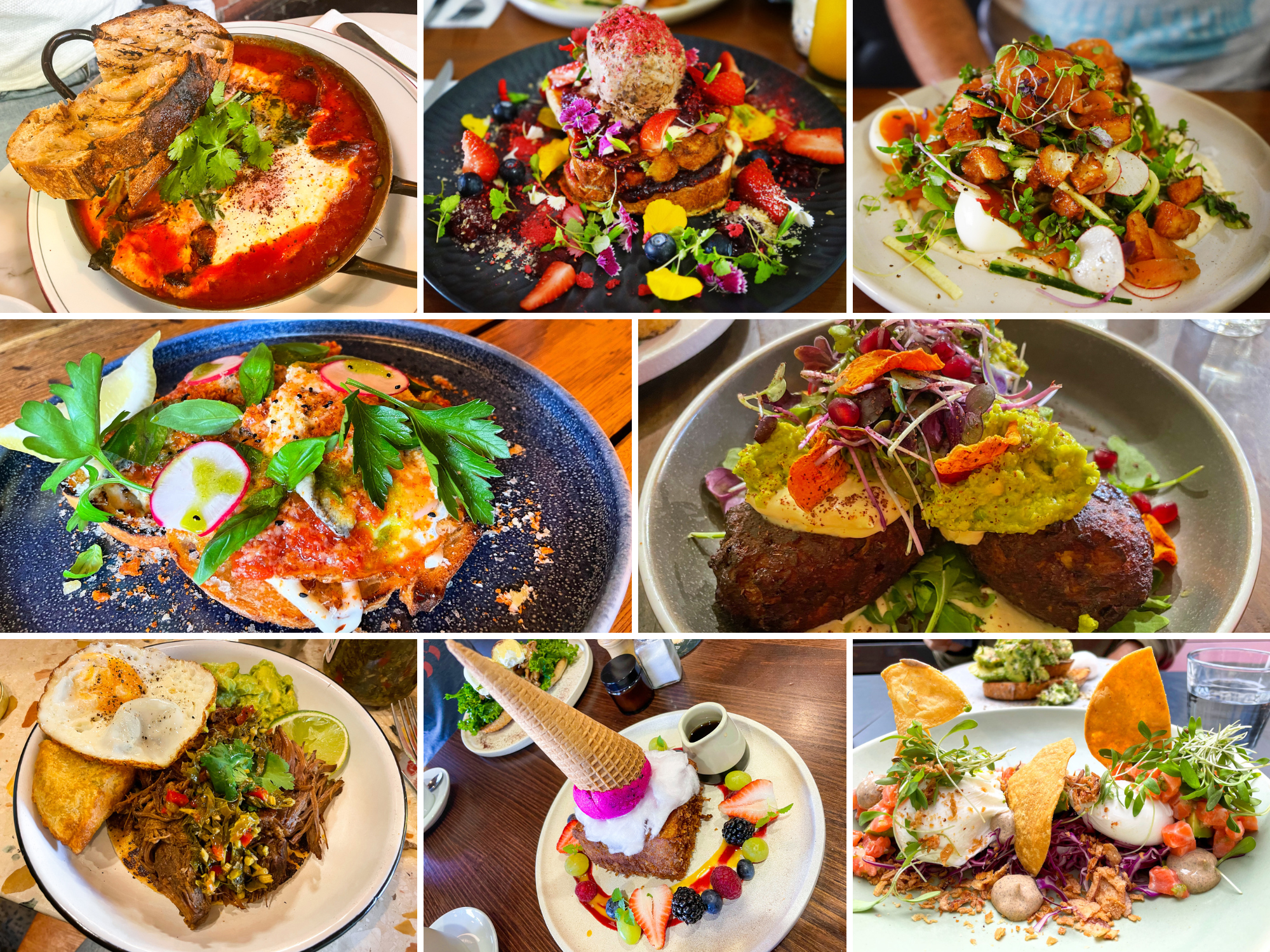
The Cost of Food in Australia
When you ask me about the food in Australia, there’s one thing that comes to mind: brunch.
Australian breakfasts are the absolute best in the entire world, with Melbourne offering up the tastiest versions . From Vegemite on toast to avocado on toast (called smashed avo), Australia is all about bringing new breakfast dishes to the world. But the brunches are on a whole different level, with a multitude of elaborate ingredients and flavours. If I was only able to eat out for one mealtime in Australia? It would definitely be for breakfast.
Like absolutely everything in Australia, food is relatively expensive — particularly eating out in restaurants. I can easily spend $20-30 on every single meal, so if you’re hitting up cafes and restaurants for all three meals, you can easily find yourself spending $100 a day just on food. The food is fantastic, though, so if you have the cash, it’s absolutely worth digging into Australia’s food scene.
“Throw a shrimp on the barbie!” This iconic line is what most visitors to Australia think of when it comes to food, but fun fact: I’ve never once seen — let alone eaten! — a shrimp on the barbecue! Still, BBQing is a huge deal in Australia, and it’s a great way to keep your costs down. Once of my favourite things about Australia is that many of the parks are home to free public barbecues! It makes for such a cheap meal: hit up the local supermarket for some meat, then head to the park to cook for yourself. You’ll nab yourself a meal for less than $10 and have a cultural experience while you’re at it!
Kangaroo? Absolutely! You can buy kangaroo meat from supermarkets (I like kangaroo sausages) and order kangaroo from many restaurants. It’s not a particularly exciting meat to eat, as it just tastes like a cross between beef and venison, but hey, if you eat meat and want to try something new, it’s definitely worth a sample. While you’re trying new meats, I recommend hitting up a fish and chip shop while you’re travelling Australia’s coastline: while you’re there, make sure to order flake: it’s shark!
While eating out in Australia can be expensive, it’s not too pricey to buy from supermarkets. If you’re backpacking or looking to save money, then, aim to have your breakfasts and lunches from the supermarkets: you’ll pay $1 for a 500g of pasta and $2 for some pasta sauce, for example, or $1 for a loaf of bread and $1 for some butter. Not very exciting or nutritious, no, but if you’re prioritising seeing as much as possible, you can see how it’s easy to keep costs low.
Australia is a drinking society, offering up booze from the infamous goon (boxed wine that’s $10 for 5 litres) to a high-end wine from the Adelaide wine region (easily $50). A beer in a restaurant can cost around $8, and a cocktail in a fancy bar can easily come in at $18. When it comes to alcoholic options, coffee comes in at $3-4, and even a can of soda works out to be $3!
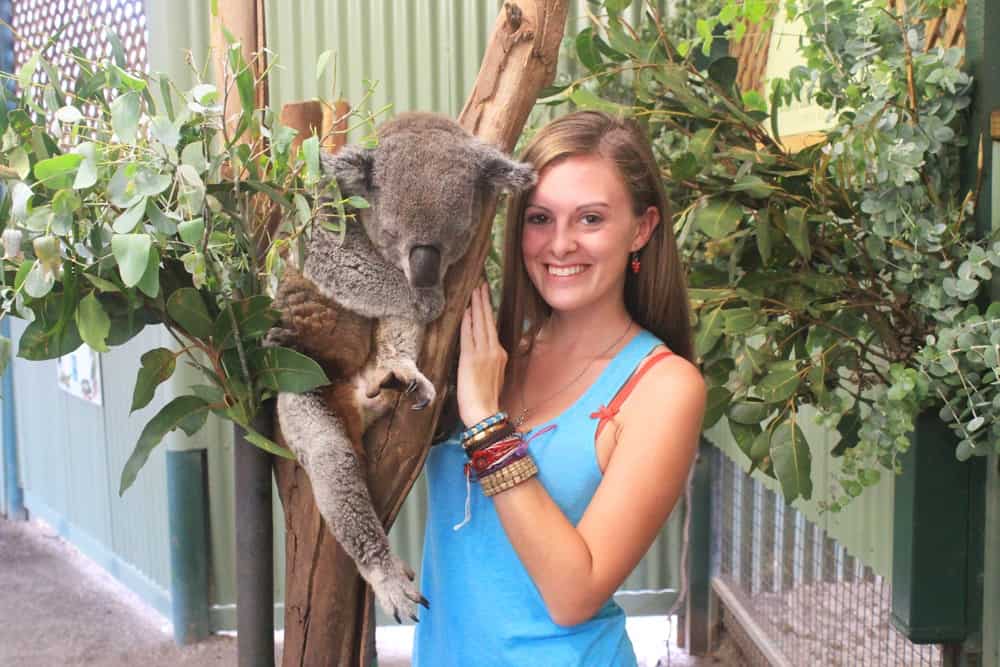
The Cost of Activities and Entrance Fees in Australia
When it comes to travel in Australia, there are so many famous activities and attractions to add to your itinerary. The only downside of this, of course, is that — yet again! — they come at a price.
The greatest attraction in Australia is the magnificent Uluru: that gigantic red rock in the centre of the country. I highly recommend checking it out while you’re in Oz, but it’s important to keep in mind that its location can make for a lengthy and expensive trip. The first expense is getting there: if you have your own wheels, it’s well worth making the drive through the Outback, but if that sounds like an intimidating journey, you’ll be flying into Alice Springs instead. Flights are typically between $300 and $400 for a one-way ticket; $500 to $800 for a return ticket. On top of that, you’ve got the entrance fee ( $38 for three days), the cost of a tour (around $300 for day trip), and any special experiences ( $200 for a 25-minute helicopter ride ; $180 for a base walk, full day in the park, and sunset BBQ ).
Speaking of expensive experiences, I absolutely loved the time I spent out on the Great Barrier Reef. It was incredible! But the main thing to know is that if you want to see healthy, live coral, you need to jump on a liveaboard, which means you need to spend at least one night out on the water. This additional time allows you to travel away from the day-trippers, who spend their days observing dead, bleached coral. It is pricey, but this was one of the best experiences I’ve had in Australia (and I went in with low expectations!). We went with Reef Encounter (the best company in Cairns) and paid $1,600 for two nights on board. It was truly, truly incredible and I can’t recommend it highly enough.
I also took a scenic flight over the Great Barrier Reef with GLS Aviation and paid $300 for two people to take a 40-minute flight. I wrote about this experience in-depth on my site — it was amazing! And so valuable to be able to see the reef from above. It really helped to put its size into perspective for me.
And finally, don’t forget the entrance fee to Australia itself! Fun fact: I’ve managed to forget to apply for a visa for Australia twice over the past decade, and both times, it’s caused me an inordinate amount of stress and panic. Yes, as soon as you book your flights to Australia, you’re going to want to apply for an ETA (Electronic Travel Authority) in order to enter the country. Don’t forget! I use iVisa for my ETAs for Australia and pay $20 each time.
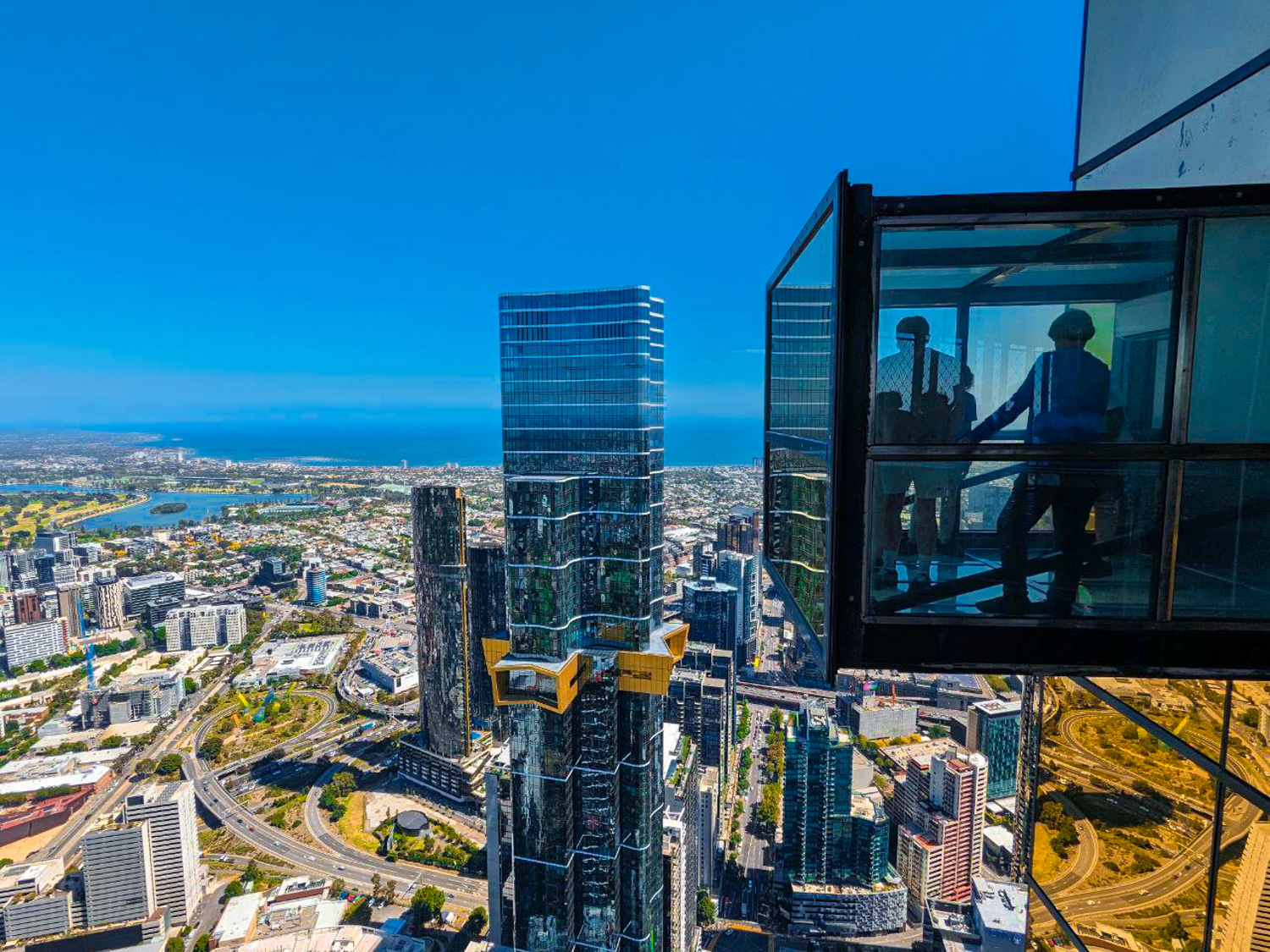
Don’t You Dare Forget About Travel Insurance!
Travel insurance : If you’ve read any other posts on Never Ending Footsteps, you’ll know that I’m a great believer in travelling with travel insurance. I’ve seen far too many Go Fund Me campaigns from destitute backpackers that are unexpectedly stranded in a foreign country after a scooter accident/being attacked/breaking a leg with no way of getting home or paying for their healthcare. In short, if you can’t afford travel insurance, you can’t afford to travel. These costs can quickly land you with a six-figure bill to pay at the end of it.
Travel insurance will cover you if your flight is cancelled and you need to book a new one, if your luggage gets lost and you need to replace your belongings, if you suddenly get struck down by appendicitis and have to be hospitalised, or discover a family member has died and you need to get home immediately. If you fall seriously ill, your insurance will cover the costs to fly you home to receive medical treatment.
I use SafetyWing as my travel insurance provider, and recommend them for trips to Australia. Firstly, they’re one of the few companies out there who will actually cover you if you contract COVID-19. On top of that, they provide worldwide coverage, don’t require you to have a return ticket, and even allow you to buy coverage after you’ve left home. If you’re on a long-term trip, you can pay monthly instead of up-front, and can cancel at any time. Finally, they’re way cheaper than the competition, and have a clear, easy-to-understand pricing structure, which is always appreciated.
With SafetyWing, you’ll pay $1.50 a day for travel insurance.
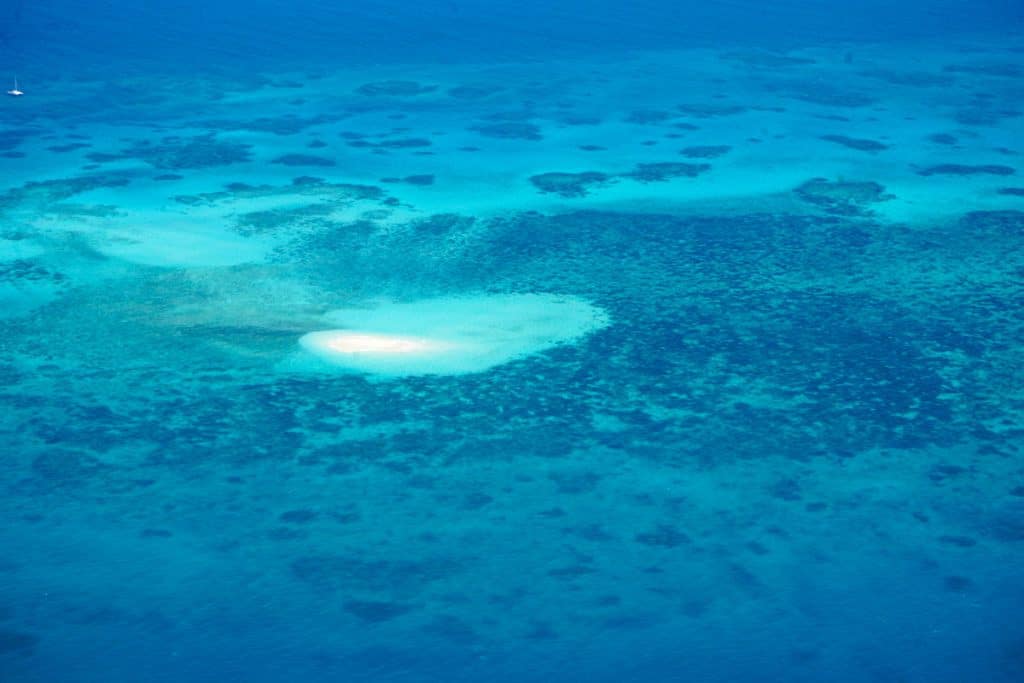
How Much Does it Cost to Travel in Australia?
With all of that being said, it’s time to tally up all of my travel expenses in Australia, in order to give you an idea of how much you can expect to spend while travelling in this wonderful country:
The cost of travel in Australia for backpackers
Accommodation: A$30 per day Transportation: A$20 per day Food: A$25 per day Activities: A$10 per day
Total cost of travel: $A85 per day (58 USD per day)
The cost of travel in Australia for couples on a mid-range budget
Accommodation: A$50 per day Transportation: A$30 per day Food: A$40 per day Activities: A$12 per day Total amount spent per day: A$132 per day
ARE YOU PLANNING A TRIP TO AUSTRALIA? HAVE ANY QUESTIONS? LET ME KNOW IN THE COMMENTS BELOW!
Related Articles on Australia 🇦🇺 30 Incredible Things to Do in Melbourne, Australia 🐠 Nerves and Nausea Over the Great Barrier Reef 🥑 Fitzroy is Home to the Best Brunches Ever 🦘 Tasmania Is Incredible And You Should Go There Now
Lauren Juliff
Lauren Juliff is a published author and travel expert who founded Never Ending Footsteps in 2011. She has spent over 12 years travelling the world, sharing in-depth advice from more than 100 countries across six continents. Lauren's travel advice has been featured in publications like the BBC, Wall Street Journal, USA Today, and Cosmopolitan, and her work is read by 200,000 readers each month. Her travel memoir can be found in bookstores across the planet.
Related Posts

The Cost of Travel in Mauritius: My Detailed Budget Breakdown

The Cost of Travel in Thailand: My Detailed Budget Breakdown
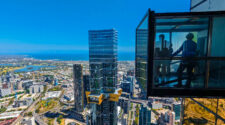
30 Incredible Things to Do in Melbourne, Australia (By a Local!)

The 9 Best Brunches in Fitzroy, Melbourne for 2024 (By a Local!)

2023: My Travels in Review

The Cost of Travel in South Korea: My 2024 Budget Breakdown
24 comments.
I’m not much of a hiker either but I do get that sudden burst of pride that I can take it all in my stride like there’s no stitch, no shortness of breath & definitely no sweat pouring into my eyes. The feeling of making it to the top is incredible, the feeling of sitting down & filling your mouth with cold water – even better :)
Agreed! I think I may now be a hiking convert — the feeling of pride afterwards was amazing!
Hiking in flip flops?! Are you crazy! Haha! I’m going to hike up Adams peak in Sri Lanka tomorrow night, soon I will have cobra calves like you!
Hahaha! I’d lived in flip flops for the past year so assumed I’d be fine. I probably should have bought some hiking boots….
Good luck with the hike! Cobra calves are sexy :)
good choice seeing the blue mountains. it really is underrated imo.
you heard the story about the first convicts in Australia? not knowing where they were, they thought China was on the other side of the blue mountains…
Thanks! And nope, I hadn’t heard that before — too funny!
I was horrified too when I realised just how big Australia is, but after a while it became second nature to spend a whole day travelling from one place to the next. The Blue Mountains is one of the places in Australia I really wish I had visited, it looks so, so beautiful.
Aren’t the distances crazy. If I drove for the amount of time I did in Australia I’d end up in the ocean!
The Blue Mountains was probably the highlight of my entire time in Australia so hopefully you’ll make it there one day! :)
Wow it looks amazing! Impressive doing it in flipflops as well. Although I would recommend buying something slightly more comfortable to wear for all the New Zealand hiking I’m sure you will be doing. I did the famous Tongariro Crossing in Converse. Something I do not recommend…took me three days for my feet to recover after that…
Yep, I bought a pair of excellent hiking shoes a few days after my time in Blue Mountains and love them!
I can’t imagine doing the Tongariro in Converses would have been particularly easy! :)
Wow stunning photos for such a stunning place! I’m ashamed to admit I’ve never heard of this place at all! However, I’m glad I saw your tweet, because now I can add this to my list of a biz-zillion things I want to do before I die.
It’s ok, Bryan… I didn’t know its name before I arrived :-) Glad you’ve added it to your list, it definitely deserves a place there!
Knew there was a reason the Blue Mountains were on my Aussie bucket list :D I’m not a hiker and already know I’m going to bitch and moan all the way up but looking at your photos, it’s definitely going to be worth it and I can’t wait :D
Yay! I’m so glad you’re going to be heading here — it’s been my favourite place in Australia! :-) And, really, if I made it in flip flops then you *definitely* can handle it!
I literally just got to Sydney this morning and was planning a trip to the Blue Mountains when I realized I hadn’t checked your blog in a while. Thankfully I did! Great tips and photos as always! My travel companions are also super excited since they share your enthusiasm for hour long sunset photo shoots haha
Awesome, I’m so glad it could help! You’ll love it there, it’s SO beautiful!
Those are such gorgeous photos! It really is such a dramatic landscape. I did the same hike as you last year and loved it! I took that tram back up, the steepest one in the world I think it is. So sure I was going to slip out! Really great blog :)
Thanks, Veronica!
I didn’t get a chance to take the tram but it looked pretty daunting… I would have probably spent the entire journey hyperventilating!
Haha, I’m enjoying reading about your progress towards becoming “A Hiker.” Looks like a gorgeous hike for sure!
Though, I hate to tell you this… but I feel like Dave might be onto your nose-breathing secret after reading this post… ;)
Wait until you hear about the stuff I get up to in New Zealand! I go a bit crazy and almost break myself :)
*Cue Mouth Drop* These photos are stunning! This is intense. Everytime I come on here now it’s featuring some sort of awesome bike trip (or a gnarly fall) or an amazing hike. I love it!
Awww, thanks Ryan, glad you like the photos!
Haha, I’ve done a few hikes in flip flops too! Sometimes not the best choice, but I just love them so much it makes it hard to put on real shoes :) Good choice on picking the Blue Mountains! They look stunning!
I know! After about a year in Southeast Asia, I threw out all of my other shoes and lived in flip flops… I love them so much!
Cost of a Trip to Australia & the Cheapest Time to Visit Australia
The average price of a 7-day trip to Australia is $1,955 for a solo traveler, $3,357 for a couple, and $1,725 for a family of 4 . Australia hotels range from $55 to $238 per night with an average of $92, while most vacation rentals will cost $180 to $510 per night for the entire home. Average worldwide flight costs to Australia (from all airports) are between $1,112 and $2,134 per person for economy flights and $3,492 to $6,701 for first class. Depending on activities, we recommend budgeting $42 to $86 per person per day for transportation and enjoying local restaurants.
See below for average , budget , and luxury trip costs. You can also look up flight costs from your airport for more tailored flight pricing.
The Cheapest Times to Visit Australia
On average, these will be the cheapest dates to fly to Australia and stay in a Australia hotel:
- January 29th to March 25th
- April 9th to May 6th
- July 30th to December 2nd (except the week of October 8th)
The absolute cheapest time to take a vacation in Australia is usually late August to early September .
Average Australia Trip Costs
Average solo traveler.
The average cost for one person to visit Australia for a week is $1,329-$3,211 ($190-$459 per day)
Food, Travel, and Sightseeing : $42 to $86 per day for one person’s daily expenses
Flights : $621 to $1,817 for economy
Lodging : $69 to $87 per night for one 2 or 3-star hotel room
or $108 to $132 per night for a 1-bed vacation rental
Average Couple’s Trip
The average cost for a couple to visit Australia for a week is $2,244-$5,629 ($321-$804 per day)
Food, Travel, and Sightseeing : $84 to $172 per day for two people’s daily expenses
Flights : $1,242 to $3,633 for economy
Average Family Vacation
The average cost for 4 people to visit Australia for a week is $4,483-$10,863 ($640-$1,552 per day)
Food, Travel, and Sightseeing : $168 to $345 per day for four people’s daily expenses
Flights : $2,485 to $7,266 for economy
Lodging : $137 to $175 per night for two 2 or 3-star hotel rooms
or $162 to $197 per night for a 2-bed vacation rental
Traveling Cheap to Australia
How cheap can you make a vacation to Australia? The cheapest trip to Australia is about $150 per person per day for travelers willing to take standby flights, deal with inconvenience, and otherwise limit travel expenses. About 1% of rentals are available in the $0 to $100 range for an entire place, and vacation rentals can be booked for as low as $20 per night. These inexpensive rentals must be booked as early as possible and may not be in the most desirable areas. 1-star hotels are more likely to be available, with rooms starting at around $47.
Even cheaper trips are possible depending on where you live and whether you can drive. Check the cheapest times to fly for more saving ideas.
Budget Solo Traveler
The lowest cost for one person to visit Australia for a week is $1,050-$2,975 ($150-$425 per day)
Food, Travel, and Sightseeing : $21 to $42 per day for one person’s daily expenses
Lodging : $47 to $55 per night for one 1-star hotel room
or $114 to $144 per night for a 1-bed vacation rental
Budget Couple’s Trip
The lowest cost for a couple to visit Australia for a week is $1,818-$5,085 ($260-$726 per day)
Food, Travel, and Sightseeing : $42 to $84 per day for two people’s daily expenses
Budget Family Vacation
The lowest cost for 4 people to visit Australia for a week is $3,631-$9,738 ($519-$1,391 per day)
Food, Travel, and Sightseeing : $84 to $168 per day for four people’s daily expenses
Lodging : $93 to $110 per night for two 1-star hotel rooms
or $171 to $216 per night for a 2-bed vacation rental
Overall it is very possible to travel to Australia cheaply.
The Cost of a Luxury Australia Trip
There is no true ceiling on the cost of a luxury trip, so our estimates are based on what most people do in Australia.
Luxury Solo Traveler
The high-end price for one person to visit Australia for a week is $2,837-$11,702 ($405-$1,672 per day)
Food, Travel, and Sightseeing : $84 to $173 per day for one person’s daily expenses
Flights : $1,553 to $4,539 for first class
Lodging : $116 to $238 per night for one 4 or 5-star hotel room
or $496 to $992 per night for a preferred vacation rental
Luxury Couple’s Trip
The high-end price for a couple to visit Australia for a week is $4,978-$17,452 ($711-$2,493 per day)
Food, Travel, and Sightseeing : $168 to $346 per day for two people’s daily expenses
Flights : $3,106 to $9,078 for first class
Luxury Family Vacation
The high-end price for 4 people to visit Australia for a week is $9,963-$31,927 ($1,423-$4,561 per day)
Food, Travel, and Sightseeing : $336 to $692 per day for four people’s daily expenses
Flights : $6,213 to $18,155 for first class
Lodging : $233 to $476 per night for two 4 or 5-star hotel rooms
or $744 to $1,488 per night for a preferred vacation rental
Australia Hotel Prices
The cost of staying in Australia is slightly lower than the average city. On average hotels are less expensive than vacation rentals. Luxury vacation rentals are more expensive in Australia due to very high property costs. The graphs below show how much cost can vary depending on the type of experience you’re looking for.
Australia Lodging Cost by Star Status
The average price for the class of hotel is on the (y) axis. The hotel class (out of 5 stars) is on the (x) axis.
Prices are based on Australia hotel averages and may not reflect current prices. In some cases, we extrapolate prices to estimate costs, and hotels with your desired star rating may not be available.
Vacation Rental Prices
The percent of vacation rentals in the price range is on the left (y) axis. Price range is on the bottom (x) axis.
There are a healthy amount of vacation rentals serving all budgets in Australia.
Flight Costs to Australia
Averaging flights around the world, prices go from a high of $2,134 average in late December to a low of $1,112 in late August to early September. Median flight price is $1,403. These prices are based on millions of flights. For Australia our data includes thousands of originating airports, and hundreds of airlines. The area has more variance in price compared with other locations.
Average Flight Cost by Season
Average flight cost by day of week.
The cheapest day to fly in is typically Tuesday, and the cheapest day to fly back is usually Tuesday. Click here to see data for the cost of flights from your airport. In Australia, the difference between the cheapest and the most expensive week is about $1,022, so you can easily save about 92% simply by using our free flight guides and booking in advance.
Daily Expenses Budget
Daily vacation expenses vary more based on what you’re interested in doing. A fine dining restaurant with drinks around Australia can easily cost $315 per person or more, while a standard nice meal might be about $21 per person. Private tours can cost $630 per day, but self-guided tours to see the outdoor sights can be free. Costs vary wildly, so recommendations are made based on the cost of living and averages we see for this type of vacation.
Other Australia Guides
Travel costs nearby.
- New South Wales Outback, NW, AU
- Murray-Darling Basin, Australia
- Mungo, NW, AU
- Broken Hill, NW, AU
- Buronga, NW, AU
- Wentworth, NW, AU
- Euston, NW, AU
- Gol Gol, NW, AU
Travel Costs in Popular Places
- Moscow, Russia
- Kuta, Indonesia
- Houston, TX, US
- Travel Planning Guide
How much does a trip to Australia Cost?

How much money should you budget for your trip to Australia?
- How much does a one-week trip to Australia cost?
- How much does a two-week trip to Australia cost?
- How much does a one-month trip to Australia cost?
- Hostel Prices
- Hotel Prices
The Cost of a Trip to Australia
Visitors to Australia usually spend between $63 and $443 per day on average for one person and $127 to $887 for two people. While this is a wide range, the average daily cost averages $165 (AU$250) per person. This average includes sightseeing, hotel, food, and local transportation expenses from other travelers. Your individual travel expenses may vary based on travel style and the locations visited, but if you plan wisely while visiting the most popular destinations, such as Sydney, Melbourne, and Cairns, then you'll likely spend somewhere in this price range while on your trip. Further down we have a breakdown of expenses by category, as well as a comparison of independent travel versus guided tour prices.
If you're planning an Independent trip to Australia, budget travelers should plan to spend around $63 (AU$96) per day for their trip. This average includes hostels and budget hotels, affordable meal options, local transportation, and activities. If you're on a mid-range budget, plan for around $165 (AU$250) a day which covers the cost of typical hotels, normal restaurants, and a variety of popular attractions. Luxury travelers should allow for $443 (AU$671) a day, which would cover higher-end hotels, nicer restaurants, and more private tour options. All of these price ranges are based on our extensive travel cost data for Australia from other travelers, along with hotel and tour data from travel companies.
How much does a one week trip to Australia cost?
Most visitors spend between $443 and $3,104 for a one week trip to Australia, with the average being $1,154. This includes sightseeing, local transportation, food, and hotels. One week is enough time to visit one, two, or maybe three locations in Australia, depending on how in-depth you want to make your visit. Some of the most popular places to visit are Sydney , Melbourne , and Cairns .
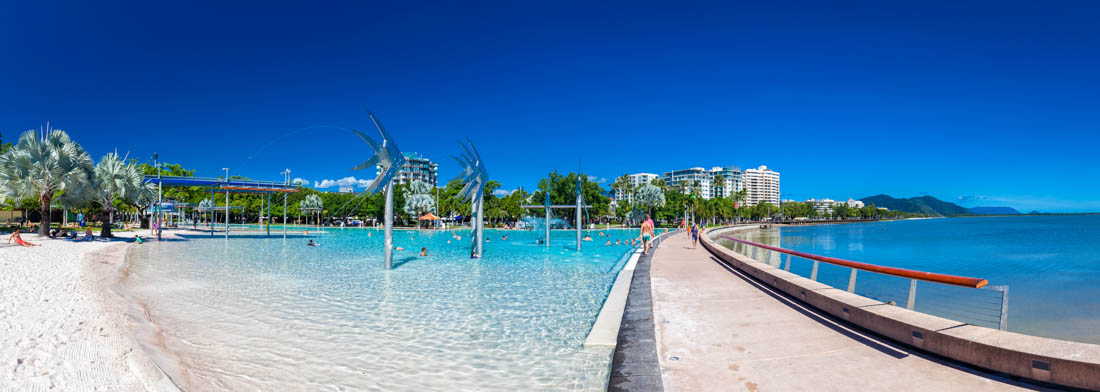
How much does a two week trip to Australia cost?
With two weeks, you should budget between $886 and $6,209 for your trip to Australia. The average price for a two week trip is $2,308. Two weeks will allow you enough time to visit between three and five places. If you're on a budget, you might want to consider some of the more affordable places such as Torquay, Newcastle, and Alice Springs.
How much does a one month trip to Australia cost?
When embarking on a month-long trip to Australia, expenses can range from $1,900 to $13,305, with an average cost falling around $4,946. For those fortunate enough to have a full month, considering a vacation rental with a kitchen for at least a portion of your stay can help save money with meals. Backpackers often opt for hostels due to their affordability and the added benefit of a social vibe.
Hostel Prices in Australia
With more than 210 hostels in Australia, the average price is $24 per night for a dorm bed. Hostels are a terrific option for younger independent travelers looking to save money while staying social during their trip. With many types of hostels, it can be overwhelming to sort out the best places, though. Our analysis of the hostels in Australia not only found the average price, but also uncovered some surprises about the overall quality, amenities, and atmosphere of hostels in the region. You can see more details from our analysis about typical hostel prices in Australia here .
Here are a few sample prices from popular hostels in Australia.
- $27 for a dorm bed at Wake Up! Sydney Central in Sydney more details
- $23 for a dorm bed at Flinders Backpackers Melbourne in Melbourne more details
- $28 for a dorm bed at Travellers Oasis in Cairns more details
Hotel Prices in Australia
You'll find a wide range of hotel options across Australia. Below are prices for some of the destinations, and for more details see our analysis of hotel costs in Australia .
Cambridge Cottages
Valentine on george.
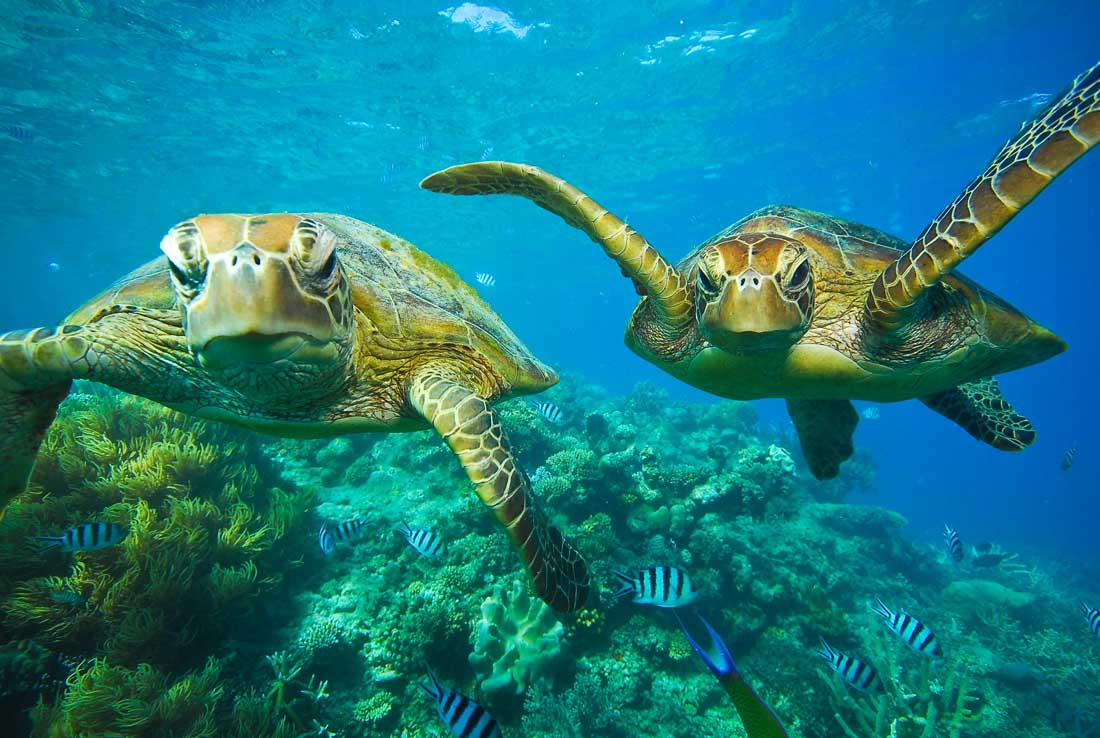
Should you do an organized tour or travel independently in Australia?
Organized tours are an easy and convenient way to visit Australia. All of the details are handled by travel experts, and during the trip you'll benefit from the knowledge of an expert guide.
Traveling independently offers freedom and flexibility that is hard to find on an organized tour.
Many travelers appreciate the convenience and ease that an organized tour offers. Many tours provide transportation and expert guides that help you enjoy your trip.
Alternatively, you'll enjoy freedom and flexibility with independent travel that is difficult to find with an organized tour.
Comparing Trip Costs in Australia
When we compare the prices of organized tours to the average costs of independent travelers, we can see that sometimes the prices are fairly even.
Tours vs. independent Travel: Pros & Cons
Organized tours.
- An expert guide familiar with the culture
- Convenient transportation
- Fellow travelers to socialize with
- Well researched activities
- Efficient and thought out itinerary
- The security of have a trip leader if something goes wrong
- Limited options
- Usually not customizable
- The fast pace often means you can’t visit one place in depth
- Usually more expensive than independent travel
- There may be limited time to interact with the local culture and community
Independent Travel
- Completely customizable
- Opportunity to visit off-the-beaten-path destinations
- Can fully immerse yourself in the local culture
- Freedom to move at your own pace
- Flexibility to change your itinerary at any time
- More affordable
- Challenging to plan an efficient itinerary
- Transportation may be challenging or inefficient
- Booking and trip planning can be a hassle
- Popular sights may sell out well in advance
- If something goes wrong, you're on your own
Are organized tours more expensive than independent travel in Australia?
Organized tours typically average around $308 per day and provide the convenience of an all-inclusive package with one comprehensive payment. On the other hand, independent trips usually average around $165 (AU$250) per day and involve individual payments for accommodations, local transportation, meals, and sightseeing. Both organized tours and independent trips have their own unique challenges and benefits, so it's crucial to thoroughly understand the aspects of each to make a fair comparison. For a detailed analysis of tour prices in Australia, check out our comprehensive guide on tour prices in Australia here .
Here are a few sample tours in Australia:
- Oz East Coast + Work 28 days ($2,999) 28 days, 12 destinations more details
- Tastes of Southern Australia (2025/2026, 11 Days) ($4,970) 11 days, 22 destinations more details
- Sydney to Cairns Best of Australia – 17 Day Boutique Comfort Tour ($6,599) 17 days, 20 destinations more details
- 3 Day Melbourne to Adelaide ($1,401) 3 days, 14 destinations more details
- 3 Day Great Ocean Road and Grampians ($1,597) 3 days, 11 destinations more details
More for Australia
If you're planning a trip to Australia, check out these other informative travel guides.
We've been gathering travel costs from tens of thousands of actual travelers since 2010, and we use the data to calculate average daily travel costs for destinations around the world. We also systematically analyze the prices of hotels, hostels, and tours from travel providers such as Kayak, HostelWorld, TourRadar, Viator, and others. This combination of expenses from actual travelers, combined with pricing data from major travel companies, gives us a uniqe insight into the overall cost of travel for thousands of cities in countries around the world. You can see more here: How it Works .
Subscribe to our Newsletter
Coupons and discounts! Travel tips!
1 Categories averaged on a per-item basis. 2 Categories averaged on a per-day basis. For example, the Food 2 daily average is for all meals for an entire day, while Entertainment 1 is for each individual purchase. Thus, the overall daily average cost is not a summation of the individual categories.
- You are welcome to reference or display our travel costs on your website as long as you provide a link back to this page .
- For a basic link, you can copy and paste the HTML link code, or this page's address. Address Link HTML Australia Travel Costs " disabled />

Some of the links on this website are sponsored or affiliate links which help to financially support this site. By clicking the link and making a purchase, we may receive a small commission, but this does not affect the price of your purchase.
- Privacy / Terms of Use
- Activities, Day Trips, Things To Do, and Excursions
Travel Financially Savvy: Calculating Your Australia Trip Budget
You’ve been dreaming of exploring the land down under, and now it’s finally time to make that dream a reality. Australia is a vast and diverse country with so much to offer, from stunning beaches and rugged outback landscapes to vibrant cities and unique wildlife. But before you pack your bags and hop on a plane, you need to figure out how much money you’ll need for your trip.
Coincidentally, budgeting for a trip can be overwhelming, especially when you’re not familiar with the local costs or what expenses you need to consider. You don’t want to be caught off guard by unexpected expenses or run out of money halfway through your adventure.
That’s why we’ve put together this guide to help you determine how much should be in your travel fund for your Australian journey. So grab a cuppa and let’s get started!
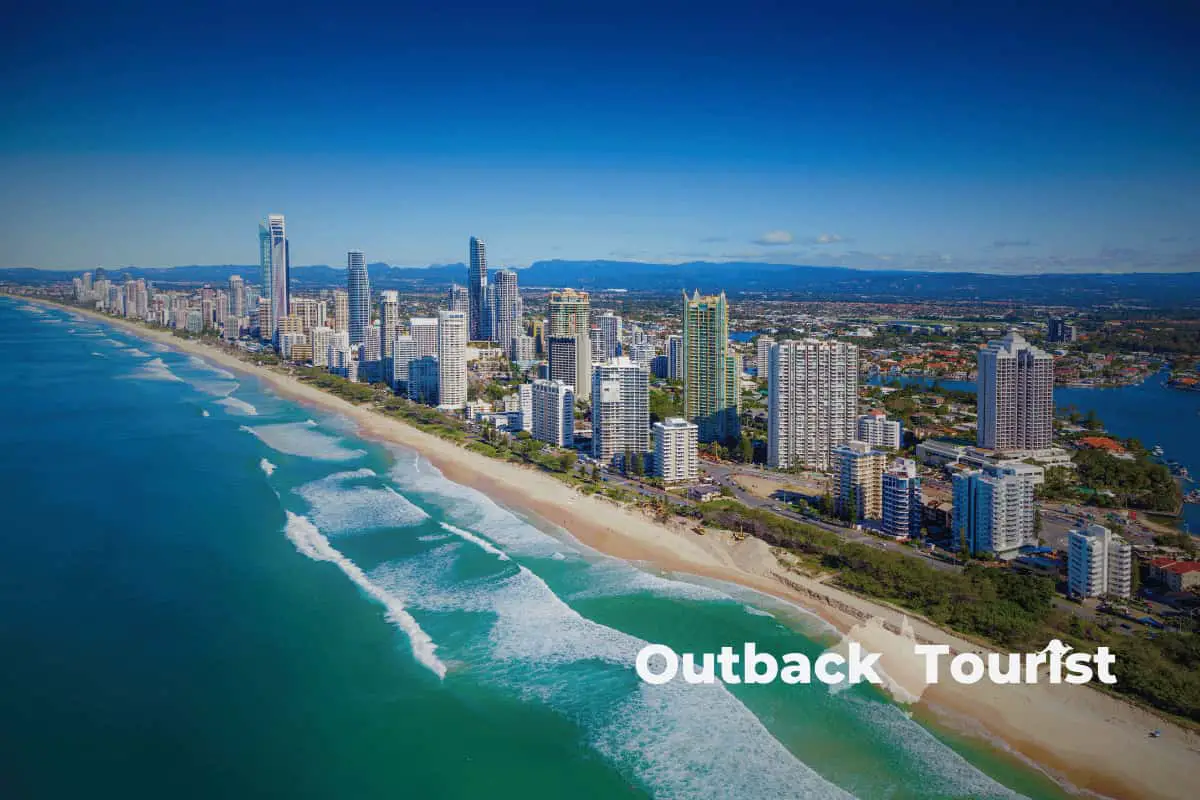
Determine Your Travel Style and Preferences
Determining your preferred travel style and personal preferences can greatly impact the amount of funds necessary for a successful Australian journey.
Are you someone who enjoys backpacking or do you prefer luxury travel? Backpackers typically spend less on accommodations, food, and transportation than those who opt for luxurious hotels and private tours. On the other hand, travelers who prioritize comfort and convenience may find themselves spending more money.
Another factor to consider is whether you prefer local experiences or tourist attractions. If you want to immerse yourself in Australian culture, visiting local markets and participating in community events will likely be more affordable than visiting popular tourist spots such as Sydney Opera House or Uluru-Kata Tjuta National Park. However, if these iconic landmarks are on your bucket list, expect to pay higher fees for entrance tickets and guided tours.
Ultimately, determining your preferred travel style and personal preferences is crucial when budgeting for a trip to Australia. By understanding your priorities, you can create a realistic budget that aligns with your goals and expectations.
Whether it’s backpacking through the outback or indulging in luxury retreats along the coast – there’s an option for every traveler within different price ranges.
Research Seasonal Pricing and Deals
Exploring the ebb and flow of seasonal pricing and deals can shed light on when to book your down-under adventure. Different destinations in Australia have different peak seasons, so it’s important to know where you want to go before researching prices.
For example, summer months (December – February) tend to be more expensive in popular destinations like Sydney and Melbourne, while winter months (June – August) are busier for ski resorts in Victoria and New South Wales.

Once you’ve compared destinations and decided when you want to travel, start looking for package deals. Many airlines offer discounts if you book a flight and hotel together, which can save you hundreds of dollars. Keep an eye out for sales during off-seasons or last-minute deals that may pop up closer to your travel dates.
Additionally, research any discounts available through student or military status, as well as loyalty programs with hotels or rental car companies. Remember that budgeting for a trip involves more than just flights and accommodations.
Make sure to consider the cost of activities, transportation within the country, food and drinks, visas (if necessary), travel insurance, souvenirs/gifts, and any other expenses that may arise during your trip.
By taking all of these factors into account while researching seasonal pricing and deals, you’ll be better equipped to create a realistic budget for experiencing all that Australia has to offer!
Plan Your Itinerary and Calculate Expenses
Now it’s time to plan out your itinerary and figure out the costs of all the fun activities you want to do while exploring Down Under!
First, consider your accommodation options. Do you want to stay in a hotel, hostel, or Airbnb? Each option has its own price range, so research and compare prices to find the best fit for your budget. Keep in mind that staying in a more central location may be more expensive but could save on transportation costs.
Next, think about transportation choices. Will you rent a car or use public transportation? Renting a car gives you more freedom but can also be costly with gas and parking fees. Public transportation is cheaper but may limit where you can go. Consider using a combination of both depending on your itinerary.
Once you have decided on accommodation and transportation, start planning out your activities. Make a list of must-see sights such as the Sydney Opera House or Great Barrier Reef. Research admission fees and any discounts available such as student or senior rates. Don’t forget to factor in food expenses as well.
Finally, add up all your estimated expenses and compare them to your budget. If necessary, adjust accordingly by cutting back on certain activities or choosing less expensive accommodation options. Remember that unexpected expenses can arise during travel so it’s always good to have some extra funds just in case.
With careful planning and budgeting, you can enjoy all that Australia has to offer without breaking the bank!
Consider Additional Costs and Expenses
Before you start packing your bags, keep in mind that there may be some unexpected costs down the road, so it’s important to have a little extra cash saved up for a rainy day.
One of these expenses is travel insurance. While it may seem unnecessary, it can save you thousands of dollars in medical bills or trip cancellations. Look into purchasing comprehensive travel insurance before your trip to Australia to ensure that you’re covered for any unforeseen circumstances.
Another potential cost to consider is souvenir shopping. It’s easy to get carried away with buying souvenirs and gifts for friends and family back home, but this can quickly add up. Set a budget for yourself before leaving on your trip and stick to it. You don’t want to end up overspending and not having enough money left over for other important expenses.
Lastly, don’t forget about transportation costs between cities or regions within Australia. While flights may initially seem expensive, they can actually be more cost-effective than taking multiple trains or renting a car. Do some research on different transportation options available and compare prices before making any final decisions.
By considering additional costs like travel insurance, souvenir shopping, and transportation expenses beforehand, you’ll be better prepared financially for your trip Down Under. Remember to set aside some extra cash just in case anything unexpected comes up during your travels – after all, it’s always better to be safe than sorry!
Create a Realistic Budget and Stick to It
Developing a practical financial plan and adhering to it is crucial for ensuring financial stability during your travels to Australia. Creating a budget that fits your needs and preferences can help you avoid overspending and make the most out of your trip without burning a hole in your pocket.
Here are some tips on how to create a realistic budget and stick to it:
- Determine Your Total Budget: Before you embark on your journey, decide how much money you’ll need for the entire trip. This includes airfare, accommodation, transportation, food, activities, and other miscellaneous expenses. Once you have a clear idea of what your total budget is, divide it into daily or weekly portions.
- Track Expenses: Keep track of all your expenses while traveling in Australia so that you know where every penny is going. You can use an app or spreadsheet to record all transactions easily.
- Adjust Budget: If you find yourself spending more than anticipated in one area (like accommodation), adjust your budget by reducing expenses elsewhere (like meals). Be flexible with your spending but ensure that it does not exceed what you have allocated.
- Stick To Your Plan: The key to making a travel budget work is sticking with it as closely as possible throughout the trip duration. Avoid impulse buys or unnecessary splurging by reminding yourself regularly of the plan set at the beginning of the journey.
By creating a practical financial plan and following these tips mentioned above, you can enjoy an incredible adventure across Australia within reasonable limits without worrying about running out of funds halfway through the trip!
So there you have it, mate! Planning a trip to Australia doesn’t have to break the bank.
By determining your travel style and preferences, researching seasonal pricing and deals, planning your itinerary and calculating expenses, considering additional costs and expenses, and creating a realistic budget (and sticking to it!), you can enjoy all that Australia has to offer without sacrificing your financial wellbeing.
Remember to keep an open mind when it comes to accommodations, transportation, and activities. With some creative thinking and flexibility, you might be able to save some extra cash while still having an unforgettable adventure down under.
So why wait? Start planning your dream trip today!
Download this cheat sheet to optimize underperforming posts on your website.

Australia Trip Cost: Pricing for Flights, Food & Accommodation
Plan your Australia trip with our comprehensive guide on flight, food & accommodation costs. Get tips on budgeting for an unforgettable experience.

Australia is famous for tropical beaches, wide-country spaces, Aboriginal culture, and lush rainforests. The country has so many beaches that it will take 27 years to visit, one per day. However, you'd want to know what a visit will cost you before you visit.
A one-week vacation in Australia costs an average of $2579 per person, including $1200 for your return flight. A solo traveler will spend an average of $197 per day on expenses. This average cost includes food, accommodation, local transportation, and other activities throughout your stay in Australia.
Australia is large and expensive, but it offers visitors much value. The rest of the article will provide a detailed breakdown of travel costs. Read on also to find tips on how to save money vacationing in Australia.
How Much Money Should You Take For A 7-Day Trip to Australia?

Accommodation, food and drinks, and tours are the big spenders after flight tickets. A reasonable amount of money you need to take on a 7-day trip to Australia is around $2,579-$3,000 .
This average amount should cover your round trip and afford you mid-range accommodation. Mixing up your eating styles by eating out a few nights and cooking some meals yourself is also more affordable.
Tours are expensive in Australia, and the least amount you can spend is $92.81 for the barrier reef snorkel tour. Budget spenders can always opt for other sightseeing activities such as a $15 surfing museum, a $65 surf lesson, and a $23 Sydney tower visit.
Intercity travel alone can be as expensive as $150. However, you can save by focusing on one city at a time. You can take advantage of some free activities like visiting the beach, the Sydney opera house, and botanical gardens.
Traveling To Australia On A Budget

You can take a 7-day trip to Australia on a budget of $1050, but this comes with several lifestyle changes. If you can soldier through the inconveniences of taking standby flights, you can get a round trip to Australia for around $621.
Take advantage of Australia's dense network of campgrounds for lodging. There are free campsites all over Australia, and most of them are budget friendly . These camps have basic facilities and are mostly located in areas with relatively low costs of living.
Pick campsites in central locations so you can easily walk to the beaches. If traveling with friends, you can rent a campervan for between $100-$200 per day to visit more scenic locations.
Related Read: Best Time to Visit Australia
Basic Expenses On A Vacation To Australia
Before packing your bags for an Australia trip, creating a detailed budget for everything you'll need to spend on your trip is crucial. To enable you to create an accurate budget, here's an item-by-item breakdown of everything constituting the total cost of your Australia trip.
1. Flight Tickets

Flight tickets are one of the most significant expenses on your journey, taking away a substantial chunk of your budget. The price of flight tickets may vary depending on several factors, such as the peak season, the day of the flight, and booking in advance.
The average cost of a round trip to Australia is $1200. However, this cost increases to $2100-$2900 from late December to January and decreases to $1100-$1200 from late August to early September . Collected data shows that Tuesdays are the cheapest days to fly to your destination and back.
Many travelers found that booking their flights at least 60 days before departure is cheaper than booking within 72 hours. Australian flight tickets are expensive because of the limited number of airlines and the lack of competition.
2. Accommodation

Accommodation is right on the heels of your flight tickets, also contributing significantly to your travel costs. Australia has a range of accommodation styles, such as hostels, hotels, Airbnbs, and vacation rentals.
Hostels are mainly found on the East Coast and include several options for different budgets. There are 12- bed shared dorms that cost between $25-$50 or ensuite rooms and private rooms for a slightly higher budget .
Hotels also offer different styles for different budgets. From the real-life experiences of many travelers, the average cost of a 1-star hotel is $50. 2-star- 5-star hotels cost $70, $80, $120, and $240, respectively.
Airbnb and vacation rentals offer a unique and comfortable option. They cost hundreds of dollars, from $100 to $1000 above. Although this is the most expensive option, they typically offer top-notch facilities to make your stay as comfortable as possible.
The prices of accommodation fluctuate with the city, length of stay, and season of visits, such as Christmas or New year. You can always cut the overall cost of accommodation by not ordering your meals from your hotel.
Related Read: Does it Snow in Australia?

As usual, food in Australia serves every budget, but the cost of a single meal will depend on your eating style. For example, eating out in some restaurants can be more expensive than cooking, and fine dining is usually more expensive than fast/street food.
Breakfast is cheaper than lunch and dinner, and some restaurants offer meal deals and discounts. The average breakfast cost is $20, while the main meal has a mid-range of $25-35 or an upper range of $35-$45. On the other hand, a MacDonald's meal costs just about $5-$7 .
Alcohol is costly in Australia because the government heavily taxes alcoholic drinks. The average beer cost in a bar is $5-$8, a glass of wine is $10 above, and cocktails cost $15. However, you can buy a box of Goon at $10-$15 if you don't mind cheap boxed wine.
4. Transportation

Australia is a country and a continent that is considered the most significant island and sixth largest country on earth. Its large cities and structures mean that it has several tourist attractions and beautiful sightseeing locations.
Taxis are more expensive than public transportation, and car rentals are also available . Here are all the options available to you and what you can expect to pay for each.
- Taxi: Transportation is cheaper in smaller cities like Melbourne and expensive in bigger cities like Sydney. The average cost of a 20-minute taxi ride is $21.20 in Melbourne and $27.70 in Sydney. The waiting time is $34.00 in Melbourne and $56.68 in Sydney.
- Public Transportation: Although public transportation is cheaper than taxis and car rentals, the fares are still pretty expensive. Australia is the second country in the world with the highest public transit at $104.52 per month. A single bus fare in Sydney is around $1.39-$2.99.
- Trains: The Ghan and Indian Pacific provide train services between Australian cities. The Ghan travels between Adelaide and Darwin, while the Indian Pacific travels between Sydney and Perth. The average single train fare is between $2.32-$5.76.
- Ferries: Several ferries connect locations along Sydney harbor, Swan River in Perth, and Brisbane River. The single average fare of a ferry is between $3.98-$4.97
- Greyhound Buses: The most popular transportation network covering the East Coast, Red center, Northern Territory, and parts of the West Coast. This bus network offers unlimited travel for up to 30-90 days within a limited time frame. The average bus fare for a 7-day vacation is around $199.
- Car Rentals Services: Renting a car will enable you to explore the many attractions and avoid the limitations of other means of transportation. The average cost of car rentals is $35 per day and depends on the location, the type of car, and your booking four weeks in advance. Since the requirements are not uniform in all areas, remember to make inquiries. For individuals looking for a convenient way to travel around Australia, considering a private jet charter with The Air Charter Group might be a good choice. This service provides comfort and luxury, while also helping to save time that you might spend dealing with the schedules and crowds associated with commercial flights. Particularly useful for those wishing to explore multiple locations across Australia's extensive territory, opting for a private charter could enhance your travel experience, giving you more time to enjoy the beautiful destinations in Australia and less time traveling.
- Travel Insurance: Travel insurance when going overseas is as essential as breathing. In the event of an accident or getting robbed, you will prevent yourself from significant financial loss with travel insurance. There's no fixed price; therefore, compare quotes from different agencies to get the best price.
Also, if you're planning to take long road trips, you may want to consider getting comprehensive car insurance from a company like ROLLiN' to give you peace of mind when on the road.
Related Read: 25 Fun Things to Do on a Long Flight

Australia has an extensive network of tourist attractions that are impossible to avoid. Some favorite big-name travel spots include the Sydney harbor bridge, the Great Barrier reef, dolphin kayaking, etc.
Taking tours around the big-name travel spots can get pretty expensive, costing several hundred dollars per tour . The following list will give an idea of how costly these tours can be.
- A tour of the Sydney harbor bridge costs $243.95
- A snorkeling tour at the great barrier reef costs $92.81
- Fraser Island 4×4 tour costs $310.91
- The Budget open dive boat costs $460.73
Tips To Save Money On Your Australia Trip
Australia is a tourist haven with its beaches, deserts, and rainforests. It is a vast land so large it has three times more sheep than people, which makes it expensive.
However, visiting Australia doesn't have to be as costly as you think, especially when you know what costs to avoid and what costs not to. Here's a brief review of some money-saving tips to help you save money on your next trip to Australia.
1. Travel Off-Peak Season

You will save a lot of money when you plan your trip away from Australia's peak season. Australia is not a summer destination because there's competition for flights and accommodation, which makes the rates go high.
Fall (March to May) and winter (June to August) are the best time to visit Australia. During this period, flights are cheaper, and hotels offer the lowest price on accommodation, especially in June . Even with the snow in some areas, you will still enjoy Australia's vast deserts, waterfalls, and beautiful beaches.
Related Read: Best Time To Visit Indonesia
2. Take Self-Guided Tours

There are free attractions like the botanical gardens, the Sydney opera house, and the beaches. Australia is also easy to navigate, with car rentals to the Northern Territory Outbacks for as low as $25. While there, visit Katherine to see interesting sights like the Jatbula trail, limestone cutta cutta caves, and hot springs.
The Gippsland lakes are over 600 square kilometers of lakes, lagoons, and marshes with exotic bird species, koalas, and dolphins. Swimming and fishing at Agnes Falls, Toorongo, and Amphitheater Falls are great tourist activities. Hutt lagoon is a stunning lagoon that changes colors from soft pink to lilac and sometimes red.
You can also rent a car for $52 a month to visit Fraser Island, the largest sand island. Or you can drive down from Cairns to the lush Daintree rainforests for $35 a month. There are several more tourist attractions, and all you need to do is look out for deals on car rentals .
3. Try Walking

Australia has many well-maintained footpaths along coastal cliffs, urban laneways, and parklands you explore. Some of the world's longest tracks and trails are in Australia .
Tasmania is a world heritage-listed wilderness; you can explore the overlands there. Or you can explore the Northern Territory through the Larapinta trail across the West MacDonnell ranges.
4. Cook Your Meals

Food prices in Australia take out the bulk of your money. Cooking your meals will save you a great deal of cash, especially when you stay in hostels.
Go shopping at supermarkets to get the best deals out of your shopping. The best time to shop is at the end of the day when supermarkets offer up to 50% discounts, especially on fresh products . Local markets also offer good product deals towards the end of the day.
Sydney, Melbourne, and Hobart organize "giving away food" events cooked from unsold products at supermarkets. You can attend these events to get a free meal.
5. Book Your Flight in Advance

No matter your destination, booking your flight 1-3 months from your journey is a great way to save money. When making travel arrangements, remember that traveling midweek to Saturday is usually cheaper than Sunday to Mondays.
Always remember to change your browser to incognito when booking your flight. Websites use cookies that can tell you just checked flight prices, increasing costs . Finally, book accommodation, tours, and other services in advance to ensure you get cheaper deals.
73 Basic Dutch Phrases for Your Next Trip to Netherlands 🇳🇱
Learn essential Dutch phrases for a smooth trip to the Netherlands. Perfect for travelers looking to connect with locals and enrich their experience.
Win a $500 Flight!
Embark on the adventure of a lifetime! Enter our Dream Journey Sweepstakes for a chance to win a $500 travel voucher, redeemable with any major US airline. Whether it's sandy beaches, bustling cities, or tranquil mountains, your dream destination is just an email away!*

Is Compass Airlines Safe? Uncovering What Every Traveler Must Know
When you're planning your next trip and considering flying with Compass Airlines, it's natural to wonder about their safety record. After all, ensuring a safe journey is at the top of everyone's list. But diving into the world of airline safety can feel like navigating through a maze. Don't worry; we've got you covered.

Is Tigerair Safe? Unveiling What Seasoned Flyers Really Think
When you're planning your next getaway, safety is always at the top of your mind, especially when it comes to choosing an airline. You've probably come across Tigerair in your search and wondered, "Is Tigerair safe?" It's a valid question that deserves a closer look.

Is Jetstar Safe? Unveiling the Truth for Nervous Flyers
When it comes to flying, safety is always your top priority. You might've heard a lot about Jetstar, the popular budget airline offering flights across Australia, New Zealand, and the Asia-Pacific region. But amidst the chatter and deals, you're probably wondering, "Is Jetstar safe?"

Is Virgin Australia Safe? Unveiling the Truth Behind Your Flight's Safety
When you're planning your next adventure down under or jetting off on a business trip, the airline you choose is a big deal. Safety, of course, is at the top of your checklist. You might be wondering, "Is Virgin Australia safe?" It's a valid question, especially when you're about to spend hours in the sky.

Is Qantas Safe? Discover Why It's the Top Choice for Nervous and Aspiring Travelers
When you're jetting off to your next destination, safety is always at the forefront of your mind. And if you're considering flying with Qantas, you're likely wondering how safe it really is. With its kangaroo logo symbolizing home to many Australians, Qantas has built a reputation that's recognized worldwide.

Uncover Hidden Gems: Best Places to Visit in September for a Perfect Escape
September's the sweet spot for travel. It's when the summer crowds thin out, but the weather's still nice. You get the best of both worlds: fewer people and great days to explore. Imagine walking through a city or hiking a trail without bumping into tons of tourists. Sounds awesome, right?

Top March Getaways: Explore Lake Bled, Chefchaouen, and Secret Festivals
March is a great time to shake off the winter chill and dive into some fun travels. As the snow melts and flowers start peeking out, there's a whole world out there waiting for you to explore. Whether you're into sunny beaches or cool city vibes, March has got something special for everyone.

Top 10 Best Places to Live in Australia: Ultimate Guide for Everyone
Thinking about making a move Down Under? You're not alone. Australia's got a bit of everything, from bustling cities to quiet, beachy towns. But with so many options, finding your perfect spot can feel like looking for a needle in a haystack.

Best Time to Visit Sydney: Seasonal Secrets for an Epic Beach Trip
Deciding when to visit Sydney can be tricky, but don't worry, you've got this! Sydney, with its stunning beaches and buzzing city life, is a must-visit at any time of the year. But to get the most out of your trip, timing is key.

Moving to Australia from USA Checklist
Moving to Australia from the USA? Our checklist covers living, working, visas, and healthcare tips for expats. Make your transition smooth and informed.

Does it Snow in Australia? (Average Snowfall and Temperature Per City!)
Explore snow in Australia: average snowfall, temperatures per city, best ski resorts, and rare snow events in Melbourne and Sydney. Perfect for potential travelers.

Best Time to Visit Australia ( Best Time for Wildlife & Exciting Events)
Plan your trip with our guide on the best time to visit Australia for wildlife sightings and exciting events. Perfect for potential travelers!

10 Brilliant Beach Cities to Live in before you die!
Experience the ultimate blend of city life and beach bliss in the top 10 beach cities worldwide. Perfect for travelers seeking the best of both worlds.
You may also like...

Best Time to Visit Lithuania for Seasonal Adventures & Local Festivals
Planning a trip to Lithuania and wondering when's the best time to go? You're in the right place. Lithuania, with its stunning landscapes and rich history, offers a unique experience no matter the season. But, if you're looking to make the most of your visit, timing is key.

Best Time to Visit Hungary: Seasonal Secrets for an Authentic Experience
Deciding when to visit Hungary can be tricky, but don't worry, we've got you covered. This beautiful country shines in every season, but knowing the best time to go can make your trip even more special.

Best Time to Visit Estonia: Discover a Winter Wonderland Like a Local
Deciding when to visit Estonia? You're in for a treat, no matter the season. But if you're looking for the best experience, timing is key. This Baltic gem offers something unique with each season, from white winters to sunny summers.

Best Time to Visit Armenia: Winter Wonderland & Cultural Fests Unveiled
Deciding when to visit Armenia? You're in for a treat! This hidden gem has got it all - from cool, snowy winters to warm, sunny summers. But to get the best out of your trip, timing is key. Let's dive into when's the perfect moment to pack your bags for Armenia.

Best Time to Visit Havana: Seasonal Guide for Cultural Festivities
Planning your dream trip to Havana? You're probably wondering when's the best time to pack your bags and go. Well, you're in luck because we've got the inside scoop to help you make the perfect choice.

Best Time to Visit Oaxaca: Uncover Seasonal Secrets & Local Celebrations
Deciding when to visit Oaxaca? It's all about finding the perfect balance. You want great weather, fewer crowds, and lots to do, right? Well, you're in luck because Oaxaca has got it all, but timing is key.
The travel site inspired by travelers and locals alike. Find amazing destinations, unique trip ideas, the best hotels, and most comfortable resorts.

How Much Does It Cost To Travel Australia? A FULL Budget Breakdown (2023)
Trying to figure out how much it costs to travel Australia? Well here’s a full Australia budget breakdown – inc accomodaiton, tours, transport and more!
Planning a trip to Australia ? Trying to figure out how much does it cost to travel Australia?

No worries – I’ve got you covered!
I’ve lived, worked and travelled in Australia more than any other country I’ve visited since hitting the road back in 2009 – in fact Byron Bay is my second home in terms of total time living there!
I know planning a trip to Oz can be daunting – it’s a long way away, it’s not the most budget friendly place, there’s a lot of ground to cover and sooooooo much to see an do!
So to help you figure out how much your trip to Australia will costs here’s a rundown of all the major things you’ll encounter – including food, drink, transport, tours, accommodation and more…
LAST UPDATED Jan 2023 – a lot of stuff has changed around and increased for travel from 2023 onwards, so I’m doing my best to keep this as updated as possible!
(Just FYI, all prices below are in $AUD)
How Much Does It Cost To Travel Australia In 2023?
Greyhound bus.

Easily the most popular way to travel around Australia the Greyhound Bus network covers the whole of the East Coast as well as the Red Centre, Northern Territory and parts of the West Coast too.
They’ve recently revamped the Greyhound Australia Bus pass range and there are now 2 main options; the WHIMit and the East Coast Passes .
The WHIMit covers the entire Greyhound Australia network, whilst the East Coast is the Melbourne to Cairns Route.
Both included unlimited travel and are only limited by time frame – up to 90 days for the National WHIMit and 30 days for the East Coast WhimiT
- 7 Day Greyhound East Coast Pass = $249
- 15 Day Greyhound East Coast Pass = $319
- 30 Day Greyhound East Coast Pass = $389
- 15 Day Greyhound WHIMIT Pass = $349
- 30 Day Greyhound WHIMIT Pass = $439
- 60 Day Greyhound WHIMIT Pass = $499
- 90 Day Greyhound WHIMIT Pass = $629
Premier Bus
Not as popular as the Greyhound but even more budget friendly, the Premier Bus Passes are a great alternative for those travelling the East Coast and who want to be more budget conscious. Again like Greyhound they’re 3 months, but extendable to 6 if you need longer, however they don’t cover the Sydney to Melbourne section.
- Sydney to Cairns Pass = $330
- Sydney to Cairns Pass (1 Month Pass) = $230
- Brisbane/Byron Bay to Cairns Pass = $242
Check out all the Premier Passes here
Campervan Hire

My favourite way to travel around Australia! Even though campervan hire in Australia isn’t the cheapest it’s certainly the most fun and flexible way to get around, especially if you’re travelling as a couple or small group of friends. The cost of campervanning Australia varies heaps depending on your route, time frame, campervan model and of course the season – so the further in advance you book it the better.
Expect to pay from $60AUD per day though, with rates much higher in the peak, summer season, around $110+ per day
For an epic Campervan deal in Australia click here
Accommodation

The most budget friendly and popular accommodation option for the East coast is shared hostels dorms – varying from super flash packer 4 bed A/C ensuite rooms (such as Byron Bay YHA) right through to super budget 12 bed dorms that are certainly less comfortable, but easier on the wallet!
They vary from $25-65 per night – however this can fluctuate quite a bit depending on the location, season, length of your stay and also any key events.
The best advice I can give you is go with a $40 night average as a ball park figure but also check out the latest rates if you’re aiming for peak season or stuff like xmas/NYE in Sydney as this will massive effect how much it cost to travel Australia.
Some of my favourite hostels include;
- WakeUp! (Sydney and Byron Bay)
- The Surf House (Byron Bay)
- Aquarius Backpackers (Byron Bay)
- Halse Lodge Noosa
- Nomads Airlie Beach
- Nomads Magnetic Island (Magnetic Island)
- Jackaroo Treehouse (Mission Beach)
- Gilligans (Cairns)
If you’re keen on a bit more privacy and comfort, but not wanting to splash out on full on hotels then I also highly recommend the private rooms at YHA hostels.
As you might expect hotels in Australia are definitely a step up budget wise, but there is a HUGE range of styles catering for most budgets. Honestly though I couldn’t put a price on them as you could spend $100 a night to $1,000s – so best to check out somewhere like Booking.com and smash in your personal preferences and budget!
Another popular option now is AirBnB and you can get some real unique and comfortable options all over the coast. It’s great for couples or families (but there’s no restriction) and the perfect way to go if you want to treat yourself during your trip too!
Click here for $37 off your first booking!
Food & Drink
As with pretty much everywhere in the world eating out in Australia will really impact your budget – but there is a huge variety of restaurants and bars you can grab food at, from low cost feeds to award winning dinning.

If you are going to eat out and don’t want to break the bank many bars, restaurants and hostels offer discount meal deals – including backpacker deals too. So if you want to eat on the cheap but don’t fancy cooking check out some of these options;
- Queen Victoria Market (Melbourne)
- Sidebar/WakeUp (Sydney
- Dominoes $5 Pizza
9/10 times cooking is going to be the best option for your budget in Australia and you can slap together everything from 50 cent noodles $4.50 veggie pasta right through to whatever dishes from home you’re missing. Coles , Woolworths and ALDI are dotted all the way across Australia so get your cooking skills on the go!
If there’s one easy way to make the cost of travelling Australia expensive it’s by partying! So how much will booze add to your daily budget?!
- Beer in a bar = $5-8
- Beer from a bottle shop = $5
- Glass of wine = $10+
- Wine from a bottle shop = from $5
- Cocktails = $15+
- Box of goon (cheap boxed wine) = $10-15

There is so much to see and do along the East Coast of Australia, so it would be almost impossible to list it all – however here are some of my top picks for the best trips and tours to do so you can figure out how much it cost to travel Australia with all your plans!
- Sydney Harbour Bridge Climb =from $368
- Spot X Surf Camp = from $279 (2 night package)
- Surf Lesson in Byron Bay = $80
- Dolphin kayaking = $89
- Noosa Everglades Canoe Tour = $150
- Fraser Island Overnight 4×4 Tour = $499
- Fraser Island Day Trip = $180
- Whitsunday Islands Overnight Sailing Adventure = around $499 – $599
- Whitsunday Islands Day Tour = $180
- Magnetic Island Package = $140
- 15,000 foot skydive = around $349
- Barrier Reef Snorkel Tour = $195
- Barrier Reef Intro Dive = $245
- Budget Open Water Dive Course = $799
- Overnight Dive Boat = $575 (2 day/1 night inc 7 dives)
- Melbourne Intro Tour = from $399 (4 day option)
Check out RTW Backpackers for everything you need tour wise in Australia by clicking here
Budget For A Month In Australia
Ok so now for the big reveal! How much does it cost to travel Australia and how much do you need to budget for a month in Australia ?
We based on my calculations and taking into account the main trips, tours and style people travel the East Coast….
A month travelling Australia will be around $4,150
Or $138 per day.
This then includes;
- 30 nights accommodation (shared dorm)
- 30 day Greyhound WHIMit Pass
- Surf lesson
- 3 day/2 night Fraser Island 4×4 Safari
- 2 night Whitsundays Sailing Adventure
- Magnetic Island Package
- Barrier Reef Snorkel Tour
- Around $30 per day for food and drink
Obviously this is just a rough guide – you can easily make it more expensive by staying in hotels, private rooms, partying heaps or adding in loads of extra tours and on the other hand you can also make it cheaper by staying at more budget friendly hostels, cooking budget food and skipping out on bigger trips and tours.
But that $4,150 is a good starting point on what you’ll be looking at spending on a month on the East Coast of Australia.
Have you travelled Australia before?
What was your budget, related posts.

Surf Lakes Yeppoon Wave Pool – What’s It Really Like?

Scuba Diving Byron Bay – Everything You Need To Know (+ Promo Code!)

URBNSURF Wave Pool – Which Wave Option Should You Choose?

URBNSURF Wave Pool Melbourne – Everything You Need To Know
Leave a reply cancel reply.
Your email address will not be published. Required fields are marked *
I am planning to travel to Australia, i will be visiting my friend who moved to live there two years ago and i also want to make it my vacation,i iwll reduce my cost since i will be staying at her house, but now i can estimate other costs. Thanks for sharing
No worries, stoked it’s helped you out and awesome news you’ll be crashing with friends – that will save you heaps!
- Car Rentals
- Airport Transfers
- Attractions & Tours
- Flight + Hotel
- Destinations
- Trip.com Rewards
Australia Travel Cost: How Much to Budget for an Unforgettable Adventure - Trip.com

by Trip.com
February 28, 2023
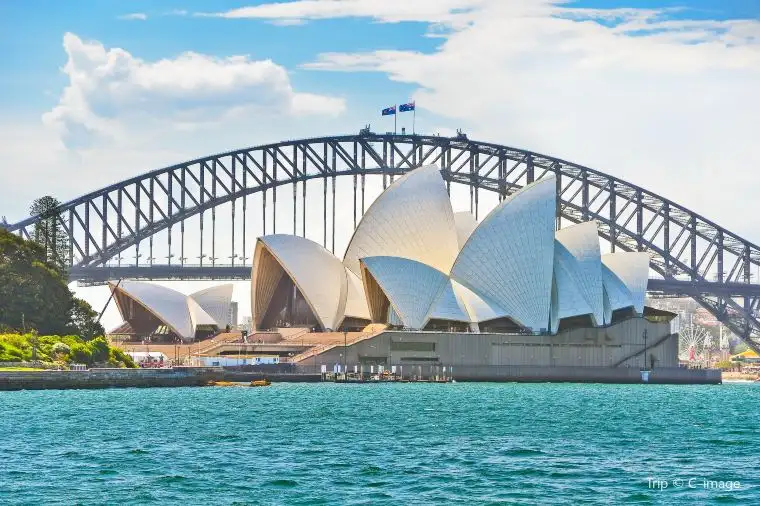
Sydney Attraction - Sydney Opera House / Source: Trip.com
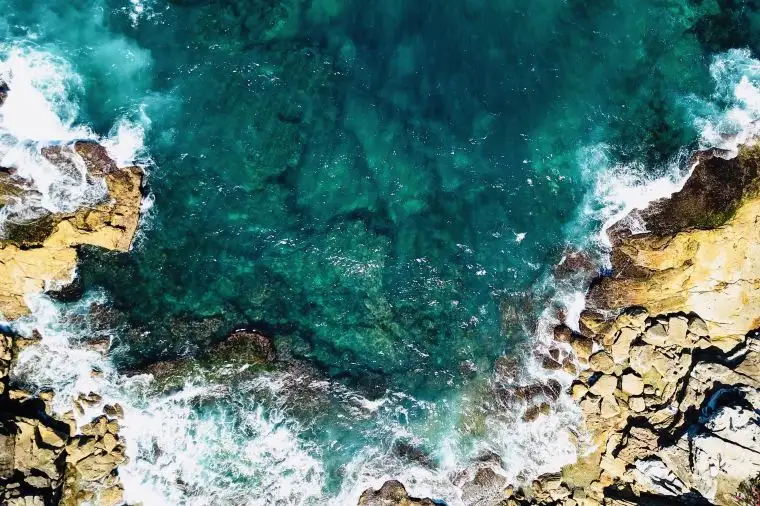
Sydney Attraction - Bondi Beach / Source: Trip.com
Australia Travel Cost Overview
Generally, you can expect to spend around AU$1,400 (USD $945) for a 7-day trip to Australia, including the cost of accommodation, transportation, food, sightseeing, and car rental.
** Note: Actual costs may vary depending on individual preferences and travel choices. **
- Flying from Nashville: tickets for around $2,383 one-way or $2,281 round-trip.
- Leaving from Boston: tickets for around $1,393 one-way or $2,497 round-trip.
- Flying out of Chicago: tickets for around $1,521 one-way or $2,629 round-trip.

Sydney Tower Eye / Source: Trip.com
👉 Of course, these prices are just estimates, so it's always a good idea to do your own research and shop around for the best deals. But hopefully, this gives you a rough idea of what to expect when it comes to the cost of flights to Australia.
Flights from New York to Sydney ✈️

- Sort by: Lowest Price
- Sort by: Earliest Flight

Crossed out prices are calculated based on the average price of the corresponding route on Trip.com.
Flights from Los Angeles to Sydney ✈️

Useful information about Flights to Australia ❗️❗️
- Los Angeles to Sydney takes 15 hours direct and just shy of 16 hours to Melbourne
- Dallas to Sydney takes 17 hours, while Houston to Melbourne is 20.5 hours
- Most international flights to Australia arrive at major airports in Sydney, Melbourne, or Brisbane.
- Australia's peak travel season is December to February, so expect higher ticket prices and more crowded airports during this time.
How to save money on flights?
- Compare flight times and airlines to find the cheapest overall option.
- Book your flight 12 weeks in advance to get the best deals.
- Join an airline loyalty program to earn rewards and discounts.
- Use airline miles or credit card points to travel at discounted prices .
- Take advantage of AARP membership to save up to $65 per person, per round-trip in economy
Accommodations
** Note: Prices may vary depending on location, season, and availability. **
Best Hotels in Sydney 🏨
Hilton sydney, meriton suites kent street, sydney, the fullerton hotel sydney, sofitel sydney darling harbour, radisson blu plaza hotel sydney, business travel, sofitel sydney wentworth, the tank stream sydney, an evt hotel, mercure sydney liverpool, the miller hotel north sydney an evt hotel, mantra parramatta, family friendly, yehs hotel sydney qvb, amora hotel jamison sydney, meriton suites sussex street, sydney, nomads sydney, yehs hotel sydney harbour suites, best hotels in melbourne 🏨, stamford plaza melbourne, grand hyatt melbourne, next hotel melbourne, curio collection by hilton, w melbourne, hyatt centric melbourne, atlantis hotel melbourne, crowne plaza melbourne, an ihg hotel, brady hotels central melbourne, intercontinental hotels melbourne, an ihg hotel, hotel grand chancellor melbourne, ibis melbourne central, ibis styles kingsgate hotel, novotel melbourne on collins, doubletree by hilton melbourne, jasper boutique hotel, transportation, how to save money on transportation.
- Another way to save money is to book hotel rooms for peak season in advance. This can help to get rooms for AU$150 to AU$250 in posh hotels.
- Alternatively, you can seek other options such as camping or hostels for accommodation. This can help to save money.
- You can also get an Opal Card which is free and can be purchased at the airport, train stations or any newsagent shop.
Sightseeing and Attraction Ticket
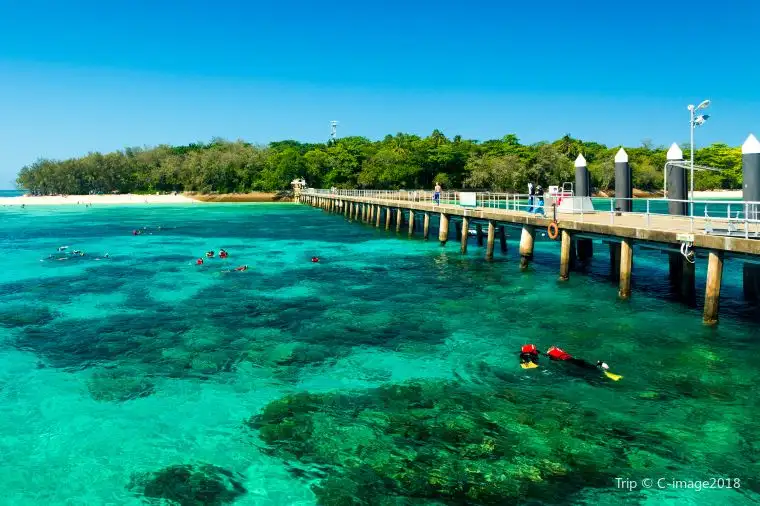
Cairns Attraction - Green Island / Source: Trip.com
Must-go Attractions in Australia 📍
>> SEA LIFE Sydney Aquarium Admission Ticket
>> Sydney Tower Eye Admission Ticket
>> 【Melbourne Attraction】Werribee Open Range Zoo Admission Ticket
How to save money on sightseeing in Australia 😳 ?

Sydney Attraction - Darling Harbour / Source: Trip.com
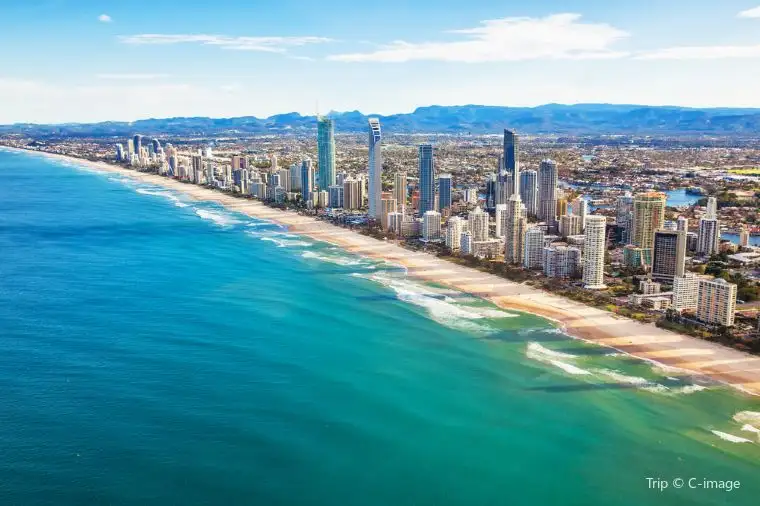
Gold Coast beach / Source: Trip.com
Wi-Fi and Communications
- Optus WiFi plans start as low as $45 per month
- Exetel's Everyday NBN Broadband Plan is $53.95 per month for the first 6 months and then $64.95 ongoing
- Aussie Broadband, Vodafone, iiNet, Kogan, iPrimus, and Telstra offer plans with higher speeds, such as NBN 250 or NBN 1000, for a higher cost
Trip.com SimCards

Prepaid Voice and Data simcards / Source: Trip.com
The best ways to buy cheaper souvenirs
- Australia's No. 1 Souvenirs & Gift Store
This store offers a variety of souvenirs at affordable prices, such as Kangaroo Clasp Pins for $12.99, Traditional Boomerangs for $24.99-$29.99, Cling Koalas With Vest 12 Pack for $9.99, Dot Kangaroo Black Folding Shopper Bag for $5.99, and Green & Gold Australia T-Shirt for $24.99.
- Shop at local markets
Local markets are a great place to find unique and affordable souvenirs. You can often find handmade items like jewelry, art, and crafts that are not available in tourist shops. Markets like the Queen Victoria Market in Melbourne and the Rocks Market in Sydney are great places to start.
- Buy from discount stores
Discount stores like Kmart, Target, and Big W offer a range of souvenirs at affordable prices. You can find items like t-shirts, keychains, and magnets with Australian designs at a fraction of the cost of souvenir shops. Look for stores near popular tourist areas.
Travel Insurance
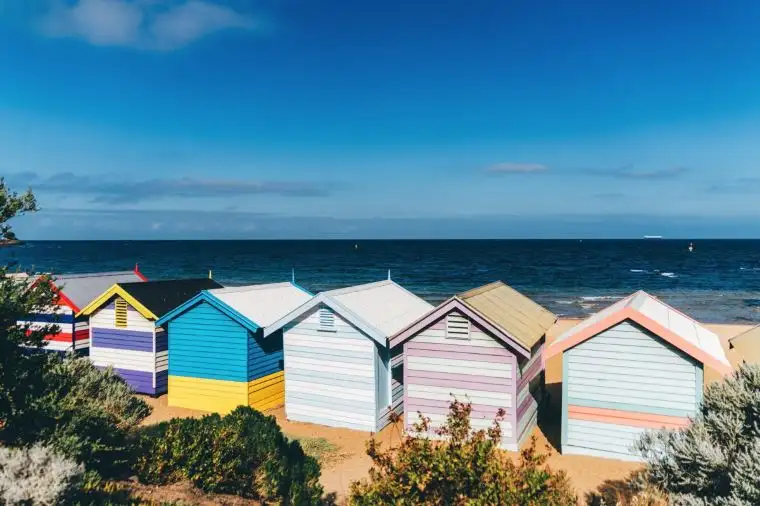
Brighton beach / Source: Trip.com
Why do you need travel insurance when traveling to Australia?
- Medical Emergencies
- Trip Cancellation
- Baggage Loss

Travel insurance / Source: Anete Lusina @ unsplash
How much does travel insurance cost when traveling to Australia?
- Factors that affect travel insurance cost
- Sample costs for travel insurance to Australia
Here are some sample costs for travel insurance to Australia:
- A 30-year-old traveler taking a two-week trip to Australia with basic coverage can expect to pay around $50-$80.
- A 50-year-old traveler taking a four-week trip to Australia with comprehensive coverage can expect to pay around $200-$300.
Travel Tips
Plan your itinerary
- Australia is a large country with many destinations to explore, so it's important to plan your itinerary in advance. Research the places you want to visit and the activities you want to do, and allow plenty of time to get around.
Prepare for the climate
- Australia has a diverse climate, with hot summers and mild winters in the north, and cooler temperatures in the south. Be sure to pack appropriate clothing for the climate, including a hat and sunscreen to protect yourself from the strong Australian sun.
Take out travel insurance
- As mentioned earlier, it's important to take out travel insurance to protect yourself from unexpected events such as medical emergencies, trip cancellations, and baggage loss. Compare policies and choose one that suits your needs and budget.
Respect the culture
- Australia has a rich and diverse Indigenous culture that should be respected. Learn about the local customs and traditions, and be mindful of cultural sensitivities.
Be aware of wildlife
- Australia is home to a range of unique and often dangerous wildlife, such as snakes, spiders, and crocodiles. Be aware of your surroundings and follow any warning signs or advice from locals.
Get a local SIM card
- If you plan on using your mobile phone while in Australia, consider getting a local SIM card. This can save you money on roaming charges and allow you to stay connected with friends and family back home.
Use public transport
- Australia has a good public transport system, including buses, trains, and trams. Using public transport can be a cost-effective way to get around, and it can also help you avoid the stress of driving in unfamiliar places.
Try the local cuisine
- Australia is known for its diverse cuisine, from fresh seafood to hearty pub grub. Be sure to try some of the local specialties, such as meat pies, fish and chips, and kangaroo meat.
Enjoy the great outdoors
- Australia has some of the most beautiful natural scenery in the world, including stunning beaches, rugged mountains, and ancient rainforests. Be sure to spend some time exploring the great outdoors and taking in the natural beauty.
Be prepared for emergencies
- Finally, it's important to be prepared for emergencies while traveling in Australia. Have a plan in place for what to do in case of an emergency, and make sure you have the necessary contact information for local authorities and emergency services.
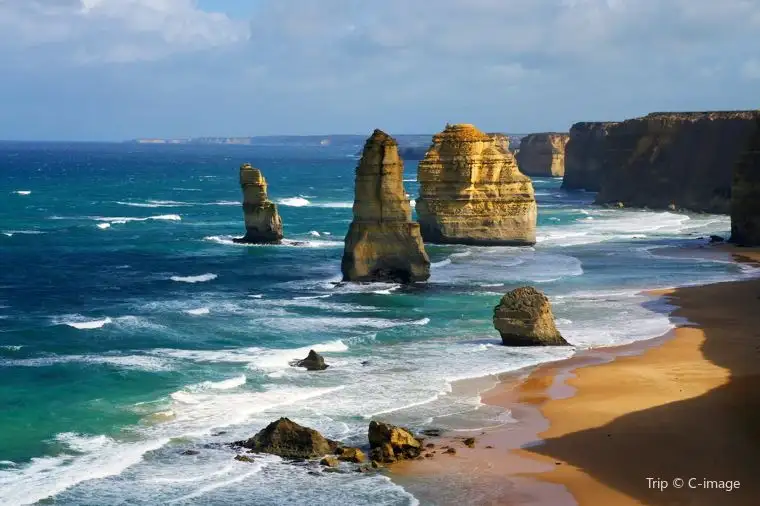
Twelve Apotles / Source: Trip.com
Looking to get the best deal on your next travel booking? Look no further than Trip . com ! With a wide range of flights, hotels, and vacation packages to choose from, you're sure to find the perfect option to suit your budget and preferences. Plus, with their user-friendly website and mobile app, booking your next adventure has never been easier. So what are you waiting for? Visit Trip.com today to start planning your next getaway!
How much does it cost to travel to Australia?
The cost of traveling to Australia varies depending on factors like the time of year, type of accommodation, and activities. Generally, a basic daily budget for backpackers is $70-$100 AUD, mid-range travelers should budget $150-$250 AUD per day, and luxury travelers should expect to spend over $400 AUD per day.
What is the cheapest time to travel to Australia?
The cheapest time to travel to Australia is typically during the low season, which runs from May to August. During this time, flights and accommodation tend to be cheaper, and crowds are smaller.
How much should I budget for flights to Australia?
The cost of flights to Australia varies depending on your departure location and the time of year you plan to travel. On average, travelers from the United States should expect to pay $800-$1,500 USD for a round-trip ticket.
How much does accommodation cost in Australia?
The cost of accommodation in Australia depends on the type of accommodation and its location. Budget hostels typically cost $20-$40 AUD per night, while mid-range hotels cost $100-$200 AUD per night. Luxury hotels can cost over $400 AUD per night.
What are some ways to save money while traveling in Australia?
To save money while traveling in Australia, consider using public transportation, cooking meals instead of eating out, and staying in budget-friendly accommodations like hostels or camping grounds.
Australia Travel Cost
- 2. Accommodations
- 3. Transportation
- 4. Sightseeing and Attraction Ticket
- 5. Wi-Fi and Communications
- 6. Souvenir
- 7. Travel Insurance
- 8. Travel Tips
- 9. Conclusion
<h3>Trending Searches</h3>
Popular Content
- Trip to Afghanistan cost
- Trip to Venezuela cost
- Trip to Guatemala cost
- trip to New Zealand cost
- trip to london cost
- things to do in chicago
- australia trip cost
- Trip to Zimbabwe cost
- cancun trip cost
- puerto rico trip cost
Popular Attractions
- Gardens by the Bay Tickets
- california disneyland
- tokyo disneysea tickets
- walt disney studios park
- Andamanda Phuket Waterpark
- Shibuya City
- Central Park, Haworth
- North Garden of Genghis Khan Park
- Maoya Grassland
- Yulong River Rafting
- Guanyinqiao Pedestrian Street
- Shanghai Astronomy Museum
- Best places to visit in Bangalore
- Serviced apartment
- Keisei Skyliner
- Penang Attractions
Connectivity
- eSIM Thailand
- eSIM Vietnam
- Saudi Arabia esim
- china payments app
- China eSIM 2 Days
- eSIM Malaysia
- China SIM Card
- Indonesia eSIM
Getting Around
- Narita Airport Limousine Bus
- Shinkansen Tokyo to Kyoto and Osaka
- jr tokyo wide pass
- Japan car rental
- Haruka Express
- Customer Support
- Service Guarantee
- More Service Info
- Website Feedback
- About Trip.com
- Terms & Conditions
- Privacy Statement
- About Trip.com Group
Other Services
- Investor Relations
- Affiliate Program
- List Your Property
- Become a Supplier

Australia Road Trip Budget: A Detailed Cost Breakdown
By: Author Lotte
Posted on Last updated: December 16, 2022
Categories Australia

In this post you can read about our Australia road trip budget, I hope this will give you an idea about the cost to travel to Australia.
Australia is the 6th biggest country in the world, so big in fact that it counts as a continental landmass!
With more than 823,000 kilometers of road available to be explored, it is an amazing road trip destination ( read more Australia Trivia here ).
We love love love love road trips, in fact, it's our favorite way to travel. We've gone on lots of road trips in countries such as New Zealand , Japan , Portugal , Oman , Canada , and the U.S.A.
I can say from experience that road-tripping is one of the best and cheapest options to travel!
Australia road trip budget: how much does it cost to travel to Australia?

Disclosure: Some links in this post are affiliate links. If you make a purchase through one of these links, we may earn a small commission (at no extra cost to you!). We're very grateful when you use our links to make a purchase:-).
How much does it cost to go to Australia?
Have you always dreamed about a Working Holiday in Australia? Check out Global Work & Travel and get a €100 discount with the coupon code PHENOMENALGLOBE .

Australia is infamous for being a rather expensive destination, however, we managed to travel Australia on a very reasonable budget.
For everyone wondering: Is Australia expensive to visit? It doesn't have to be! We spent less than €100 a day (for us as a couple) during our 6-week road trip from Cairns to Melbourne.
Check the infographic below for our Australian budget breakdown and read along for tips to save money in Australia.

Australia travel budget: important facts and figures
- I traveled around Australia with my husband , and all expenses mentioned are for the two of us together.
- I quote prices in € and Australian Dollar (AUD) . The exchange rate usually is around €1 = 1,50 AUD. Of course, the exchange rate varies, check the most recent rates here .
- We spent 6 weeks in Australia, on an average day we spent €98 / 146 AUD .
- Our average daily travel budget includes all our travel costs in Australia, it does not include the costs for our tickets to Australia. Also, as a travel blogger, I was fortunate enough to work with Travellers Autobarn campervan rental and several tour companies which decreased our expenses.
- My trip started in Cairns and ended in Melbourne. You can find our East Coast road trip itinerary here .
Cost to travel Australia: our average daily expenses
- Campervan: 65% of daily costs
- Accommodation: 4% of daily costs
- Food and drinks: 19% of daily costs
- Activities and miscellaneous expenses: 12% of daily costs

1. Renting a campervan in Australia: how much does it cost?
I'm 100% convinced the cheapest way to travel to Australia is with a camper van (or a car and a tent).
We rented a Kuga campervan from Travellers Autobarn and drove from Cairns to Melbourne in a little less than 6 weeks.
The Kuga van was great and very comfortable! The kitchen had a sink, a m icrowave, and a small fridge. The 35-liter water tank usually lasted us around 3 days.
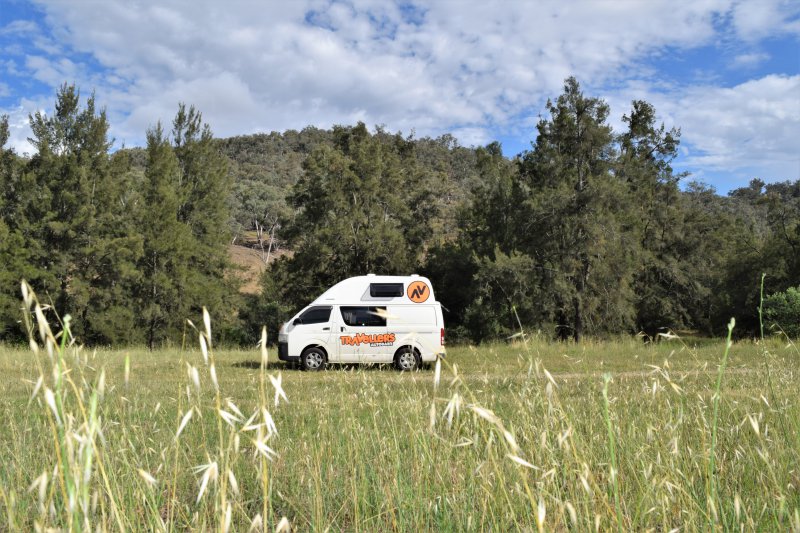
The large bed could easily be converted to a seating area, but since we traveled in November and December we spent most of our time outside.
The curtains let in very little light, which was nice because the sun came up quite early in the South. During our trip we never had any issues with the car, it was well-maintained and clean.
In the infographic, you can see that the daily rental costs for the campervan were €63 / 93 AUD . These costs are divided into 2 categories:
Rent of the campervan
Costs for petrol.

Daily rental costs
I was fortunate to work with Travellers Autobarn and received a discount on the daily rental price of our Kuga. With this discount, the costs per day for the camper van were €47 / 70 AUD .
The only insurance we added was a 75 AUD payment to insure any damage to the windshield.
We didn't take out any additional insurance to reduce our bond liability (in case of an accident we would have had to pay up to 2500 AUD).
It's always a gamble whether or not insurance will be worth it or not. During our New Zealand road trip I bumped into another car and I was very happy we had taken out additional insurance.
During our Portugal road trip we paid for extra insurance as well but didn't need it, so we kind of wasted that money.
In the end you won't know what's smart until you hand the vehicle back in, damaged or not. It's up to you if you want to risk it;-).
Check prices online
Depending on the season, the type of campervan you want to rent and the additional items you choose you can pay as little as 35 AUD per day .
You can see the different types of vans and get a quote on the Travellers Autobarn website .
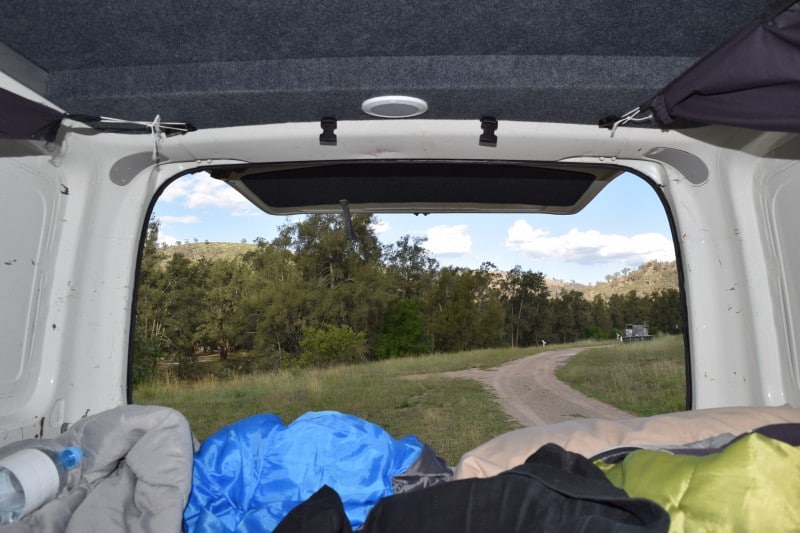
Fuel isn't cheap in Australia and distances are big, so fuel made up a significant portion of our daily expenses (17%) .
On average we paid €16 / 23 AUD per day. We fueled up on either Unleaded 91 or Unleaded 95. Not all gas stations sell 91, but at the ones that do this is usually the most economical option.
What really helped us to find the cheapest fuel option available was the Motormouth website (also available as an app).
The website shows the current price level of petrol stations all around Australia, there can be quite a big difference between them.
Checking the Motormouth website or app before fueling up can definitely help to save some money!

2. How to find budget accommodation and free campsites in Australia
In the infographic, you can see that the total daily costs for accommodation were €4 / 6 AUD . These costs are divided into 2 categories:
Paid campsites
- Airbnb accommodation
We slept in our campervan pretty much all the time and were pleasantly surprised by how many free campsites we found during our road trip.
We found these campsites via Campermate , a great free app where you can find information about the site and read comments from recent visitors.
Some of these free campsites even had free hot showers! During our six-week road trip we only paid for 2 campsites, the rest of the sites were free.
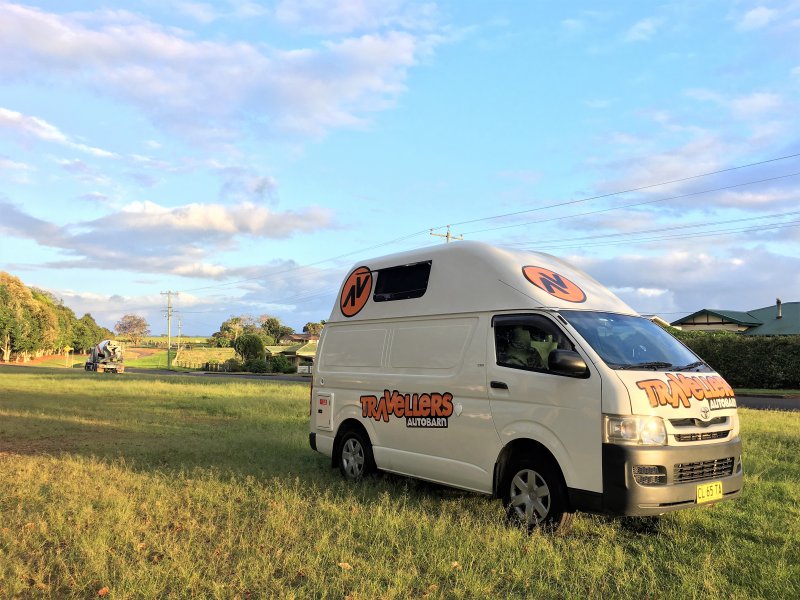
We stayed at an Airbnb in Brisbane (2 nights) and Melbourne (1 night). In Yamba and Sydney, we stayed with friends (3 nights), which was great and also saved us a lot of money.
3. Cost of food in Australia
The easiest and most effective way to save money in Australia is by cooking your own food. A cheap dinner will set you back at least €10/ 15 AUD per person.
Cooking your own meal will only cost about €10/ 15 AUD for a couple , so you'll already save 50% each day by making your own dinner!
We paid € 1 9 / 28 AUD for food and drinks on an average day. We made our own breakfast, coffee, lunch and dinner on 95% of the days. Every once in a while we bought a fresh fruit juice, pizza or steaming bowl of ramen.
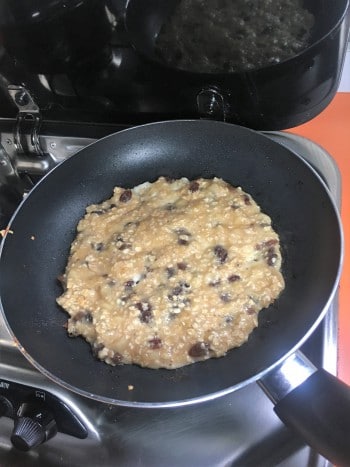
4. Activities and miscellaneous Australia vacation cost
The average daily costs in this category were €12/ 19 AUD . These costs can be split between:
Miscellaneous costs

Most days we went bush-walking, explored a beautiful beach or did some sightseeing in a village or city, these activities were free. However, we also did some pretty cool excursions in Australia.
We went scuba diving at the Great Barrier Reef, flew over the treetops with the Skyrail Rainforest Cableway and sailed around the marvelous Whitsunday Islands.
I worked with these companies and received a discount or complimentary trip, which saved us a lot of money.
This category is a little bit of everything, ranging from public transport in Brisbane, Sydney and Canberra to costs for laundry, a local SIM, postcards home, etc.
Plan your trip like a pro with these tools: ✈️ Find the best flight deals on Kiwi.com . ? Get the best car rental deal for your road trip on Rentalcars.com . ?️ Find your dream accommodation on Booking.com or Agoda . ? Book the best tours via Get Your Guide , Viator or Klook . ? Plan your journey with the Lonely Planet . ?️ Travel safely and get reliable travel insurance from Safety Wing .
Australia trip budget: in conclusion
That's all our Australia expenses! I hope this post has shown it's possible to travel to Australia on a budget and has inspired you to visit this beautiful continent!
Feel free to ask any questions you may have and enjoy planning your trip to Australia !
Also check this post about work and travel in Australia in case you're interested in getting an Australian work and holiday visa.
Also read about the best things to do in Sydney with kids and about places to visit in Daylesford .

This post was updated in October 2020.
Wednesday 4th of March 2020
Thanks a lot for this information. I wanted to know, we are doing a road trip from Cairns to Sydney on a campervan. The payment for the campervan has already been made so that’s counted. My question is, if we want to go diving on the Great Barrier Reef and to Whitsundays (basically that’s all we want to do as “paid” activities), do you think we, as a couple, can manage to spend an average of 60 eur per day? (This would be excluding the campervan as I mentioned above).
Do you have any details of your trips to Whitsunday and the great barrier?
Thanks so much!
Monday 16th of March 2020
Hi Beatriz,
That sounds like a wonderful trip! Regarding your question, well, it will be a bit of a tight budget as these two activities unfortunately don't come cheap... Sailing the Whitsundays is around 200AUD per person and diving is 300AUD for 2 dives and 320AUD for 3 dives. Without these activities, 60euro for a couple is definitely possible but if you really want to do these two activities I'd try and save another 1000AUD for your road trip (if possible).
You can find more information here: https://cruisewhitsundays.com/experiences/camira-sailing-adventure/ http://www.tusadive.com/prices/
Have a great trip! Lotte
Veronica Ricalde
Sunday 21st of October 2018
How safe is to stay in free Camping sites? we would like to go with two small Kids (6 months and 6 years) and my husband Freak out when i said that we can camp for free. do they have toiletts and showers? thank u and lovely regards
Thursday 25th of October 2018
Hi Veronica,
We never had any issues at the free campsites and I always felt safe. Free campsites usually do have toilets but no showers (though some do, but you may have to pay for the shower). In the Campermate app (https://www.campermate.com.au/welcome/index) you can find information about free (and paid) campsites. Keep in mind that some free sites are located along busy roads, which may not be ideal for you and your family. Enjoy your road trip!
Sunday 1st of April 2018
Hi Lotte! We are planning an East coast Australia road trip (4-5 weeks) in October and then on to New Zealand for 2 months. We will be using a campervan in both countries. How long in advance do we need to book the campervan to get the best deals? Can you still get a good deal a few weeks in advance or do they become really expensive by then? Thanks for your interesting blog!!
Monday 2nd of April 2018
Hi Charlotte,
Wow, your trip sounds awesome! Regarding your question, for Australia you'll be a bit ahead of the high season so I reckon you could get good deals there even if you don't book very early. For New Zealand however, you'll be traveling in peak season and I recommend to book as early as possible. While November may be easy to book, December is summer holiday for the Kiwis as well. Hope this helps! Have a wonderful time in Aussie and New Zealand!
Katie Farrant
Wednesday 17th of January 2018
Hey, I'm just wondering whether you will be uploading your Australia itinerary soon?! My partner and I are off there on the 31st Jan starting in Adelaide and going up to Cairns (by tours and greyhound) for 7 weeks. Would be great to read any recommendations you have for free/cheap activities. We have booked up a few tours- but the cost is adding up! We are off to NZ after Aus for 5 weeks and your blog made me decide to book a camper with car rental village! I can't wait!
Thanks for your comment and your trip(s) sounds great! Which tours will you be doing along the way? Yes, costs definitely add up but luckily many hikes and sightseeing in cities/villages is free. I'm working on the itinerary post, it's going to be very long (5000+ words;-). My goal is to publish the post this week because I start a new job on Monday. Perhaps you can subscribe via RSS feed so you'll receive an update when the article goes life?
So cool you'll be going to NZ as well, it's still my favorite country in the world... Have a great trip and let me know if you have questions about the itinerary once it's published.
Budget Travel With Gabby
Travel tips, budget travel guides, volunteering stories, more!

How To Travel Australia On A Budget: The Ultimate Guide
Wondering how to travel Australia on a budget? Here is all the knowledge I’ve gained after living here for about four years!
One of the most common stereotypes about Australia is that it’s super expensive.
At least that was one of the only things I had heard about Australia before coming here.
After four years of living here, I’ve realized that it can be expensive, but not nearly as much as I thought it would be!
Living here is actually super affordable ( see my full post on living costs here ).
Traveling here as a visitor is definitely pricier than many countries in the world, such as Cambodia or Guatemala .
But it is possible to travel Australia on a budget!
In this Australia budget travel guide, I’ll cover everything you need to know to explore Australia cheaply.
I’ll cover where to go, flights, transport, accommodation, food, drinks, activities, and more.
Keep in mind, Australia is huge. I recommend exploring fewer areas of the country more in-depth than hopping around this massive country in a rush to see everything.
Get ready to explore Australia!

How To Travel Australia On A Budget
I will begin this Australia budget travel guide by discussing the basic logistics.
Before you even look into transport or accommodation, you have to decide where and when you want to visit Australia.
You also have to look into visas, as every visitor needs a visa. I also recommend considering travel insurance.
Visas for Australia
Everyone entering Australia needs a visa.
The easiest visa to get is the visitor visa (subclass 600) . You can apply outside Australia and it costs a minimum of $150 AUD.
You can get approved for stays of 3, 6, or 12 months. Also, you have to prove you have enough money to fund your trip and get yourself back home.
Easily apply for your visitor visa online through ImmiAccount . The Australian immigration website has all the details you should need!
If you’re interested in staying in Australia for a year and working, you can apply for a Working Holiday Visa .
See my detailed guide to the Working Holiday Visa for more info!
Budget Travel Insurance for Australia
Travel insurance is always a hot topic for budget travelers. Do you need it? Or is it a waste of money?
I wrote a very detailed article about this called Budget Traveler’s Guide to Travel Insurance .
But for the sake of this article about how to travel Australia on a budget, I would say getting travel insurance depends on your trip.
Because Australia does have lots of poisonous animals and adventure activities that could cause injury, I would say YES, get travel insurance for Australia.
Especially if you’ll be road tripping, surfing, hiking, or heading to remote areas, travel insurance for Australia could save you lots of money if something happens.
As an American, I always use Squaremouth Insurance for finding affordable plans. But they don’t cover every nationality, so just do some research to find the right plan for you.

Where To Go In Australia / When To Visit Australia
I’ll give a quick summary of Australia’s geography so you have an idea of where and when to visit. Each state is different, and each region of the country is unique.
Visiting Australia at the right time is a key factor when considering how to travel Australia on a budget.
Queensland, New South Wales, and Victoria
These are the three most visited and most touristy states. All are located on Australia’s east coast.
If you want to travel Australia on a budget, you’ll have an easier time of doing that in these three states.
Roads and infrastructure are more developed here so it’s easier to get around. There are so many accommodation options as well.
Sydney (NSW), Brisbane (QLD) and Melbourne (VIC) are three of Australia’s biggest and most famous cities.
There are frequent and sometimes affordable international flights in and out of these airports, particularly Sydney Airport.
Read next: 22 Fun Things To Do In Brisbane
Northern Territory, Western Australia, South Australia, and Tasmania
These states are where you’ll find the most dramatic scenery, thriving wildlife, and untouched Indigenous culture.
They are much more rugged and remote than the east coast.
However, because these areas of Australia are less touristy and crowded, it is harder to travel around and it is more expensive.
Public transport is not nearly as common here, so sometimes renting a car to travel is your only option.
There are also fewer accommodation options, so there is less competition and prices tend to be higher.
Transport and accommodation are more plentiful in the cities such as Darwin (NT), Perth (WA), Adelaide (SA), and Hobart (TAS). So if you are on a tighter budget and can’t afford to venture out into the wild, you may want to stick to the cities.
When to Visit Australia
As for when to visit Australia, that really depends on which region you are visiting.
The North of Australia is tropical and has super hot and rainy summers. So it’s better to visit the north in winter (June – August)
The South of Australia has a cooler, more temperate climate. You’ll have warmer weather here if you visit in the summer (December – February).
Summer also means flight prices are much higher.
Generally speaking, the shoulder seasons of autumn (March – May) or spring (September – November) are safe times to visit anywhere.
I wrote a super detailed article about the best time to visit Australia if you want a more in-depth analysis!


How To Travel Australia On A Budget: Flights, Transport, and Accommodation
Transport to and around Australia is often the most confusing and most expensive part of any Australia budget travel guide.
Australia is a massive country that is pretty isolated from the rest of the world.
You will most likely have to travel far to get here, and you may have to travel a lot to see all the best parts of the country.
But it can be done! Let’s talk about how.
Getting To Australia
Flights into Australia can be long. They can also be expensive. But the travel and money is worth it to experience this amazing country!
Most international flights will fly into Sydney International Airport.
Melbourne, Brisbane, and Perth are also big travel hubs, but Sydney is definitley the biggest. You’ll find the most flight options into Sydney.
Depending on how far you have to travel, flights to Sydney can be pricey.
For example, I’m from Boston, MA in the USA. Traveling to Sydney takes about 20 hours of flying and costs around $700-1000 USD one way.
But there are a few ways you can find cheap flights to Australia:
- Fly off-season. Summer months are peak travel season (Dec-Feb), so traveling to Australia outside these times will most likely mean cheaper flights.
- Use Skyscanner to pick the cheapest day of the month to travel. Read my in-depth guide to finding the cheapest flights abroad here !
- Browse for the cheapest airlines. Constantly search for flights and compare different airlines. Hawaiian Airlines is my go-to for flying from Sydney to Boston – they often have one way flights for under $700 USD!
If you follow these tips, you should be able to find decently prices flights to Australia!
Transport Within Australia
Once you arrive, you have a few options for getting around Australia on a budget.
Domestic Flights
For traveling longer distances in Australia, domestic flights are often the best option. You can usually find one-way flights for under $100 AUD.
Flights will also cut your travel time by a lot. For example, driving from Sydney to Melbourne can take 12 or more hours. Flying from Sydney to Melbourne takes one hour.
So if you’re short on time and you want to see a few different areas of Australia, domestic flights are the way to go.
Check these local budget airlines for basic, low-cost flights:
- Tiger Airways
- Virgin Australia

Renting a Car
From the natural beauty, to the wildlife, to the charming country towns, road tripping is a great way to see the real Australia.
Traveling Australia by car does take more time since the country is so big and attractions are spread out.
But if you have a few weeks or more, renting a car gives you so much flexibility to explore. If you’re heading to rural areas, public transport may not be as common so renting a car is ideal.
The cost of renting a car varies depending on where you are traveling to and from, and for how long.
Renting a car in Australia often costs $50 – $80 AUD per day . Add costs of fuel and insurance on top of that.
I don’t have a favorite car rental company in Australia as they are all similar and reliable. Just shop around a bit online to find the best company for you.
If you plan to road trip for three weeks or longer, it may be cheaper to just buy a used car and then sell it before you leave. Carsales.com.au is the biggest website for buying and selling cars here.
Long-Distance Buses
One of the cheapest ways to travel long distances in Australia is by bus.
If you don’t want to rent a car, there are decently prices between cities on the east coast. Because the west coast is more remote, there few bus journeys that do exist are pretty expensive.
Greyhound Australia is one of the most popular bus companies.
For example, with Greyhound you can travel from Sydney to Melbourne for around $150 AUD.
Long-Distance Trains
There are a few long-distance train journeys that travel between major destinations in Australia.
Journey Beyond Rail is the main company that offers train travel. It is a spectacular way to see the countryside, especially the remote Outback.
However, this is really expensive. For example, the iconic Ghan Expedition from Darwin to Adelaide costs a few thousand dollars.
So this isn’t really for budget travelers, but it is supposed to be epic so I just wanted to mention it.
Regional Trains
Local trains are often the best way to travel to and from major cities and other nearby areas.
So if you’re staying in a city and want to take day trips, the regional trains are great options.
For example, Sydney’s train network reaches all the way down to Wollongong and Kiama on the South Coast, as well as the Blue Mountains in the west or Newcastle on the Central Coast.
Inner City Travel: Trains, Buses, Light Rails, and Metros
Within big cities like Sydney, Melbourne , and Brisbane, there is lots of cheap public transport available.
Whether it be the public bus, metro, tram, light rail, train, or ferry, there are plenty of ways to get around.
Usually you just have to get a travel card (such as an Opal Card in Sydney). Just tap it on and off the various types of public transport when you board.
Most journeys only cost a few dollars. Public transport is so much cheaper than taxis or ride share apps like Uber.
Car Sharing
Another option to consider for traveling Australia on a budget is sharing a car with other travelers.
Because Australia is so huge, and the country has a huge backpacker community, there are often people looking to share rides.
Share Your Ride and Co Seats are two websites where travelers can post about their upcoming journeys and find others to share the costs of travel with!
Alternatively, just enquire at your hostel and you are sure to find other travelers to share a car with.
Or you can check the many Australia Backpackers groups on Facebook. People are always posting about road trips on there!
Australia Backpackers 2022 , Australian Backpackers , and even Backpacker Jobs in Australia are all great resources.

Australia On A Budget: Accommodation
There is lots of accommodation to choose from in Australia!
For this Australia budget travel guide, I’ll mainly be focusing on the cheapest forms of accommodation.
Nice hotels, Airbnbs, eco-lodges, and guesthouses are plentiful around the country. You can find the best options by browsing online.
But for traveling Australia on a budget, the cheapest forms of accommodation are hostels, work exchanges, and camping.
Hostels in Australia
Hostels are a budget traveler’s best friend! You can stay in a shared dorm for the fraction of the price of a hotel room.
Hostelworld is the best website for finding hostels abroad.
The website has over 200 hostels in Australia, spread across 55 different cities and towns.
A bed in a hostel dorm room costs $30 AUD per night on average.
This is much more expensive than other countries in the world, but it’s still so much cheaper than a hotel.
Work Exchanges in Australia
Work exchanges are my favorite way to travel on a budget.
You can work around 20 hours a week in exchange for free accommodation.
This saves you so much money, which is super helpful in an expensive country like Australia.
You also get to have interesting cultural experiences. Living and working with locals is a great way to learn about the local lifestyle, and you’ll probably meet other cool travelers.
Worldpackers and Workaway are my two favorite websites for finding work exchanges.
Use code GABBY to save $10 USD on your Worldpackers membership!
Camping in Australia
Australia is a country that really values nature, so there are amazing campgrounds all over the country.
Because you need a lot of gear for camping, it’s only a cheap form of accommodation if you are also renting a car.
If you’re just hopping around and catching flights and public transport, it would be expensive and a hassle to buy a bunch of camping equipment.
But if you’re road tripping Australia in a car or campervan, take advantage of the country’s stunning campgrounds.
You can just drive up and spend the night in a beautiful spot in nature.
Some campgrounds are free. In touristy areas, campgrounds can cost anywhere between $10 and $50 AUD per night . If you’re traveling with a partner, you can split the costs and it’s still cheap.
Findacamp.com.au is handy for finding campsites. Otherwise just do a google search for campgrounds in the spot you want to visit.

How To Travel Australia On A Budget: Food, Drinks, and Activities
Once you’ve sorted where to stay and how to get around, you’ll have to eat and drink and plan some activities!
Here are some tips on how to eat, drink, and enjoy Australia cheaply.
Eating in Australia on a Budget
One of the easiest ways to blow all your money in Australia is eating out.
Restaurants can be expensive, so try to limit your fancy dinners if you’re trying to travel Australia on a budget.
Average food costs when dining out:
- Coffee: $4.50
- Smoothie: $8
- Breakfast meal: $15-$20
- A quick take away sandwich or bacon/egg roll: $10-$15
- A nice, seated lunch main course: $20-$30
- Main course at dinner such as steak or fish: $30 or more
Save money by buying groceries and cooking at home!
Cooking your own food is an amazing way to save money in Australia.
Stay in a hostel with a kitchen, or do a work exchange that includes a meal or two.
Buy your groceries at the local grocery store or market.
Coles and IGA are more expensive grocery stores, Woolworths is standard, and Aldi is cheap.
If you’re staying in Australia for a while, it’s worth getting a rewards card for the grocery stores you use most. It’s free to sign up and you often get discounts.
Also check for local farmers markets for cheap, in-season produce. You’ll support local farmers and get better quality food for cheap prices.
Read next: 12 Best Australian Foods To Try
Drinking in Australia on a Budget
Alcohol in Australia is so expensive! This is another way to burn through your Australia travel budget too quickly.
Drinking out at bars or restaurants is so much fun, but costly.
I would avoid drinking alcohol as much as possible to save money in Australia.
But if you do love to drink, drink at home. Otherwise, look for local happy hours or promos. Many restaurants and bars, especially in cities, do cocktail specials or happy hours with discounted drinks.
Average alcohol costs in Australia:
- A beer in a bar or restaurant: $9
- Glass of wine in a bar or restaurant: $11
- Bottle of wine in a restaurant: $40-$60
- Cocktail in a bar or restaurant: $15-$20
- Case of 24 beers in a bottle shop: $50
- Decent bottle of wine in a bottle shop: $25
- Cheap boxed wine in a bottle shop: $15
- 1 Litre bottle of hard liquor in a bottle shop: $60
So if you can buy most of your alcohol at the bottle shop, or stick to local happy hours, you can save money on drinking in Australia.

Activities in Australia on a Budget
Now that you know all the logistics about how to travel Australia on a budget, it’s time to discuss the fun part. All the activities and attractions!
There are so many incredible things to do around Australia. This huge country could keep you occupied for years! (I’ve lived here for four years and my bucket list keeps growing and growing!)
Here are some of the top things to do in Australia:
- Explore the cities (Sydney, Brisbane, Melbourne, Cairns, Adelaide, Perth, Darwin, etc.)
- Sail through the Whitsunday Islands
- Explore the Daintree Rainforest
- Swim with whale sharks in Ningaloo Reef
- See the sunrise over Uluru (Ayers Rock)
- Road Trip ( along the east coast or west coast are popular routes)
- Surf in Noosa
- Explore Kakadu National Park
- Drive a 4WD on the sand dunes of K’gari ( Fraser Island )
- Visit Tasmania
- Ride a camel on the beach in Broome
- Take Day Trips to Islands like Rottnest Island, Kangaroo Island, or Stradbroke Island
- Drive the Great Ocean Road
- Visit Wine Country (Margaret River, Hunter Valley, and Barossa Valley are the top spots)
- Snorkel in the Great Barrier Reef
All of these attractions are super spread out, so it would be impossible to get to them all in just a short visit to Australia.

So here are my top tips for planning activities in Australia on a budget:
☼ Focus on smaller areas depending on your time frame.
You’ll spend a lot of money by constantly hopping around to see everything. Instead, pick one or two major cities that appeal to you and thoroughly explore the attractions in those areas.
☼ Prioritize free attractions!
There are lots of free things to do in Australia! Most national parks and beaches are free, so you can hike, camp, swim, and explore nature for very little money.
☼ Research tours and tour prices.
There are amazing tour options available for most activities in Australia . Sometimes, it is much cheaper to do the activities on your own without a tour.
But some places in Australia are super remote, and it is either impossible or just much easier to go with a tour company. Just do some research for the activities you want to try and assess whether you can go with or without a tour.
☼ Compare tour companies.
I often use platforms like Get Your Guide for booking tours abroad. They have some awesome and cheap tour options. But I always recommend comparing online tours with tours companies in real life when you arrive.
Sometimes there is a huge different in price and quality! For example, Sailing Whitsundays in Airlie Beach has the best and most affordable tours in the Whitsundays, and they aren’t on Get Your Guide.

Thanks for reading my guide to traveling Australia on a budget!
I hope it has been helpful, and I hope you’re now inspired to travel to Australia!
Here are some of my other articles about Australia:
Best Time To Visit Australia: A Complete Guide
22 Fun Things To Do In Brisbane
Sydney to Melbourne Road Trip Guide
Australia Working Holiday Visa: Ultimate Guide
One Week In Sydney: Itinerary For The Outdoorsy Traveler
Great Ocean Road Travel Guide
Farm Work in Australia: What It Is Really Like
Pros and Cons of Living in Australia

This post may contain affiliate links. Read more about this in my About Me page!
Share this:

2 thoughts on “ How To Travel Australia On A Budget: The Ultimate Guide ”
Thank you amazing article ♥️😎
Awesome thanks for reading!
Leave a Reply Cancel reply
Discover more from budget travel with gabby.
Subscribe now to keep reading and get access to the full archive.
Type your email…
Continue reading

Traveling Australia On A Budget
by Melissa Giroux | Last updated Mar 31, 2024 | Australia , Travel Tips
Wondering if you can afford to travel around Australia?
It is possible to travel to Australia on a budget . In fact, there are many ways to do so. In this guide, we’ll explore ways you can save money and travel around the country without breaking the bank.
I’ll also share some insights about my own experiences when I was traveling in Australia as a backpacker in 2014-2015.
Wondering how to move to Australia? Read our guide to living in Australia .
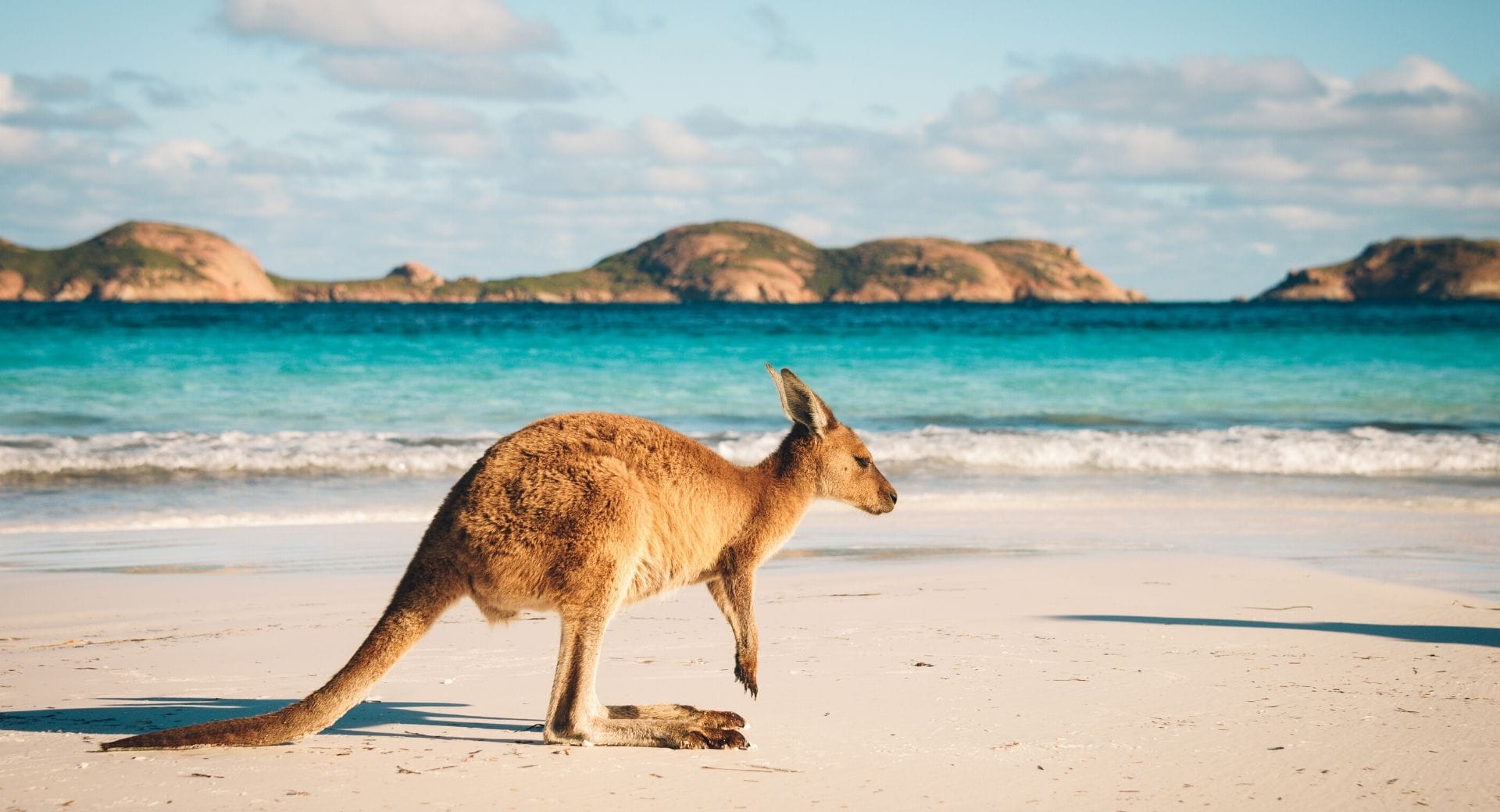
Best Ways To Save Money When Backpacking Australia
When traveling to Australia on a budget, it’s important to know how expensive the cost of living is there. Fortunately, there are ways to travel around Australia while respecting your travel budget.
Stay In Hostels
Hostels are a great way to save money when backpacking Australia. They are typically much cheaper than hotels, and you can often find deals that include free breakfast or other amenities.
Additionally, most hostels have kitchens where you can cook your own meals, which can save you a lot of money on food costs.
It’s still important to note that hostels in Australia are more expensive than in destinations like Europe. In fact, a hostel can easily cost a minimum of $25-30 per night for a large dorm. Alternatively, you could get a hostel job and stay there for free.
Another option would be to find a flat. It’s possible to share a room with flatmates to save money on rent.
Use Public Transportation
Australia has an extensive public transportation system that can help you save money on travel costs. trains and buses are typically cheaper than renting a car, and they can take you to all of the major cities and attractions in Australia.
That said, some backpackers love to buy a car, or a van so that they can camp around Australia instead of spending money on accommodation.
Of course, this option works if you love camping , and you don’t mind spending money on a car/fuel.

Get A Working Holiday Visa
If you are planning to backpack Australia for an extended period of time, you may want to consider getting a working holiday visa. This type of visa allows you to work in Australia for up to one year, which can help you offset the cost of your trip.
Usually, you can also apply for a second year if you wish to stay longer.
Eat Cheaply
Eating out can be one of the biggest expenses when traveling, but there are plenty of ways to save money on food costs. Eating at fast food restaurants or cooking your own meals can help you save a lot of money.
Additionally, many hostels offer kitchen facilities where you can prepare your own meals.
You can think of getting the basics, which are usually more affordable. Think of bread, oat, eggs, etc.
Find Free Attractions
There are many free attractions in Australia that can help you save money on your trip. Many of the country’s national parks offer free admission, and there are often free events and activities taking place in major cities.
If you love the outdoors, you can hike, walk around, swim, or surf for free, or at a minimal cost. In my opinion, the best parts of Australia are nature-related. So you should be able to enjoy yourself without spending too much on tours.
Many museums also offer discounted or free admission for students and seniors.
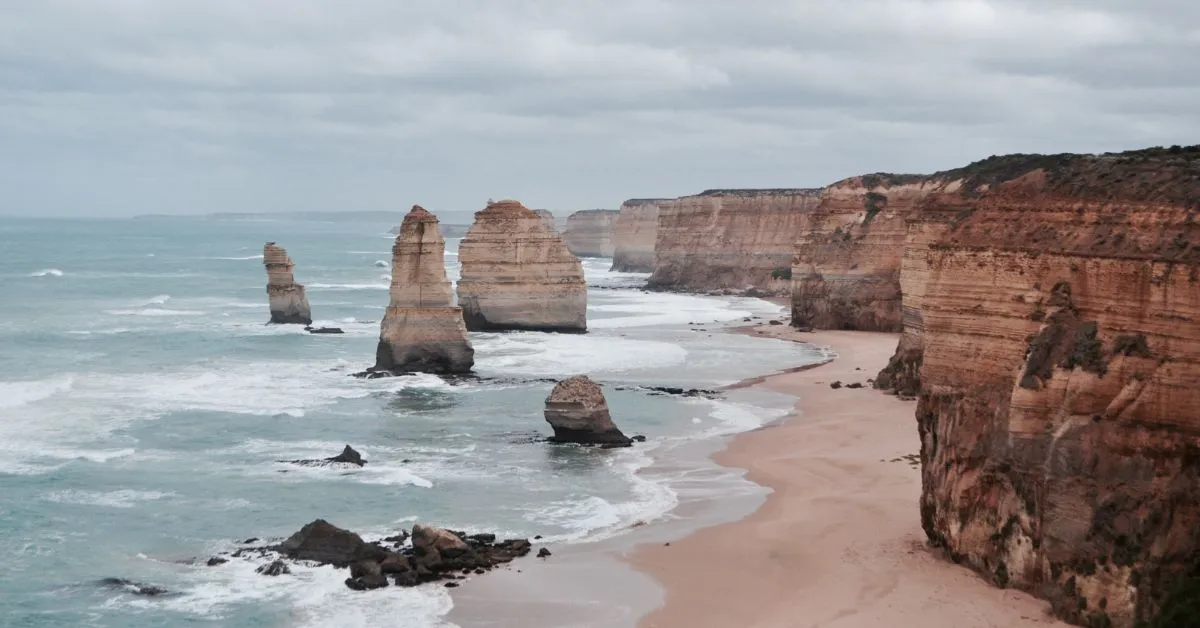
Camp In Free Camping Spots
One of the best ways to save money when backpacking Australia is by camping in free camping spots . There are many areas around the country where you can camp for free, and this can help you save a lot of money on accommodation costs.
Additionally, camping is a great way to experience the unique Australian wilderness.
Find A Backpacker Job With Accommodation Included
Many jobs in the outback or in remote locations can provide free accommodation or rent at a low cost. You could also volunteer your time in exchange for accommodation .
You can usually find these opportunities on websites like Worldpackers .
Examples Of Cost Of Living In Australia
During my travels in Australia, I worked in different locations and the cost of living was changing from one spot to another. For example, if you stay in the countryside, you won’t be spending as much money as you would in a big city like Sydney.
Below, you’ll find examples of the cost of living in Australia, but note that these examples are from 2014-2015. The cost of living is probably higher now.
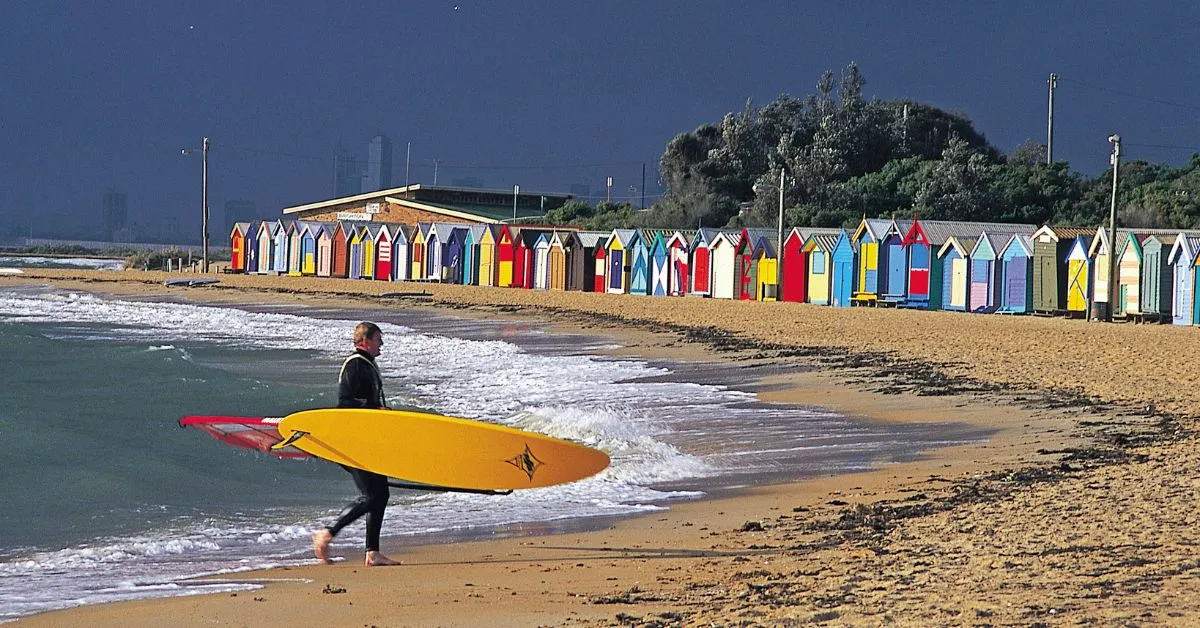
Working And Living In Bundaberg
- Occupation: worker in a tomato packing shed
- Accommodation: $125 / week, a shared room in a shared house
Working And Living In Sydney
- Occupation: Fundraiser
- Accommodation: $ 150 / week, a shared room in a shared apartment
Working And Living In Williams
- Occupation: Employee in a roadhouse
- Accommodation: $ 90 / week in a caravan, with kitchen and bathroom available in a shared house
Working And Living In Muckatah
- Occupation: Dairy farmer
- Accommodation: $100 / week, private room in a shared house
Working And Living In Millaa Millaa
- Accommodation: $250 / week (divided by 2), renting a nice little house
Now, these examples are just from my personal experience. The cost of living in Australia obviously depends on the lifestyle you want to lead and where you want to live.
PSSST. Want to get FREE accommodation in exchange for work?
If you’re looking for more affordable accommodation, you might want to try looking in smaller towns or the countryside. And if you’re looking for something a bit more luxurious, then the big cities will be your best bet.
Obviously, the longer you stay in Australia, the cheaper it will be if you get long-term accommodation.
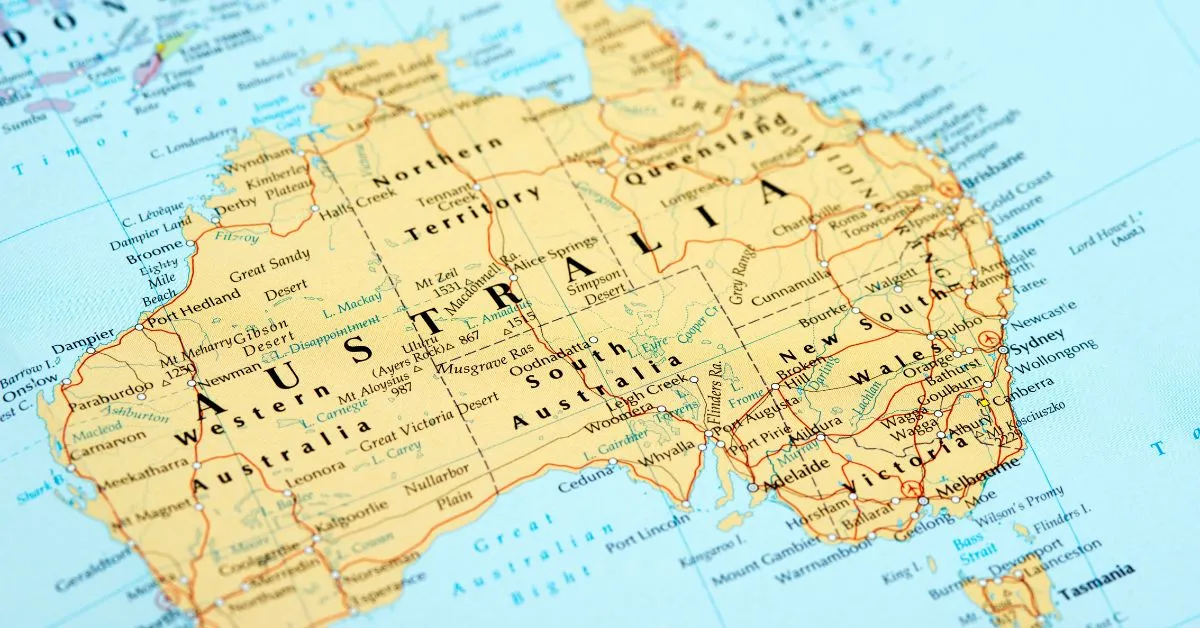
Final Thoughts On Traveling Australia On A Budget
Australia is a vast and beautiful country with so much to offer travelers on a tight budget. Following our tips, you can travel Australia on a shoestring and still have an adventure of a lifetime.
So, what are you waiting for? Start planning your trip down under today!
Heading to Australia soon? Read the following guides:
- How to get a backpacker job in Australia
- Living on a farm in Australia
- Cheap things to do in Sydney

MY TOP RECOMMENDATIONS
BOOK HOTEL ON BOOKING.COM
BOOK HOSTEL ON HOSTELWORLD
GET YOUR TRAVEL INSURANCE
LEARN HOW TO START A TRAVEL BLOG
LEARN HOW TO VOLUNTEER ABROAD


Australia Travel Guide
Last Updated: April 1, 2024

Australia is one of the most popular travel destinations in the world. It’s known as a major backpacking, camping, road tripping, and diving destination.
Backpacking Australia is considered a “must do” for backpackers. It’s a central highlight on the round-the-world trail. I started coming to Australia in 2008 as a backpacker. It hooked me and, since then, I’ve visited over five times and have crisscrossed the country three times. Every single trip I discover something new about this country to love.
But this isn’t just a country for backpackers. Its huge diversity means every traveler can find something they love here.
Australia is filled with incredible natural beauty: Uluru and the Outback, rainforests and pristine white sand beaches, and of course, the Great Barrier Reef. Sydney’s Harbor Bridge and Opera House are iconic man-made wonders, and Melbourne’s café culture will make you feel like you’re relaxing in Europe . You have surfing, hiking, camping, boating, and a ton of other activities available to you. It makes some of the best wine in the world. Australia has it all.
However, the country’s size and limited transportation options, makes it hard to get around. And it’s not the cheapest place to visit, even if the currency is a tad weak right now.
Fortunately, this extensive Australia travel guide will show you how to save money, plan your trip, and make the most of your time Down Under. Because this country is worth taking the time to explore – and doesn’t need to cost a fortune!
Table of Contents
- Things to See and Do
- Typical Costs
- Suggested Budget
- Money-Saving Tips
- Where to Stay
- How to Get Around
- How to Stay Safe
- Best Places to Book Your Trip
- Related Blogs on Australia
Click Here for City Guides
Top 5 things to see and do in australia.
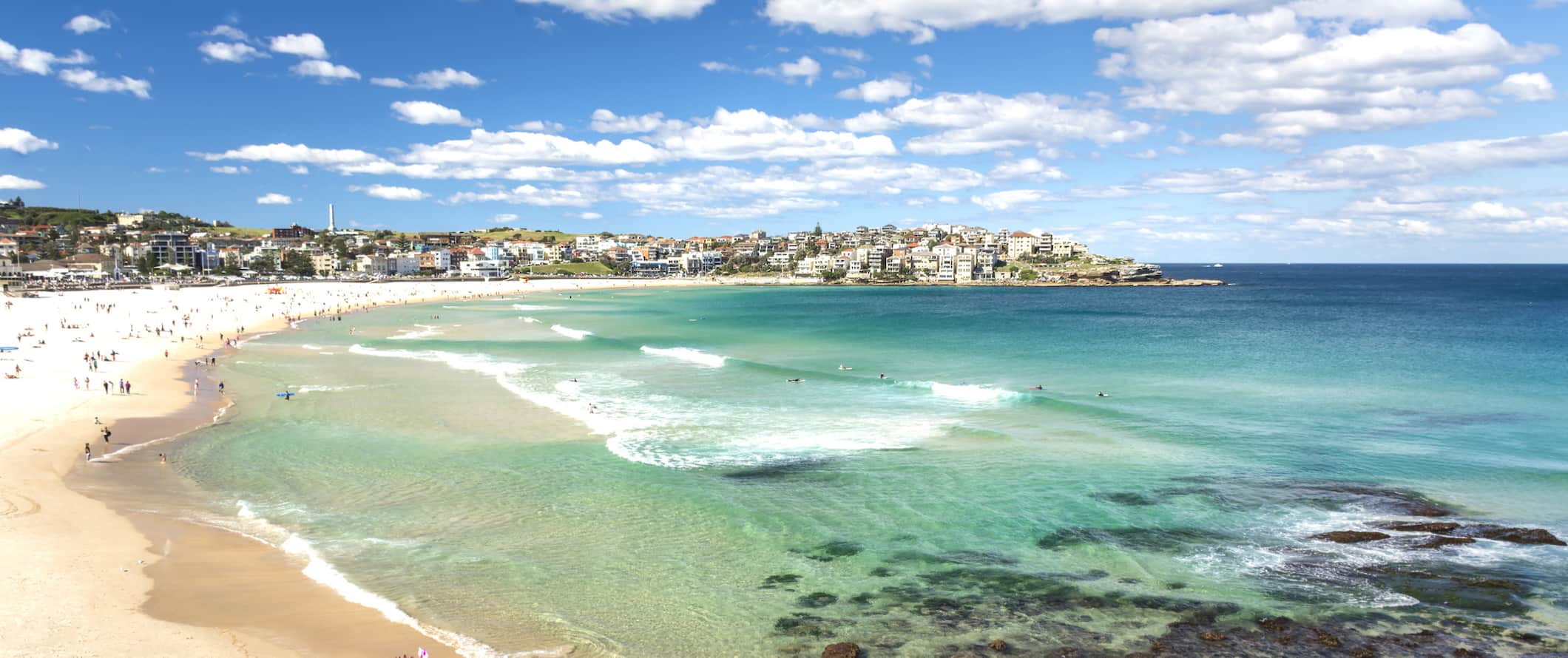
1. See Sydney
Australia’s largest city has a range of activities to keep you busy. Climb the Sydney Harbour Bridge, surf at Bondi Beach, party in King’s Cross, sail across the harbor, visit the Opera House, and take in world-class innovation in Darling Harbor. There’s a ton to see and do here and it’s worth spending a few days here to soak it all in. Other popular beaches nearby include Manly (wide and beautiful), Bronte (small and quiet), Coogee (fun), Palm (chill), and Dee Why (surfing). And, if you’re feeling adventurous, tours that climb the iconic (and massive) harbor bridge cost 250 AUD.
2. Visit Uluru
This beautiful red rock formed over 550 million years ago. Tourists have been visiting the rock since the 1930s and it’s of great spiritual importance to the local Aboriginal peoples. Formerly known as Ayers Rock, the best way to visit is by going as part of a multi-day tour of the area or driving on your own. You’ll be able to walk around the rock, learn about its cultural importance, and watch the rising/setting sun splash against it. Admission is 38 AUD per person and is valid for three days. Note: Climbing on the rock is prohibited.
3. Dive the Great Barrier Reef
Don’t miss diving or snorkeling the Great Barrier Reef. It’s the largest living organism on Earth, spanning some 344,000 square kilometers (133,000 square miles). The reef is brimming with wildlife, including giant clams, manta rays, sharks, turtles, clown fish, and more! Cairns is the most popular jumping-off point for dive trips to the reef. I was blown away by the abundant wildlife and coral. It did not disappoint! Dive trips start around 230 AUD.
4. Explore Melbourne
Melbourne is much more relaxed than Sydney (and, personally, I like it more). This is the place to relax by the river, walk through the city gardens, eat amazing food, enjoy the art, and party in St. Kilda. It’s a fun, chill city with a youthful vibe and a ton of backpackers.
5. Sail the Whitsundays
The Whitsunday Islands are a collection of 74 islands off the central coast of Queensland. They’re one of the most popular destinations in the country. It’s a popular region for sailing trips and since the vast majority of these islands are designated national parks, you’ll find numerous pristine beaches and dive sites here. It’s a postcard-perfect region. Expect to pay between 399-499 AUD per person for a three-day/two-night sailing trip. While expensive, it’s worth doing (I loved my trip).
Other Things to See and Do in Australia
1. explore fraser island.
The world’s largest sand island is a popular spot for camping, swim, hike, and seeing dingoes. You can hire your own 4WD car or take an overnight tour through the island that’s famous for its freshwater lake (and dingoes). The island is beautiful and filled with lakes, hiking paths, and sweeping vistas. Sadly, you can’t go in the water nearby as it’s rough and full of sharks, but there’s plenty of fishing, cool sand dunes, the stunning 75 Mile Beach, and a cool shipwreck for snapping photos. Camping on the island is super cheap too (less than 10 AUD per night!).
2. Visit Cairns
Cairns is Australia’s gateway to northern Queensland. From here you can visit the Great Barrier Reef, the Daintree rainforest, the Atherton Tablelands, Cape Tribulation, and much more. Cairns is a pretty typical tropical city and life here focuses on taking the time to smell the roses. With so much to see, the city deserves a very long stay. Plan to visit for a week, which should give you enough time to explore the area and allows some downtime by the city’s awesome pool.
3. Wander Brisbane’s South Bank
Brisbane is a “business city.” Unlike Sydney or Melbourne, there isn’t a lot of “culture” here. But it’s a popular stop on the backpacker trail due to its location. Be sure to explore South Bank, which has some nice restaurants and decent pubs. There’s also an educational koala sanctuary here as well as a relaxing botanical gardens.
4. Hike the Daintree
The world’s oldest rainforest (yes, it’s older than the Amazon) offers hikes that range from easy to challenging, with dense jungles, beautiful mountains, waterfalls, and lots of wildlife. Spend a few days hiking around and getting out of touristy Cairns. If you really want to get off the beaten path, head up to Cape Tribulation and enjoy some real peace and quiet (just watch out for jellyfish when you go swimming). There are all kinds of day and multi-day trips available here with two-day guided trips costing around 350 AUD per person.
5. See Perth
Perth is Australia’s west coast capital and is often overlooked by most travelers. It’s expensive to get out there from the east coast (it’s a 5-hour flight from Sydney) so most travelers avoid it. But I love it. In fact, it’s probably my favorite city in all of Australia. Perth feels more like a large town than a city and is the best place to have a “Sunday Session” (an Aussie tradition of drinking on Sunday afternoons). From the beaches, food, and beer (be sure to take a day trip to Freemantle), Perth is just awesome.
6. Explore the Outback
No trip to Australia is complete without a trip to the Outback to see crocodiles, valleys, lakes, and the red desert. Find your own Crocodile Dundee as you explore the Red Center and Western Australia. And be sure to visit some of the places I love: Karijini National Park, the Kimberleys, Kakadu, and Litchfield National Park. The landscapes are stunning and there are all kinds of epic hikes to enjoy.
7. Surf on the Gold Coast
Australia is famous for its surfing, and one of the best places to learn is on the Gold Coast near Brisbane. You’ll find world-class waves, a wide beach, and lots of available lessons. If you don’t like the Gold Coast , there is always Noosa, Byron Bay, Bondi Beach, Perth, and, well, you get the idea. There’s a lot of surfing in Australia! A two-hour group lesson costs around 75 AUD. If you don’t need lessons and just want to surf, you can rent a board for around 60 AUD per day.
8. Take a wine tour
Whether you go down to Margret River, Hunter Valley, or the Barossa Valley, you will have many chances to taste Aussie wine right from the source. Visiting the wine country should be on your list of things to do. If you rent a car, you can stay longer or you can do guided tours from major cities. I think it’s best to base yourself in the area and spend about 3-5 days in each area tasting as much wine as possible. Day tours with Colorful Trips that visit three wineries in the Hunter Valley cost 199 AUD.
9. Admire the Ningaloo Reef
The Great Barrier Reef gets all the hype, but the Ningaloo Reef on the west coast is a far better reef system. Because it’s less developed and attracts fewer tourists, there are actually more fish and wildlife here — you can even swim with whale sharks . Plus, at some points (like at Coral Bay), the reef comes so close to the shore that you can swim right up to it on your own. Half-day trips start around 120-225 AUD per person.
10. Visit Western Australia
The most overlooked area in the country is the west coast. Here you can escape the crowds of the east coast, explore the Outback, see the Ningaloo Reef, Coral Bay (one of my favorite spots in the world), Broome, Perth, and the Margaret River. It’s much less developed than the east coast but if you take one piece of advice away from this guide, it should be to visit this part of Australia. It’s the version of the country you picture in your head and is an amazing region for road trips, camping, hiking, and enjoying nature.
11. Tour Tasmania
Despite everyone knowing its name, hardly anyone ever makes it down here. (It’s far from the main tourist trail.) Tasmania has amazing hikes, beautiful bays (Wineglass Bay being the most famous), small towns, and excellent people. It’s just a ferry away from Melbourne too. The island is about the size of Ireland (or West Virginia in the USA) yet it’s home to just under 545,000 people. If you have the time, explore this terribly under-visited part of the country. It’s amazing. The ferry from the mainland costs around 100 AUD each way and takes 9-11 hours.
12. Hike the Blue Mountains
Right outside of Sydney , the Blue Mountains are an awesome place to explore. Over millennia, the ancient sandstone of this national park has been weathered into gorges lined by steep cliffs and separated by narrow ridges. The area is free to visit and you can get there by train, which takes around two hours. Spend the day admiring the magnificent rock formation of the Three Sisters (particularly stunning at sunset and under evening floodlights) and hiking along the paths that offer excellent views of the valley, sheer rock walls, tumbling waterfalls, and magnificent forests. For a guided tour, Get Your Guide offers full-day wildlife-spotting tours for 155 AUD.
13. Learn about pearling in Broome
Broome used to be the largest pearling port in the world. Founded around 1880, pearls were an important commodity used for making cutlery, buttons, and jewelry. By 1900, there were 300 ships here, though the industry fell into decline during World War II (and then, after the war, plastic was invented, which diminished the need for pearls). You can learn all about the region’s rich history at the Pearl Lugger Museum (tours for 30 AUD). If you want a more hands-on experience, Willie Creek Pearls also offers a two-hour boat tour for 129 AUD. You’ll learn about the risks and challenges of the industry while also getting to hold and touch all kinds of valuable pearls.
14. Visit the Kimberley
This area is known for its wilderness, so if you love the outdoors and don’t mind things getting rugged, add this to your itinerary. Located near Broome, this outback region is three times bigger than England that’s filled with stunning gorges, beautiful waterfalls, and a vast desert landscape. It was one of the first areas settled in Australia some 65,000 years ago (Europeans didn’t arrive here in the 1830s). There are all kinds of day trips and hikes here that you can do solo, as well as multi-day guided tours. Expect to pay around 1,200 AUD for a three-day guided excursion. If you’re going solo, popular overnight hikes include Piccaninny Gorge and Lurujarri Dreaming Trail.
15. Explore Kakadu National Park
The enormous Kakadu National Park is a biodiverse nature reserve in Australia’s Northern Territory. It encompasses wetlands and rivers and is home to saltwater crocodiles and flatback turtles, as well as many different bird species. Rock paintings (dating back to prehistory) can be viewed at Nourlangie, Nanguluwur, and Ubirr. You can find a lot of tours departing from Darwin. Be sure to spend at least a night in the park! Three-day tours cost around 735 AUD.
For more information on specific cities in Australia, check out these guides:
- Alice Springs Travel Guide
- Brisbane Travel Guide
- Broome Travel Guide
- Cairns Travel Guide
- Fraser Island Travel Guide
- Gold Coast Travel Guide
- Melbourne Travel Guide
- Perth Travel Guide
- Sydney Travel Guide
- Whitsunday Islands Travel Guide
Australia Travel Costs
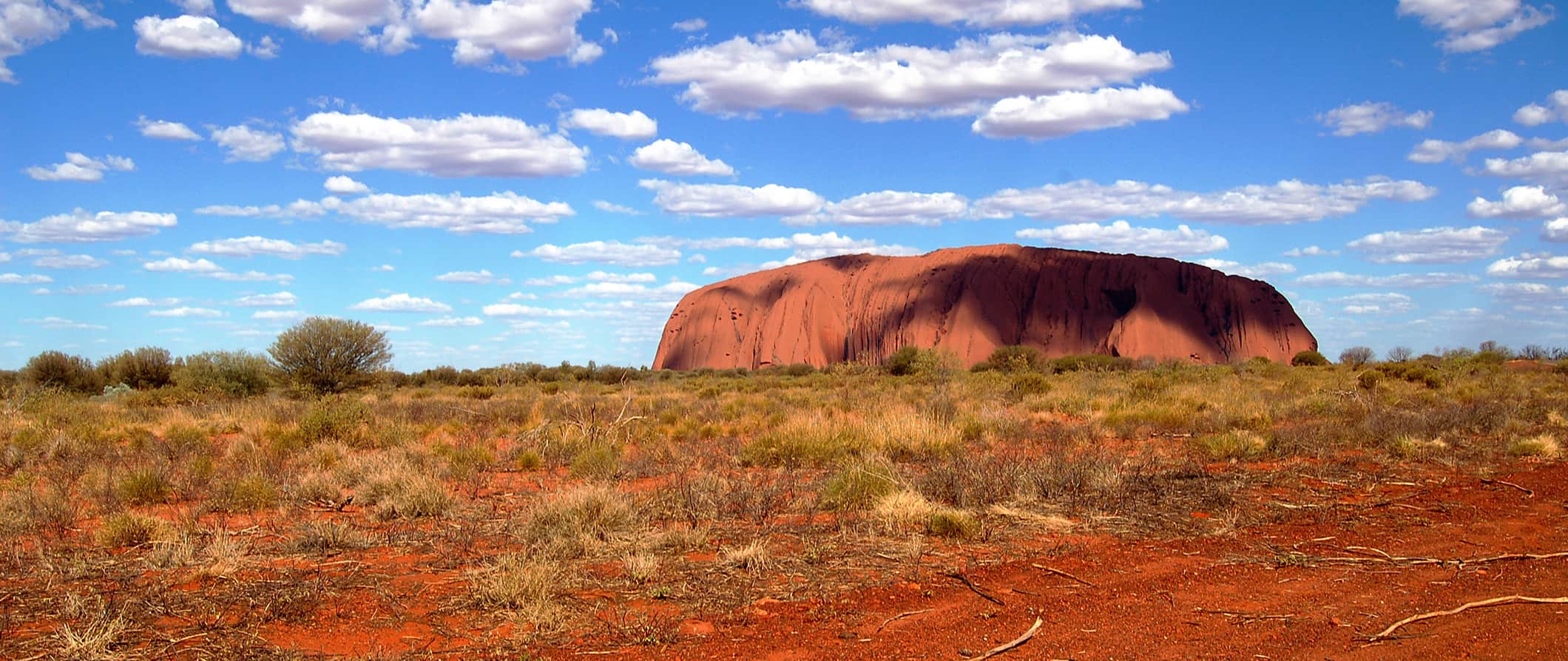
Accommodation – Hostels dorms start around 25-30 AUD per night, though they get as high as 40 AUD in the big coastal cities. Private rooms with a double bed and a shared bathroom in hostels range between 65-100 AUD per night, though in larger cities they can be as high as 150 AUD. Expect basic amenities like free Wi-Fi and self-catering facilities. Only some hostels include breakfast.
For those traveling with a tent, a basic tent plot without electricity starts around 7 AUD, though most are 10-25 AUD per night.
For budget hotels, expect to spend 100-120 AUD per night for a two-star hotel. Amenities usually include TV, Wi-Fi, and AC. Some hotels have a pool.
Airbnb is available around the country with private rooms starting around 40 AUD (though they average closer to 90 AUD). Entire homes/apartments cost at least 140 (though they are usually double or even triple that price so be sure to book early). Expect to pay about 10-20% more in the coastal cities.
Food – Food in Australia is diverse, with each region having its own specialties. While you can find cuisine of all types here, popular traditional choices include BBQ meat (especially sausages), meat pies, fish and chips, seafood, chicken parmigiana (chicken schnitzel topped with tomato sauce, ham, and melted cheese), and, of course, the infamous vegemite on toast.
Food prices vary per region, but generally, you can expect to pay 20-25 AUD for a meal at a casual restaurant. A fast-food combo from somewhere like McDonald’s costs 13-14 AUD while a pizza costs around 16-20 AUD. Chinese, Thai, and Indian food cost 12-20 AUD for a main dish.
If you want to splash out for something more upscale, a expect to pay around 55-70 AUD, including a drink, per person.
A beer is around 8 AUD, latte or cappuccino costs around 5 AUD, and bottled water between 2-3 AUD.
If you cook your own meals, expect to pay around 75-95 AUD per week for groceries. This gets you basic staples like pasta, rice, seasonal produce, and some meat.
Backpacking Australia Suggested Budgets
On a backpacker budget, you can visit Australia for 70 AUD per day. This assumes you’re staying in a cheap hostel, cooking all of your meals, using public transportation to get around, and doing mostly cheap or free activities like hiking and enjoying the beaches. If you camp, you can lower this budget by around 20 AUD per day. If you plan on drinking, add 10-20 AUD to your daily budget.
On a mid-range budget of 200 AUD per day, you can stay in a private Airbnb or hostel room, eat out for a couple of meals, enjoy a few drinks, take the occasional taxi to get around, bus between cities, and do more paid activities like taking surf lessons or going diving.
On a “luxury” budget of 385 AUD or more, you can stay in a hotel, eat out for all your meals, drink more, rent a car or camper van to explore, and do whatever tours and activities you want. This is just the ground floor for luxury though. The sky is the limit!
You can use the chart below to get some idea of how much you need to budget daily, depending on your travel style. Keep in mind these are daily averages – some days you’ll spend more, some days you’ll spend less (you might spend less every day). We just want to give you a general idea of how to make your budget. Prices are in AUD.
Australia Travel Guide: Money-Saving Tips
Australia can be a very expensive country to visit. If you aren’t careful, you’ll blow through your entire budget in no time as activities, food, and transportation all adds up fast here. Fortunately, there are lots of ways to save too. Here are some ways to save money when you visit Australia:
- Drink goon (box wine) – Goon is infamous on the Australian backpacker hostel trail. This cheap box of wine is the best way to drink, get a buzz, and save a lot of money at the same time. Drink this before you go out and save on spending money at the bar.
- Cook your own meals – The best way to reduce your costs is to cook as many meals as possible. Hostels and Airbnbs usually have kitchens and, while it’s not glamorous, it will save you a ton of money!
- Car share – Australia is a big country that can be expensive to get around. If you are traveling with friends, it’s smart to buy a used car or campervan (or rent a new one from one of the many rental companies in the country) and split the costs of gas. You can also hitch a ride with other travelers using sites like Gumtree, Jayride, or hostel message boards.
- Book tours as a package – This country has a lot of exciting activities and tours that eat into any budget. Booking activities together through a hostel or tour agency can get you a discount and save you hundreds of dollars.
- Work for your room – Many hostels offer travelers the opportunity to work for their accommodation. In exchange for a few hours a day of cleaning, you get a free bed to sleep in. Commitments vary but most hostels ask that you stay for at least a week. Check with the staff when you arrive to see if there are any opportunities available.
- WWOOF – WWOOFing is a program that allows you to work on organic farms in exchange for free room and board. Everyone I’ve met who stays in the country long-term does it for at least one month. It’s a great way to reduce your expenses and can a deeper look into local life.
- Stay with a local – Accommodation in Australia is pricey. If you plan ahead, you can usually find a Couchsurfing host that will host you for free. It’s the best way to connect with a local and get insider tips and advice.
- Camp – Camping is very affordable here, with basic tent plots costing as little as 7 AUD per night!
- Bring a reusable water bottle – The tap water in Australia is safe to drink so bring a reusable water bottle with you to save money and lower your plastic use. LifeStraw makes a bottle with a built-in filter to ensure your water is always clean and safe.
Where To Stay in Australia
I’ve been a backpacker here for ages and have accumulated a long list of places to stay. Here are my suggested places to stay in Australia if you’re looking for a hostel:
- Base St. Kilda (Melbourne)
- Space Hotel (Melbourne)
- Wake Up! (Sydney)
- YHA Rocks (Sydney)
- Bunk Brisbane (Brisbane)
- City Backpackers HQ (Brisbane)
- Kimberley Travellers Lodge (Broome)
- The Shiralee Hostel (Perth)
- Aquarius Backpackers (Byron Bay)
- Gilligan’s Backpacker Hotel & Resort Cairns (Cairns)
- Nomads Noosa (Noosa)
- Alice Lodge Backpackers (Alice Springs)
How to Get Around Australia
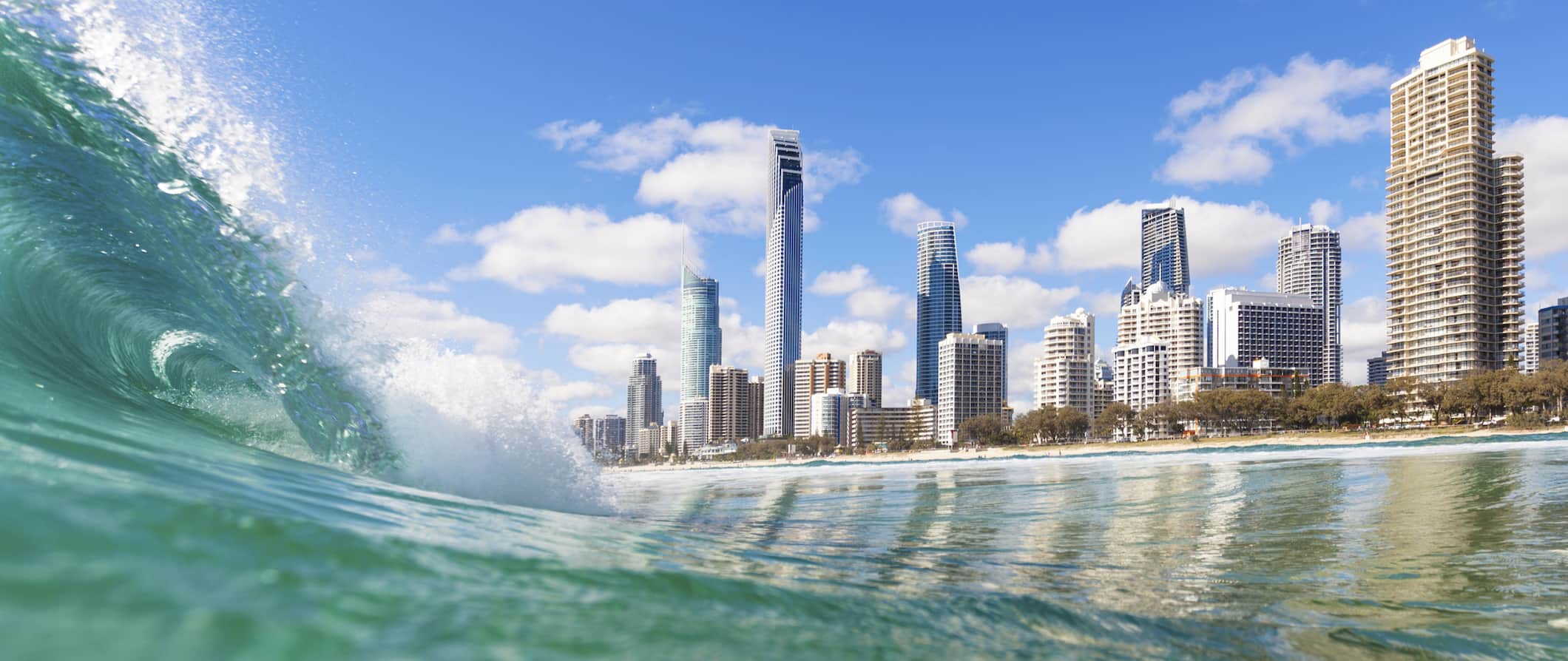
Public transportation – All of Australia’s cities have reliable, affordable public bus systems. In the bigger, cities such as Sydney, Melbourne, Brisbane, Adelaide, and Perth, you’ll even find subways and tram systems. This is the cheapest way to travel the cities. Fares cost between 2.75-4 AUD.
Many cities offer day passes that include unlimited public transportation for under 10 AUD.
Bus – After driving, this is my favorite transportation option in Australia. On the east coast, this will be your cheapest option too. On the west coast, buses are surprisingly expensive as there are not many people moving up and down that coast and there’s limited competition. However, on the east coast, you can find really cheap bus tickets, especially if you book in advance.
The two main bus companies in Australia are:
- Greyhound Australia
Greyhound also offers several bus passes. Their Whimit Passes range from 15-120 days of unlimited travel and are perfect for traveling around on a whim (hence the name). They come in 15, 30, 60, 90, and 120-day passes costing 349-729 AUD.
To find bus routes and prices, use BusBud .
Backpacker Bus – If you want to party with other backpackers as you travel, book a seat on the Magic Bus . This backpacker bus departs with 25 backpackers aged 18-35 for 3-4 weeks of exploring the country’s national parks, camping, bonfires, and non-stop parties and shenanigans.
Trips go from Perth north to Broome or east to Melbourne each month, so you have to time your trip accordingly to line up with the set departure. The itineraries are always flexible so every trip is unique. They try to keep a balance of 50% men and 50% women, as well as a balance of different nationalities, so there is always a diverse group. Prices vary so contact them for departure dates and ticket prices.
Train – Between city trams, commuter trains, and long-distance and trans-continental trains, Australia can be seen extensively by rail. Train lines exist mostly on the east coast with only two other major lines in the country: one goes north/south from Melbourne to Darwin and another east/east from Sydney to Perth.
For reference, Sydney to Canberra takes 5 hours and is 40-50 AUD while the 11-hour trip from Sydney to Melbourne costs over 200 AUD. Sydney to Brisbane takes 14 hours and costs 100-140 AUD.
Beyond the east coast, trains aren’t as plentiful and long-distance trains can be very expensive.
Flying – With Australia spanning over 7,000,000 square kilometers, it takes a long time to get around the country. Flying is one of the most efficient ways to city hop, but it’s not the cheapest. Australia’s major airlines include:
When booked in advance, flights can be very affordable here. Sydney to Melbourne is just 55 AUD and takes 90 minutes while Sydney to Cairns takes 3 hours and costs around 100 AUD each way. To cross the country, flights last around 5 hours. Sydney to Perth, when booked in advance, can cost as little as 150 AUD each way.
When not booked early, however, flights can easily double or triple these prices.
Rideshares – Every hostel has a bulletin board where travelers post rides and websites like Gumtree have active ridesharing sections where people look for cars or riders. I HIGHLY recommend this way of traveling when in the country. CoSeats is another good resource for finding rides.
Car rental – Car rentals start around 40 AUD per day. You don’t need one to explore any of the cities but if you want to travel the country then a car is best. Just remember that they drive on the left here.
Additionally, you can also purchase a car from backpackers leaving the country or locals selling used cars. You can usually find a used car for under 3,000 AUD. It might seem a lot, but there are always backpackers looking to share rides, which can cut down on our expenses.
When to Go to Australia
Temperatures vary across the country (it’s a huge landmass after all), but generally speaking, average summer temperatures range from 20-37°C (68-99°F). Remember that summer is from December-February here in the southern hemisphere. This is the most popular time to visit so expect big crowds and higher prices.
June-August (winter) is the low season. Prices are lower and there are fewer crowds. The temperature dips as well, hovering around 1°C (52°F) in the south while going as high as 30°C (86°F) in the north.
Spring and fall (March-May and September-October) are the shoulder season and the best time to visit. Crowds aren’t as big and prices aren’t as high and the weather is still enjoyable too, rarely dipping below 17°C (63°F).
Note that October to April is also “jellyfish season,” making waters unsafe for swimming or any other water sport. If you’re planning on enjoying Australia’s coast, this probably isn’t the best time to come. The season lasts from October to April in Northern Australia, and then from November to March elsewhere.
How to Stay Safe in Australia
Australia is an incredibly safe place to backpack and travel around. Violent attacks and petty theft are rare here so you’re unlikely to get into trouble.
Most incidents in Australia tend to occur because visitors are not used to the country’s unique climate and wilderness. Be sure you have plenty of sunscreen and stay as hydrated as possible. This is especially true if you’re driving through the Outback. There are long, long distances without any towns in sight, so if you break down, you’ll want to be prepared. Always make sure you have enough gas in your vehicle for long drives.
If you’re hiking, make sure you know what to expect ahead of time. Be on the lookout for snakes and spiders. If you’re bitten, seek immediate care.
If you’re swimming, heed the red and yellow flags. Yellow flags indicate swimming conditions may be dangerous; red flags mean the beach is closed.
Mother Nature in Australia is NOT a force to be reckoned with in this country. Don’t be a hero.
Solo female travelers are generally safe here, however, the standard precautions apply (never leave your drink unattended at the bar, never walk home alone at night intoxicated, etc.). Consult other solo female travel blogs for specific advice.
If you’re worried about travel scams, you can read about common travel scams to avoid here . There aren’t many in Australia though so I wouldn’t worry too much here.
If you experience an emergency, dial 000 for assistance.
The most important piece of advice I can offer is to purchase good travel insurance. Travel insurance will protect you against illness, injury, theft, and cancellations. It’s comprehensive protection in case anything goes wrong. I never go on a trip without it as I’ve had to use it many times in the past. You can use the widget below to find the policy right for you:
Australia Travel Guide: The Best Booking Resources
These are my favorite companies to use when I travel. They consistently have the best deals, offer world-class customer service and great value, and overall, are better than their competitors. They are the companies I use the most and are always the starting point in my search for travel deals.
- Skyscanner – Skyscanner is my favorite flight search engine. They search small websites and budget airlines that larger search sites tend to miss. They are hands down the number one place to start.
- Hostelworld – This is the best hostel accommodation site out there with the largest inventory, best search interface, and widest availability.
- Booking.com – The best all around booking site that constantly provides the cheapest and lowest rates. They have the widest selection of budget accommodation. In all my tests, they’ve always had the cheapest rates out of all the booking websites.
- Get Your Guide – Get Your Guide is a huge online marketplace for tours and excursions. They have tons of tour options available in cities all around the world, including everything from cooking classes, walking tours, street art lessons, and more!
- Rome2Rio – This website allows you to see how to get from point A to point B the best and cheapest way possible. Just enter your departure and arrival destinations and it will give you all the bus, train, plane, or boat routes that can get you there as well as how much they cost. It’s one of the best transportation websites out there!
- SafetyWing – Safety Wing offers convenient and affordable plans tailored to digital nomads and long-term travelers. They have cheap monthly plans, great customer service, and an easy-to-use claims process that makes it perfect for those on the road.
- LifeStraw – My go-to company for reusable water bottles with built-in filters so you can ensure your drinking water is always clean and safe.
- Unbound Merino – They make lightweight, durable, easy-to-clean travel clothing.
- Top Travel Credit Cards – Points are the best way to cut down travel expenses. Here’s my favorite point earning credit cards so you can get free travel!
Australia Travel Guide: Related Articles
Want more information? Check out all the articles I’ve written on Australia travel and continue planning your trip:
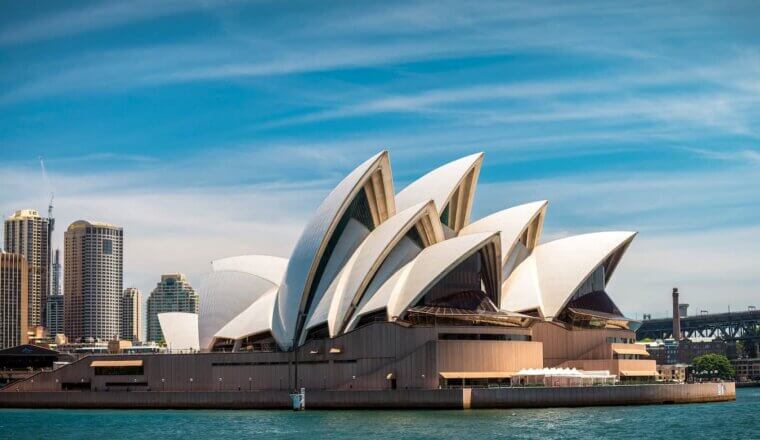
The 7 Best Hotels in Sydney
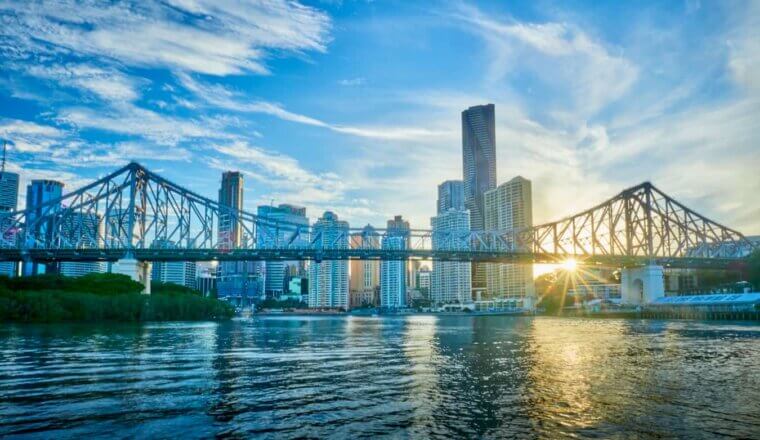
Where to Stay in Brisbane: The Best Neighborhoods for Your Visit
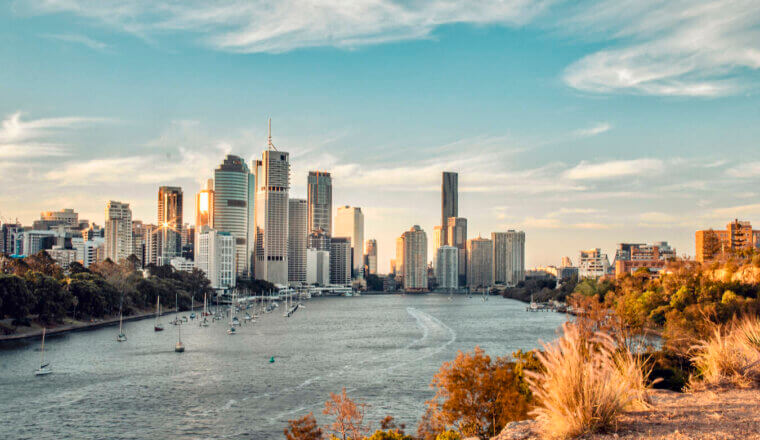
The 6 Best Hotels in Brisbane
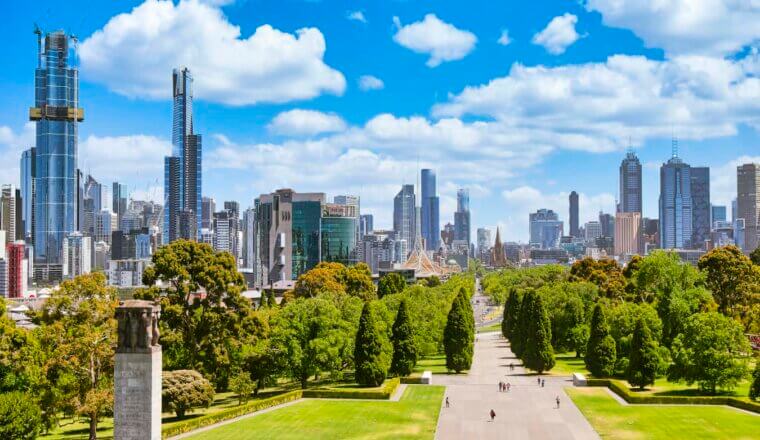
The Best Walking Tours in Melbourne
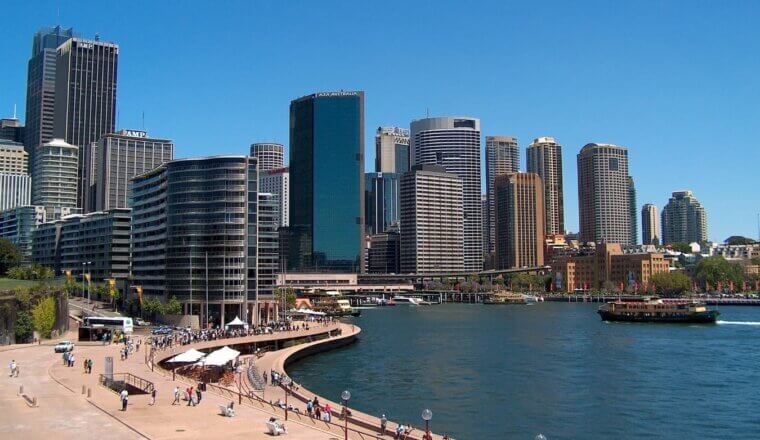
The Best Walking Tours in Sydney
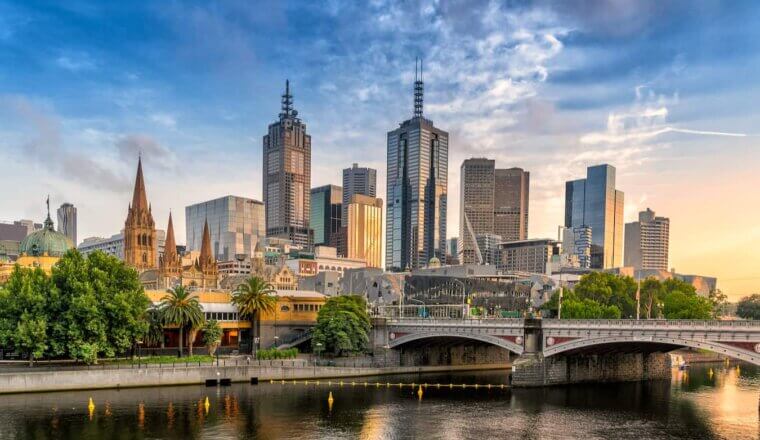
Where to Stay in Melbourne: The Best Neighborhoods for Your Visit
Get your free travel starter kit.
Enter your email and get planning cheatsheets including a step by step checklist, packing list, tips cheat sheet, and more so you can plan like a pro!

- Where To Stay
- Transportation
- Booking Resources
- Related Blogs

Planning a Trip to Australia? 10 Important Things to Know
M illions of visitors from North America, Europe, Asia, and other parts of the world flock to the land down under in search of their own adventures–whether its for the food, the amazing wildlife, the incredible views, or just the sheer size of the place, Australia is full of surprises!
Whatever your reason for taking a trip to Australia, let’s talk about some of the things that will help you navigate your Australian experience as smoothly as possible.
Taking a Trip to Australia? What to Know
The seasons.
You might know this already, but since Australia is in the Southern Hemisphere, its seasons are reversed from the Northern Hemisphere. However, it’s not quite as simple as that. There’s a difference from the country’s south versus the north.
The best time to travel to southern Australia (Sydney, for example) is November to April, but that’s different when you’re visiting the north (like the Top End or the Great Barrier Reef) where this time of year is humid and soggy season.
The bottom line is check out the weather for exactly where you’ll be staying on your trip to Australia and know what weather conditions to expect.
The feeling of being in the middle of nowhere
The gaps between major cities are incredibly far in Australia. Not only are they farther in the United States or Europe, there are also typically far fewer towns between them.
Once you’re out of any major city, you’ll feel like you’re in the middle of nowhere. Rather than an hour or two between cities or towns, it could be several, so plan accordingly, and keep a full tank of gas and any emergency supplies you’ll need in case your car breaks down.
The amazing natural areas
Australia is known for it’s natural beauty and for plant and animal species that are found nowhere else in the world.
As these plants and animals have become threatened by extreme weather events and humans encroaching into their habitats, Australia has made the decision to set aside at least 30% of its land mass for conservation in a bid to protect them.
There are literally thousands of national parks and conservation reserves in the country, so no matter where you are in Australia, exploring the country’s incredible landscapes should be easy.
Electric outlets are not like ours
It might seem like a small thing, but as you’re packing for a trip to Australia, it’s something you’ll need to keep in mind. The country uses differently-shaped electric outlets. They’re not like the British ones, nor are they American or European either.
Australia has their own special electric plug sockets, so, if you’re taking any small appliances, like curling irons, etc., just remember to buy electric outlet converters before your vacation.
Kangaroos, koalas, and other animals unique to Australia
Australia is home to animals found nowhere else on earth, including the koala, kangaroo, wombat, platypus, echidna, and others.
You may spot them in the wild, but it’s more likely that you’ll need to venture out to a reserve or nature park away from the city to see them.
Of course, there’s always a chance to spot a kangaroo or koala in any area outside the city.
Tipping isn’t a common practice
Hospitality workers in Australia are paid a whole lot better than in the US and many other parts of the world, so workers don’t necessarily expect tips and don’t rely on them to make a decent living.
That said, tipping is, of course, appreciated. If your budget allows, you can tip up to 10% of the bill , especially when in a group setting where more items are ordered and extra service is required.
Beer connoisseur? Go local
If you’re heading out to a bar in Australia, it’s best to go local when it comes to your choice of beer. Australia has a ton of great local brands as well as micro-breweries that are definitely worth trying.
If you’re unsure about what to try or where to go, there’s no shortage of award-winning micro-breweries to choose from!
Mind the sun
You may know this already, but the sun is REALLY STRONG in Australia, so stock up on sunscreen, and respect the fact that you’ll probably get sunburned a lot quicker than you would back home. In fact, a sunburn can occur in as little as 15 minutes in the hot Aussie sun.
A high-SPF sunscreen, sun hat, and clothing and beach wear that protects your skin is your best bet if you plan to hit the beach—or spend any time outdoors. Don’t let a painful sunburn ruin your trip when it’s relatively easy to prevent.
The distances between every location
Many people make the mistake of trying to explore the entirety of Australia in a couple of weeks, not realizing that it’s a vast continent as well as a country.
Instead, it’s a better idea to choose two or three areas to travel extensively, and check them off your travel list. If you don’t, much of your visit will be spent traveling, not enjoying everything the country has to offer. For example, did you know that it takes nine hours to drive from Sydney to Melbourne?
Driving in Australia
Speaking of driving, Australians drive on the left side of the road, so if you’re coming from the United States, this is something you’ll have to get used to quickly.
Here are some other things to know about driving down under :
- Australia uses the metric system of distances and speeds.
- Australian cars are right-hand drive vehicles.
- In Australia, you can drive with a foreign (English language) license for up to three months.
- Seat belts are required for all of a vehicle’s occupants, and these laws are strictly enforced. Children and babies must be restrained in an approved safety or booster seat, in some states up to seven years old.
- The blood alcohol limit is .05% throughout Australia, with zero limits for learners and drivers with provisional licenses in some states.
- In case of an accident involving injury or death, the police must be contacted, and the driver is legally required to render assistance. The penalties for leaving an accident scene can be severe.
- Speed limits are clearly posted. A default 50km/hour speed limit applies in urban areas with street lights in the rare event that there is no other signposted limit.
- Speed cameras are used in all states and territories of Australia, with some states using hidden cameras. Point-to-point speed checks (over a certain distance) or aerial speed checks are also used in some places. There is no defined margin of tolerance for speeding.
- Rental vehicle companies may ask you to take a short road rules test focused towards tourist requirements.
- Permits can be necessary to travel through aboriginal communities and towns in certain remote areas.
- As mentioned, drivers need to be prepared and self-sufficient before travelling through remote areas. Even on major regional roads, service stations may not be open overnight, so plan ahead when it comes to getting fuel.
- Many accidents occur at night due to the presence of native animals which become more active in the evenings, for this reason some car rental companies impose a curfew on driving after sunset in Western Australia and the Northern Territory.
There you have it! Ten things to keep in mind before and during your trip to Australia. Is Australia on your wish list of places you’d like to visit–or may-be even live someday? Leave us a comment.
______________
Flight Hack: How to Use the 24-Hour Rule to Save Big
10 Unique & Memorable Souvenir Ideas for Your Next Vacation
5 Simple Tips for Healthy Travel + What to Include in your Travel Health Kit
You can also find MomsWhoSave on Pinterest , Facebook , Instagram , and Twitter . Join us for updates.
Don’t miss a thing! Subscribe to MomsWhoSave’s newsletter .
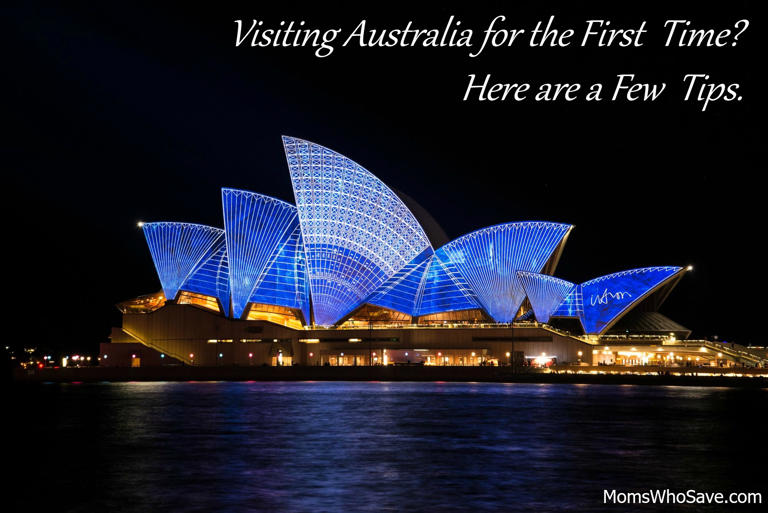
- Travel Updates
Stolen bag tracked to airport staffer’s home
A passenger managed to track down her stolen luggage with the help of her Apple Watch and you wouldn’t believe where she found it.
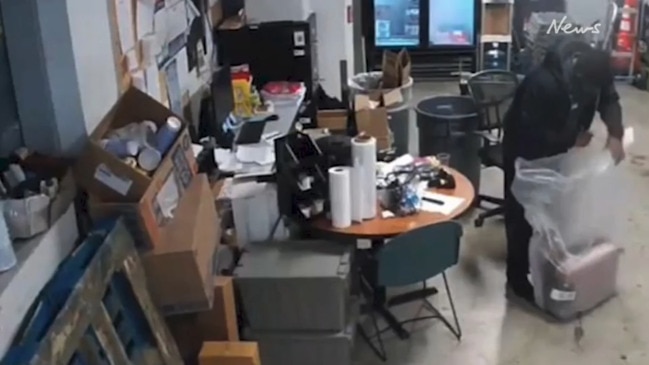
Terrifying moment for 2yo on safari

‘Like a ticking bomb’: Grim details emerge
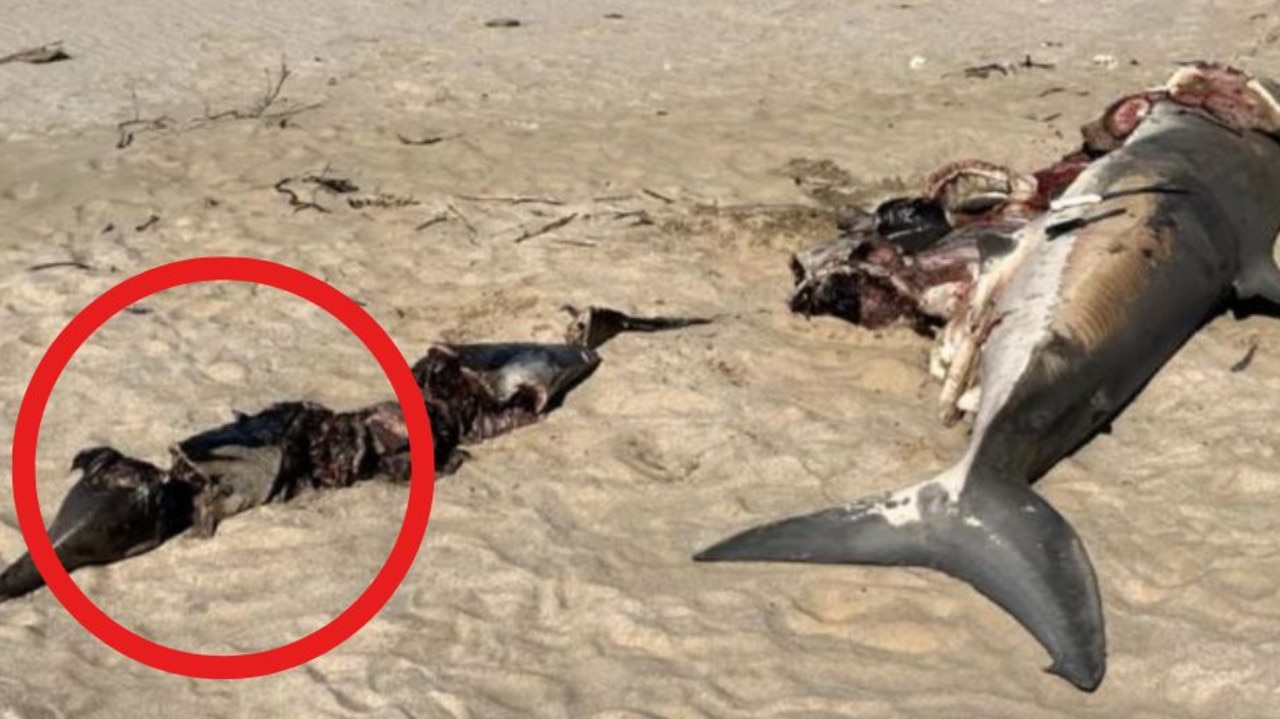
Gruesome find next to gutted shark
A Spirit Airlines passenger managed to track down her stolen luggage after it vanished when she arrived at a Florida airport — using one of the stolen items to aid in her desperate search.
Paola Garcia had been waiting for her small pink hard shell luggage, containing several Apple products like her personal MacBook and two Apple Watches, at the Fort Lauderdale-Hollywood International Airport’s carousel after returning home to the Sunshine State, according to Florida publication Local 10.
The exact timing of the incident remains unclear, but Ms Garcia’s desperation to find her stolen property led her to the apparent culprit’s house even before local cops.
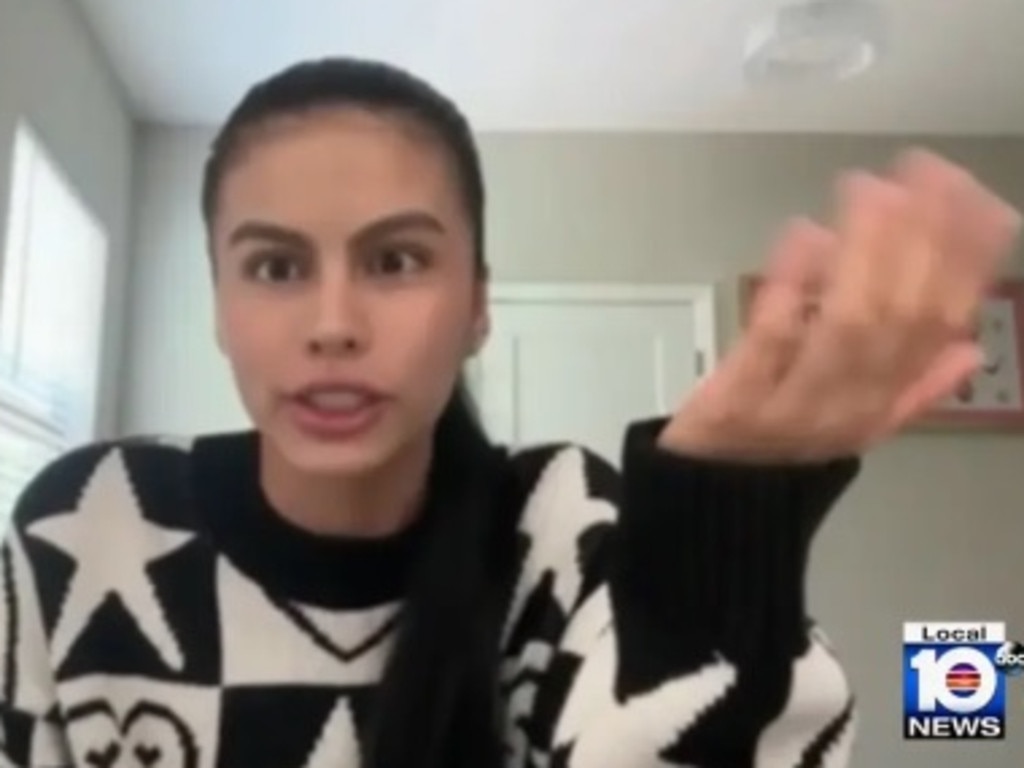
Ms Garcia told the outlet she always carried on her luggage without issue, but this time, employees of the US budget carrier, Spirit Airlines, made her check the bag before she departed from New York.
She panicked as she watched others grab their bags from the carousel, and her luggage didn’t appear.
“In my mind, I’m thinking I need my computer because I go to the university, I need my computer no matter what,” Ms Garcia told Local 10.
Ms Garcia said she waited “at least two hours” before giving up hope that her luggage would arrive on the conveyor belt.

Spirit Airlines employees told Ms Garcia not to worry and that her luggage would be sent to her house, she told the outlet.
The next day, she began receiving a ping from one of her Apple Watches – except it wasn’t coming from the airport but 15 minutes away at a Fort Lauderdale home.
It was the home of Junior Bazile, who worked in the retail store Paradies Shops at the Fort Lauderdale-Hollywood International Airport, according to an arrest affidavit obtained by Local 10.
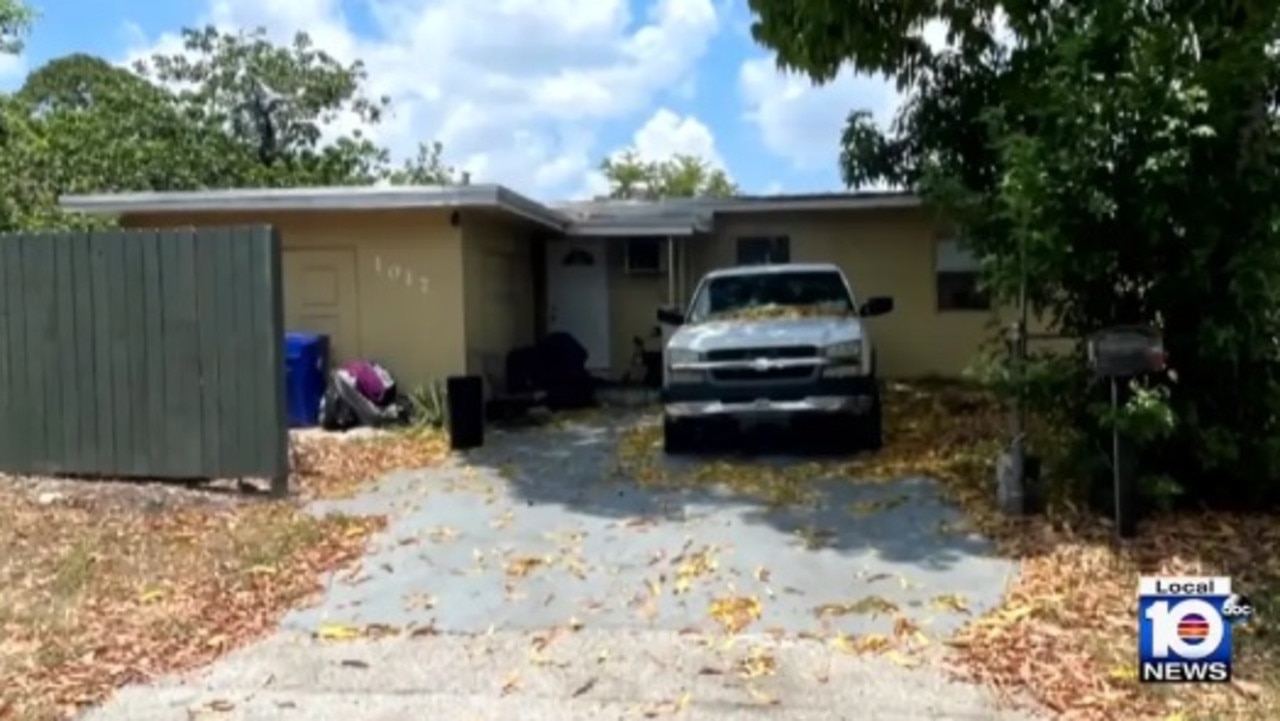
Determined to get her belongings back, she went to the home, found her suitcase and her things, and immediately called the police.
When police arrived, Ms Garcia said, the “first thing” they did was ask why she was at the home.
“The police told me was like, ‘What are you doing here? This is so dangerous for you to be here,’” Ms Garcia explained.
The Broward Sheriff’s Office found that Bazile, 29, was an airport employee and was working the day Garcia’s things went missing.
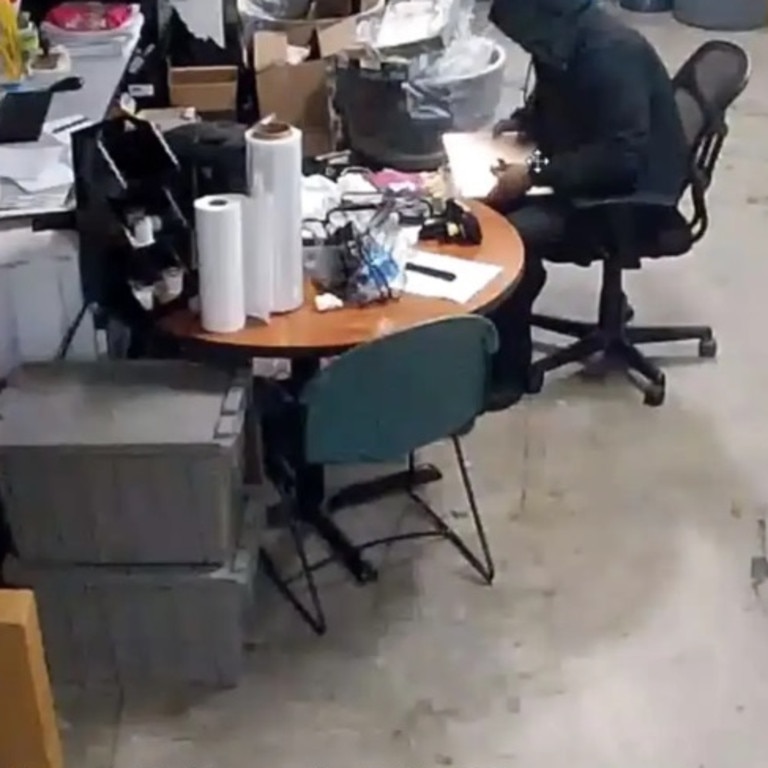
Unfortunately, by the time police arrived, the alleged airport thief had already gotten rid of her belongings.
An investigation was launched, and police found pictures of Bazile rummaging through Garcia’s suitcase in the back of the store where he worked at the airport.
Bazile was arrested and charged with grand theft — a felony offence in Florida if the valuables taken are worth over $US750 ($A1130).
If found guilty of grand theft, the accused could face five to 30 years in prison and fines ranging from $US5,000 to $US10,000 ($A7500 to $A15,000) depending on the case.
But Ms Garcia worries Bazile may be part of a bigger operation of thieves, according to the outlet.
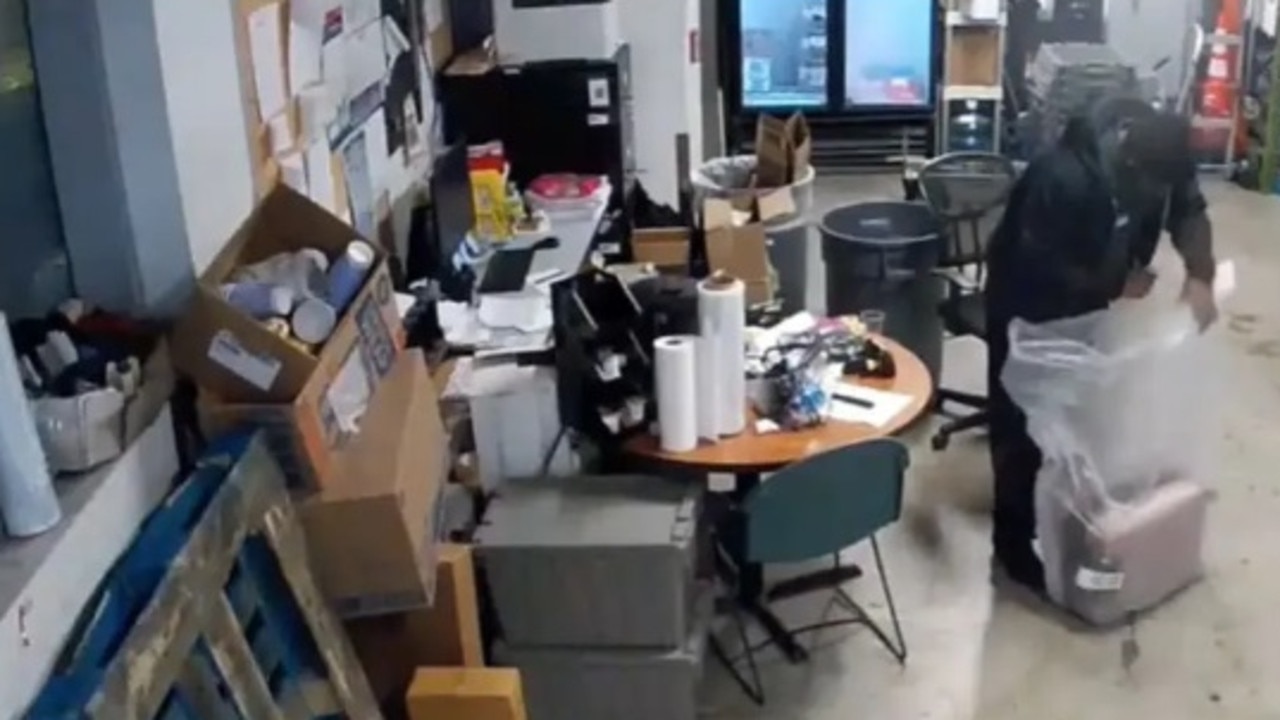
“Personally, I don’t think it’s one person working in the airport, I think it’s a group,” she said. “One person can’t just do that, take bags.”
Law enforcement did not reveal how Bazile was able to steal the luggage.
After it was confirmed that MsGarcia’s luggage was stolen, Spirit Airlines released a statement saying it reimbursed her as a “courtesy”.
“We issued a reimbursement check to the guest as a courtesy, even though we are not currently aware of any evidence that any Spirit employee was involved,” the airline told the outlet. “We take any allegation of this nature seriously, and we are investigating.”
This is not the first time a Florida airport employee has been caught red-handed stealing from travellers.
More Coverage

In June 2023, surveillance footage captured two TSA officers allegedly stealing at least $US600 (A900) in cash and other items from unsuspecting passengers’ luggage at Miami International Airport.
Video from the checkpoint shows the two accused thieves at the baggage drop-off section working together to take money from wallets and purses that passed them on their way to the X-ray machine. The thefts occurred while the passengers were distracted by the screening process and not paying attention to their items.
This article originally appeared on the New York Post and was reproduced with permission
Dramatic vision has emerged of the moment a fully grown giraffe lunged down while a car travelled past, horrifying bystanders.
Two more Boeing whistleblowers have gone public over what they allege are dangerous practices at the once-great but now-scandal-scarred manufacturer.
A marine expert has made a spinechilling find while visiting a popular beach, with photos revealing just how brutal the ocean really is.

Countries, economies and regions
Select a country, economy or region to find embassies, country briefs, economic fact sheets, trade agreements, aid programs, information on sanctions and more.
International relations
Global security.
- Australia and sanctions
- Australian Safeguards and Non-proliferation Office (ASNO)
- Counter-terrorism
- Non-proliferation, disarmament and arms control
- Peacekeeping and peacebuilding
Regional architecture
- Asia Pacific Economic Cooperation (APEC)
- Association of Southeast Asian Nations (ASEAN)
- East Asia Summit (EAS)
- Australia and the Indian Ocean region
- Pacific Islands regional organisations
Global themes
- Child protection
- Climate change
- Cyber affairs and critical technology
- Disability Equity and Rights
- Gender equality
- Human rights
- Indigenous peoples
- People Smuggling, Human Trafficking and Modern Slavery
- Preventing Sexual Exploitation, Abuse and Harassment
- Australia’s treaty-making process
International organisations
- The Commonwealth of Nations
- United Nations (UN)
- World Trade Organization
Foreign Arrangements Scheme
Trade and investment, about free trade agreements (ftas).
- The benefits of FTAs
- How to get free trade agreement tariff cuts
- Look up FTA tariffs and services market access - DFAT FTA Portal
- Discussion paper on potential modernisation – DFAT FTA Portal
About foreign investment
- The benefits of foreign investment
- Investor-state dispute settlement (ISDS)
- Australia's bilateral investment treaties
- Australia's foreign investment policy
For Australian business
- Addressing non-tariff trade barriers
Expo 2025 Osaka, Kansai
Stakeholder engagement.
- Ministerial Council on Trade and Investment
- Trade 2040 Taskforce
- First Nations trade
Australia's free trade agreements (FTAs)
- ASEAN-Australia-New Zealand (AANZFTA)
- Chile (ACLFTA)
- China (ChAFTA)
- Hong Kong ( A-HKFTA & IA)
- India (AI-ECTA)
- Indonesia (IA-CEPA)
- Japan (JAEPA)
- Korea (KAFTA)
- Malaysia (MAFTA)
- New Zealand (ANZCERTA)
- Peru (PAFTA)
- Singapore (SAFTA)
- Thailand (TAFTA)
- United Kingdom (A-UKFTA)
- USA (AUSFTA)
- Trans-Pacific Partnership (TPP)
- European Union (A-EUFTA)
- India (AI-CECA)
- Australia-UAE Comprehensive Economic Partnership Agreement
- Australia-Gulf Cooperation Council (GCC)
Trade and investment data, information and publications
- Fact sheets for countries and regions
- Australia's trade balance
- Trade statistics
- Foreign investment statistics
- Trade and investment publications
- Australia's Trade through Time
WTO, G20, OECD, APEC and IPEF and ITAG
Services and digital trade.
- Service trade policy
- Australia-Singapore Digital Economy Agreement
- Digital trade & the digital economy
Development
Australia’s development program, performance assessment.
- Development evaluation
- Budget and statistical information
Who we work with
- Multilateral organisations
- Non-government organisations (NGOs)
- List of Australian accredited non-government organisations (NGOs)
Development topics
- Development issues
- Development sectors
2030 Agenda for Sustainable Development
- Sustainable Development Goals
Where we deliver our Development Program
Humanitarian action.
Where and how Australia provides emergency assistance.
People-to-people
Australia awards.
- Australia Awards Scholarships
- Australia Awards Fellowships
New Colombo Plan
- Scholarship program
- Mobility program
Public diplomacy
- Australian Cultural Diplomacy Grants Program
- Australia now
- UK/Australia Season 2021-22
Foundations, councils and institutes
- Australia-ASEAN Council
- Australia-India Council
- Australia-Indonesia Institute
- Australia-Japan Foundation
- Australia-Korea Foundation
- Council for Australian-Arab Relations (CAAR)
- Council on Australia Latin America Relations (COALAR)
International Labour Mobility
- Pacific Labour Mobility Scheme
- Agriculture Visa
Australian Volunteers Program
Supporting organisations in developing countries by matching them with skilled Australians.
Sports diplomacy
Australia is a successful global leader and innovator in sport.
A global platform for achievement, innovation, collaboration, and cooperation
About Australia
Australia is a stable, democratic and culturally diverse nation with a highly skilled workforce and one of the strongest performing economies in the world.
Australia in Brief publication
This is the 52nd edition of Australia in Brief, revised and updated in February 2021
Travel advice
To help Australians avoid difficulties overseas, we maintain travel advisories for more than 170 destinations.
- Smartraveller – travel advice
International COVID-19 Vaccination Certificate
Prove your COVID-19 vaccinations when you travel overseas.
- Services Australia
The Australian Passport Office and its agents are committed to providing a secure, efficient and responsive passport service for Australia.
- Australian Passport Office
24-hour consular emergency helpline
- Within Australia: 1300 555 135
- Outside Australia: +61 2 6261 3305
- Getting help overseas
- Visas for Australians travelling overseas
- Visas to visit Australia
Development assistance in the Pacific
Australia’s pacific regional development program.
2024-25 allocation [budget estimate]
$703.9 million
2024-25 total Australian ODA [budget estimate]
$738.3 million
2023-24 allocation [budget estimate]
$613.2 million
2023-24 total Australian ODA [budget estimate]
$723.4 million
2022-23 total Australian ODA [actual]
$489.5 million
* The Pacific Regional Program is a discrete appropriation that complements Pacific Bilateral programs. A portion of this funding is directly attributable to specific Pacific countries and this is included in their Total Australian ODA.
* The Total Australian ODA figure represents funding to the Pacific region that is not attributable to a specific country. It includes funding from the Pacific Regional Program, several other regional and global programs and other Australian government departments.
As the largest development partner in the Pacific, Australia is supporting Pacific partners to navigate the challenges of climate change, COVID recovery, natural disasters and pressing human development and sustainable infrastructure needs.
We are listening and responding to Pacific priorities, building genuine partnerships, and investing to ensure prosperity for communities and for generations to come. At every step, we work together on shared regional interests, respond to Pacific priorities and respect Pacific institutions.
We deliver tangible support directly to Pacific governments, as well as via NGOs, academic institutions, regional organisations, multilateral partners, churches and the private sector. Pacific people and organisations are central to prioritising and shaping our regional development assistance.
Australia is working with Pacific Island countries both to implement Australia's new International Development Policy . Key commitments of this policy including genuine and respectful partnerships, strengths-based approaches, climate change, gender equality and inclusion, localisation, civil society, innovative development financing and accountability for results.
We are designing a new Pacific Regional Development Partnership Plan (DPP), which presents a long-term vision for how our Pacific regional programs will meet the critical needs of our partners, while also supporting Australia's national interests and the interests we share with our region. Prior to finalisation of the Development Partnership Plan Australia continues to work within the Partnerships for Recovery: Australia's COVID-19 Development Response — which is focused on three key pillars for recovery - health security, stability and economic recovery. Specific details are outlined in the Pacific Regional COVID‑19 Development Response Plan .
A summary of results achieved by the Pacific Regional Program can be found in the Performance Reports (see related documents ).
Further information on regional programs can be found at:
- Australian Infrastructure Financing Facility for the Pacific
- Pacific Australia Labour Mobility (PALM) Scheme
- Climate change and resilience in the Pacific region
- Pacific Humanitarian Warehousing Program
- Effective regional institutions in the Pacific region
- Shared security in the Pacific
- Education in the Pacific region
- Fisheries assistance in the Pacific region
- Promoting gender equality and empowering women and girls in Pacific
- People connections in the Pacific
- Economic prosperity in the Pacific
- Economic growth and private sector development in the Pacific region
- Fisheries assistance in the Pacific
- Australia Pacific Sustainable Oceans and Livelihoods Partnership
- Australia’s assistance for health
- Indo-Pacific Centre for Health Security
- Water, sanitation and hygiene initiatives
Awesome, you're subscribed!
Thanks for subscribing! Look out for your first newsletter in your inbox soon!
The best things in life are free.
Sign up for our email to enjoy your city without spending a thing (as well as some options when you’re feeling flush).
Déjà vu! We already have this email. Try another?
By entering your email address you agree to our Terms of Use and Privacy Policy and consent to receive emails from Time Out about news, events, offers and partner promotions.
- Things to Do
- Restaurants
- Arts & Culture
- Coca-Cola Foodmarks
- Los Angeles
Get us in your inbox
🙌 Awesome, you're subscribed!

Heads up: tourist taxes will make these destinations more expensive for Australians in 2024
Don’t forget to budget for these surprise fees that are often tacked onto your accommodation bill

It seems like half of Australia is jetting off to Europe for a sizzling summer or heading to Japan for an epic ski season. After splashing out on flights, accommodation, tours and transportation, your wallets are likely feeling a bit lighter. We’re sorry to say, but another cost could be waiting for you when you touch down.
This year, international travel is set to rebound to its highest levels since 2019. While this sounds like a win-win for travellers and tourism operators, many cities, attractions and entire regions are struggling with overtourism. To tackle this problem, some of the world's most popular travel destinations are rolling out tourist taxes, which are often bundled into your airfare or added to your accommodation bill. These fees aim to help the destination regulate visitor numbers and upgrade local infrastructure for increased capacity.
Here are all the new and upcoming tourist taxes you need to be aware of in 2024.

Amsterdam, Netherlands
Amsterdam already holds the title for Europe's highest tourist tax and bumped this fee from seven to 12.5 per cent in 2024. This means travellers must now pay an average of €21.80 ( ~$35 AUD) per night and €11 for cruise passengers ( ~$18 AUD) .
Bali, Indonesia
In February 2024, Bali made history by introducing Indonesia’s first tourist tax. The one-time fee is collected upon arrival at the airport, costing RP 150,000 ( ~$14 AUD ).
Barcelona and Valencia, Spain
In April 2024, Barcelona raised its tourist tax from €2.75 to €3.25 ( ~$4-5 AUD ) per night. This tax only applies for the first seven consecutive nights and is an additional charge to the regional Catalan tax.
The Valencian Community, including the provinces of Castellón, Valencia and Alicante, will soon introduce a Valencian Tax on Tourist Stays (IVET), ranging from 50 cents to €2 ( ~80 cents to $3 AUD ) per night based on the accommodation type.
Bhutan has imposed a steep tourist tax ever since opening its doors to travellers in 1974. In 2022, the Himalayan kingdom raised fees to $200 USD per day, but that amount has since been dropped. In 2024, visiting adults will be charged $100 USD ( ~$150 AUD) per day, while children aged six to 12 will be charged half of that amount.
In January 2024, Iceland introduced a tourist tax to protect its ‘unspoilt nature’. Travellers staying in hotels now face a fee of ISK 600 ( ~ $6.50 AUD) per room, those at campsites and mobile homes pay ISK 300 ( ~ $3 AUD), and cruise ship passengers are charged ISK 1,000 ( ~$11 AUD ).
Manchester, UK
In 2023, Manchester became the first city in the UK to implement a tourist tax. Visitors staying at selected hotels in the city must pay £1 ( ~$2 AUD) per night per room.
Mount Fuji, Japan
Starting from July 2024, all climbers on the Mount Fuji Yoshida Trail must pay a 2,000 yen ( ~$19 AUD ) entry fee. A new cap of 4,000 climbers per day will also be enforced during the peak season (July to September).
Olhão, Portugal
Portugal’s largest fishing port introduced a tourist tax in June 2023, charging visitors €2 ( ~$3 AUD ) per night during the high season (April to October) and €1 ( ~$1.50 AUD ) outside of peak times (November to March). This fee will be charged in addition to your accommodation costs, limited to a maximum of five nights.
Paris, France
Ahead of the 2024 Olympic Games , Paris raised its existing nightly tourist tax, which previously ranged from €1 to €5 ( ~$1.50-$8 AUD ). The updated fee varies based on the accommodation type and the area of the city, with a night at a hostel charging an extra €2.60 ( ~$4 AUD ) and a night at a palace costing an extra €14.95 (~$24 AUD).
Venice, Italy
In April 2024, Venice introduced a €5 ( $8 AUD ) tourist tax, specifically targeting day-trippers visiting the 'old city' (comprising the entire lagoon region) on select days during the peak season from April to July. This tax does not apply to travellers staying overnight in hotels within Venice.
The European Union
Next year, the European Union plans to roll out a tourist visa, requiring all non-EU citizens from outside the Schengen Area, including Australians, to complete a €7 ( ~$11.50 AUD ) application for entry.
Stay in the loop: sign up for our free Time Out Australia newsletter for more news, travel inspo and activity ideas, straight to your inbox.
RECOMMENDED:
Prefer to skip the international tourist taxes these are the most incredible places to visit in australia, australian passport fees are already the world’s second most expensive – and prices will soar even higher this year, the world’s largest coral reef system is under severe threat. should we still be visiting it.
- Melissa Woodley Travel & News Editor, Time Out Australia
Share the story
An email you’ll actually love
Discover Time Out original video
- Press office
- Investor relations
- Work for Time Out
- Editorial guidelines
- Privacy notice
- Do not sell my information
- Cookie policy
- Accessibility statement
- Terms of use
- Modern slavery statement
- Manage cookies
- Time Out Market
Time Out products

Australia Recommends 2024

Come and Say G'day

G'day, the short film

Discover your Australia

Travel videos

Deals and offers

Australian Capital Territory

New South Wales

Northern Territory

South Australia

Western Australia

External Territories

The Whitsundays

Mornington Peninsula

Port Douglas

Ningaloo Reef

Airlie Beach

Kangaroo Island

Rottnest Island

Hamilton Island

Lord Howe Island

Tiwi Islands

Phillip Island

Bruny Island

Margaret River

Barossa Valley

The Grampians

Hunter Valley

McLaren Vale

Glass House Mountains

Alice Springs

Uluru and Kata Tjuta

The Kimberley

Flinders Ranges

Kakadu National Park

Eyre Peninsula

Karijini National Park

Great Barrier Reef

Blue Mountains

Daintree Rainforest

Great Ocean Road

Purnululu National Park

Cradle Mountain-Lake St Clair National Park

Litchfield National Park

Aboriginal experiences

Arts and culture

Festivals and events

Food and drink

Adventure and sports

Walks and hikes

Road trips and drives

Beaches and islands

Nature and national parks

Eco-friendly travel

Health and wellness

Family travel

Family destinations

Family road trips

Backpacking

Work and holiday

Beginner's guide

Accessible travel

Planning tips

Trip planner

Australian budget guide

Itinerary planner

Find a travel agent

Find accommodation

Find transport

Visitor information centres
Deals and travel packages

Visa and entry requirements FAQ

Customs and biosecurity

Working Holiday Maker visas

Facts about Australia

Experiences that will make you feel like an Aussie

People and culture

Health and safety FAQ

Cities, states & territories

Iconic places and attractions

When is the best time to visit Australia?

Seasonal travel

Events and festivals

School holidays

Public holidays
How to get to Australia's most iconic cities

How long do I need for my trip to Australia?

How to travel around Australia

Guide to driving in Australia

How to hire a car or campervan

How to plan a family road trip

How to plan an outback road trip

Florence Falls, Litchfield National Park, Northern Territory © Liam Neal
Things to know about travelling Australia on a budget
Australia’s diverse landscapes and distinct cities mean there’s plenty of freedom to roam. Make the most of your trip Down Under with these tips for having a cheap holiday in Australia.
Travel within Australia

Sunset on Stuart Highway, South Australia © Tourism Australia
With wide open spaces and landscapes ranging from red sand deserts to lush ancient rainforests, you’ll likely want to visit more than one place once you arrive. Australia’s budget airlines Bonza and Jetstar offer cheap fares, and prices tend to be lower if you travel in the early morning or late evening. Sites like Wotif can also be helpful for booking car rentals, so you can take off on epic road trips on a whim. If you don't feel like driving, train and bus travel are convenient and affordable options for travelling between cities and regional towns. Within major cities, check for free or cheap bike rental programs and enjoy the fresh air. Some cities even offer free public transport within the city centre.
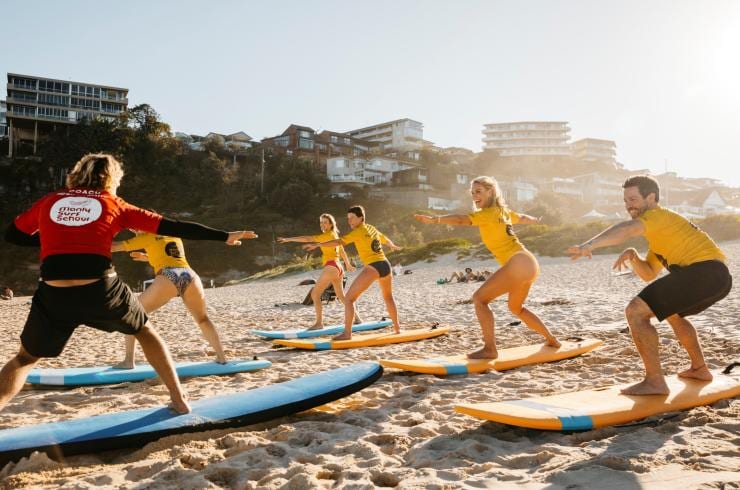
Stay for longer and earn money while you travel with a Working Holiday visa !
Accommodation

Pacific House Hostel, Woolloomooloo, Sydney, New South Wales © Conrad Taylor
Australia boasts many luxurious lodges and glamping getaways, but that doesn’t mean you can’t find quality accommodation on a budget. Australia's fun and affordable hostels are a great way to stay in amazing locations without spending too much money, and you'll get to make friends with fellow travellers while you're there. With so many spectacular natural attractions to explore, camping is another great option. Many campgrounds offer well-equipped cabins if sleeping under the stars isn't for you.

Queen Victoria Market, Melbourne, Victoria © Ewen Bell
Australia has fabulous permanent food markets in major cities, like Melbourne’s Queen Victoria Market , as well as many farmer's markets in urban and country areas where you can score tasty meals at affordable prices. There are cheap eats to savour in any major city, including Thai in Adelaide and pub feeds in Canberra . Check for restaurants that offer BYO before heading out to dinner and save by bringing your own bottle of wine. You’ll also find free and coin-operated barbecue facilities in beachside parks, where you can cook up a meal and soak in the Aussie outdoor lifestyle.
Sightseeing

Sculpture by the Sea, Bondi, New South Wales © Destination NSW
From the cities to the outback, there are plenty of free things to see in Australia. The country's beautiful beaches are free to visit, and many have professional lifeguards patrolling the area during the summer months (December to February). Sign up for free walking tours found in most major cities, or head off on one of many walking and coastal trails. Experiencing art is also incredibly affordable in Australia – you can wander through innovative outdoor galleries and the permanent exhibitions at all of Australia’s major art galleries are free to view.

Tips for solo travellers

Quokka, Rottnest Island, Western Australia © Tourism Australia
From kangaroos and koalas to dolphins and whales, Australia has so much wildlife to encounter. There are plenty of zoos and aquariums you can pay to enter, like the popular Taronga Zoo Sydney that has animals from Australia and around the world. While it’s not guaranteed, you can also spot Australia’s wildlife in the wild . Pay a visit to Rottnest Island to see parks filled with smiley quokkas, spot Tassie devils in Tasmania or grab some goggles and dive in along the Great Barrier Reef to see a colourful variety of marine life.

VIVID, Sydney, New South Wales © Destination NSW
Festivals and events occur in every corner of Australia each year, and some of the best are free to attend. Pay a visit to Adelaide for the annual Adelaide Fringe festival, where you can attend free live music, comedy and theatre performances. Vivid Sydney 's lights showcase is not to be missed, with the harbour city coming to life in a rainbow of public art installations each winter. You can also attend Floriade to be part of Canberra's extravagant annual celebration of flowers.
Things to know

Collins Street, Melbourne, Victoria © Josie Withers Photography
When you're travelling in Australia, there are a few extra tips to know that might help you save money. Firstly, tipping is not considered obligatory in Australia, and most venues don't add service charges to your bill unless you're part of a large group. If you need free wi-fi along your journey, you can often find it in public spaces such as museums, shopping centres and train stations as well as some cafés. If you're catching public transport, be aware that some major cities have replaced single-use tickets with reusable cards such as Opal in Sydney .
Helpful resources

We use cookies on this site to enhance your user experience. Find out more . By clicking any link on this page you are giving your consent for us to set cookies.
Acknowledgement of Country

We acknowledge the Traditional Aboriginal and Torres Strait Islander Owners of the land, sea and waters of the Australian continent, and recognise their custodianship of culture and Country for over 60,000 years.
- New Zealand (English)
- United States (English)
- Canada (English)
- United Kingdom (English)
- India (English)
- Malaysia (English)
- Singapore (English)
- Indonesia (Bahasa Indonesia)
- Deutschland (Deutsch)
- France (Français)
- Italia (Italiano)
- 中国大陆 (简体中文)
*Product Disclaimer: Tourism Australia is not the owner, operator, advertiser or promoter of the listed products and services. Information on listed products and services, including Covid-safe accreditations, are provided by the third-party operator on their website or as published on Australian Tourism Data Warehouse where applicable. Rates are indicative based on the minimum and maximum available prices of products and services. Please visit the operator’s website for further information. All prices quoted are in Australian dollars (AUD). Tourism Australia makes no representations whatsoever about any other websites which you may access through its websites such as australia.com. Some websites which are linked to the Tourism Australia website are independent from Tourism Australia and are not under the control of Tourism Australia. Tourism Australia does not endorse or accept any responsibility for the use of websites which are owned or operated by third parties and makes no representation or warranty in relation to the standard, class or fitness for purpose of any services, nor does it endorse or in any respect warrant any products or services by virtue of any information, material or content linked from or to this site.
Top tips for visiting Austria on a budget

May 29, 2024 • 7 min read

Austria may not be a budget destination, but with some savvy planning there are many ways to make your euros go further © Patrick Daxenbichler / Getty Images
Despite its monarchically lavished cities, alpine villages at the foot of gondola-gliding peaks, and enchanting lakeside hangouts, you don’t need pockets as deep as an emperor to enjoy Austria .
Much like its Western European neighbours, Austria is a far stretch from being a shoestring destination. But public transportation is inexpensive, guest cards bundle together a staggering stack of discounts, you can wander the grounds of grandiose sites and climb every mountain without spending a cent, and street food balances out the splurge on schnitzel.
Here’s how to make your budget stretch further on your visit to Austria.
Daily costs
- Dorm bed in a hostel: €30
- Basic hotel room for two: €100
- Daily travel card on public transport: €8
- City card, 24 hours: €70
- Museum entry: €15
- Cup of coffee: €4.50
- Three-course restaurant dinner for two: €80
- A glass of Austrian wine: €4
- A pint of beer at the bar: €4
- Average daily cost: €150
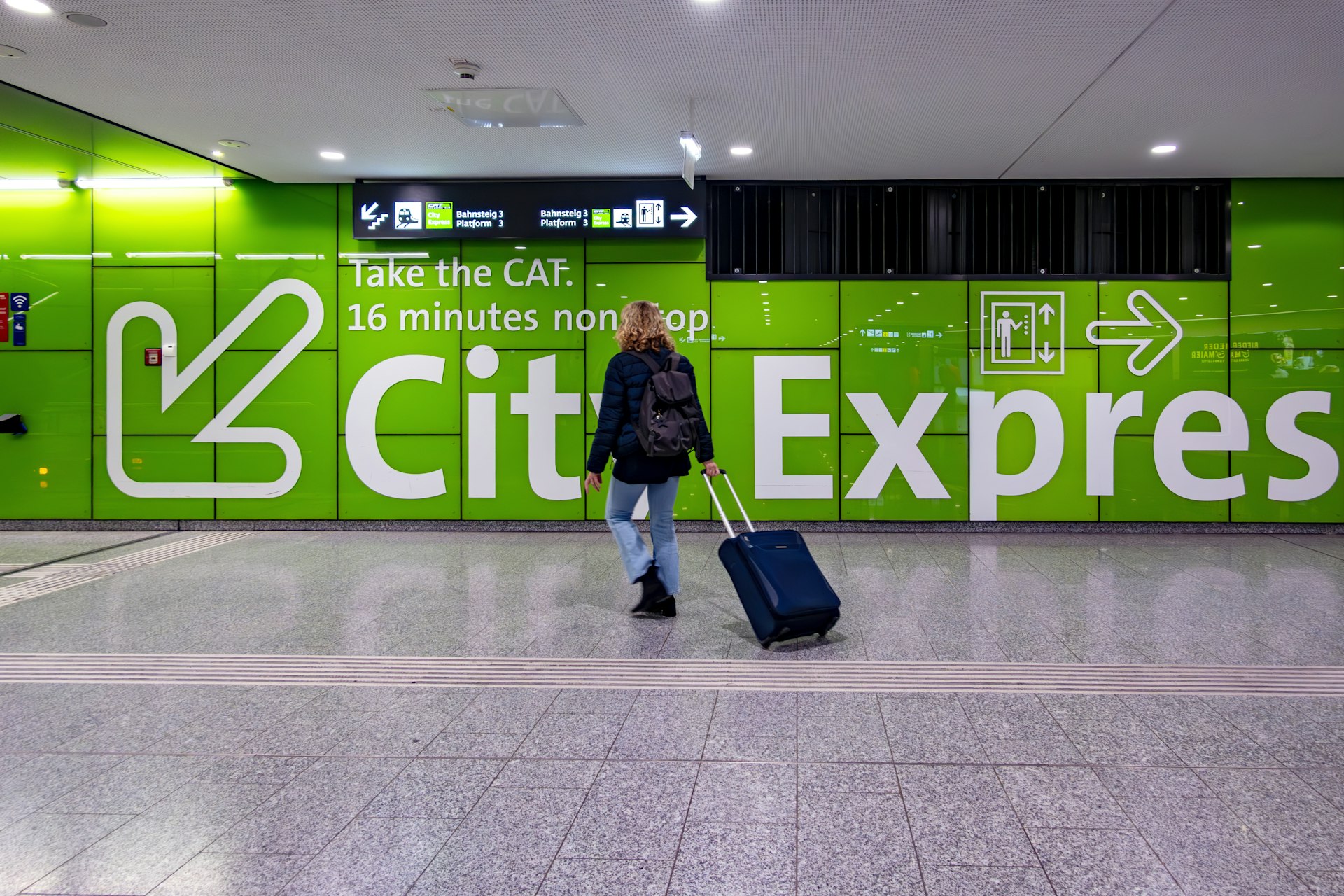
Fly into Vienna for the best choice of budget air fares
While Salzburg , Innsbruck , Klagenfurt and Graz have airports, Vienna International Airport is Austria’s biggest, serving more flights from budget airlines such as Ryanair, Wizz Air and Eurowings.
Travel in the shoulder seasons for cheaper room rates
The winter ski season (December to April) and summer (June to August) are the busiest times to visit Austria. In the spring and autumn shoulder seasons (May, and September to November), you’ll be more likely to snag better-priced rooms, score tickets on popular transport routes and find fewer crowds to make the most of your time at museums and other major sights.
Book train tickets in advance to get around for less
The cheapest way to get around Austria is by purchasing advance train tickets. Save half or more on the cost of a standard ticket by booking a bargain fixed-departure-time Sparschiene ticket with national rail operator ÖBB . But before you book, compare prices with private rail operator WESTbahn , which connects Vienna to Salzburg, Innsbruck and Bregenz with supersaver and flexible tickets. And, depending on your plans, consider whether a Eurail Austria pass – which starts at €144 for three days – might be more cost-effective.
Read more: Everything you need to know about getting around Austria
Get a 24-hour pass for unlimited public transportation
In big cities, a single ride on public transport might cost as little as €2.40, but don’t pay as you go if you plan to travel several times over the course of a day; you’ll save money with a 24-hour pass, which costs less than €10.
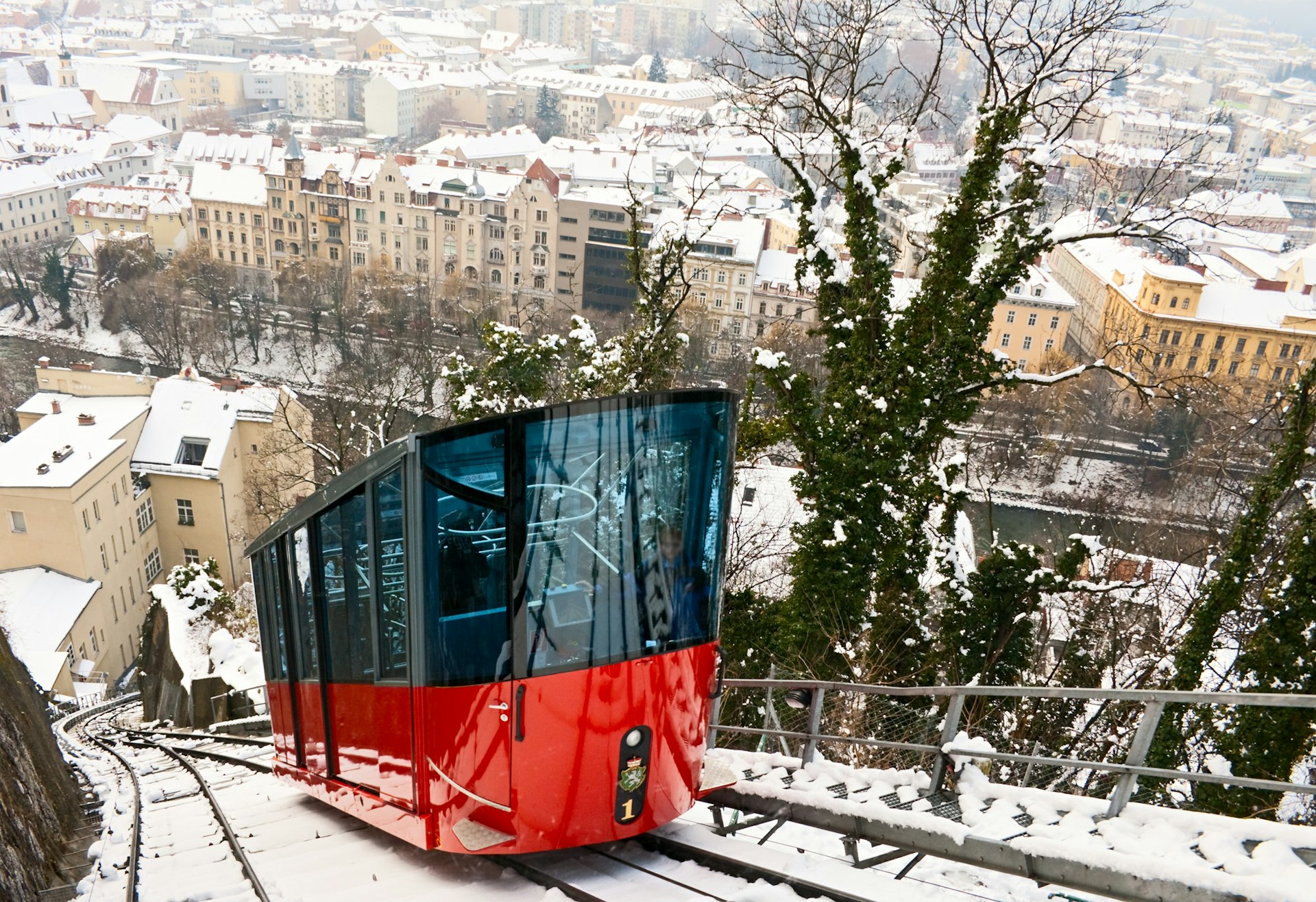
Plan your days – a city tourist pass could save you money
Palaces, museum complexes and tempting day trips – traveling on a budget shouldn’t mean having to max out on one highlight per day. Depending on your plans, you could save money with city tourist passes in 24-, 48-, or 72-hour variations, which include public transportation and discounts for attractions.
The Vienna City Card includes a 20% discount on participating hotels and restaurants.
You’ll get the Innsbruck Welcome Card with a stay of two nights at partner hotels and it includes weekly guided hiking and e-biking tours
The Graz Card adds on free travel on the Schlossbergbahn and the Schlossberglift, as well as an old town tour.
The Linz Card grants free museum entry, a €10 voucher redeemable on concerts and river cruises and throws in a trundle on the mountain tramway Pöstlingbergbahn.
The Salzburg Card represents the best value for money. It offers one night of accommodation and free admission to every city tourist attraction and museum that you can squeeze in.
Book at partner hotels with regional discount cards
If you're roaming a region you can look out for guest cards offering unlimited transport, entry discounts and access to outdoor activities.
If you book a room at a partner hotel in Tyrol , Vorarlberg, Salzburgerland , Upper Austria and Burgenland and you’ll get a card for free at check-in.
In areas without partner hotel links you can buy regional money-saving cards, such as Carinthia ( Kärnten Card ), Styria ( Steiermark-Card ) and Lower Austria ( Niederösterreich-CARD ),
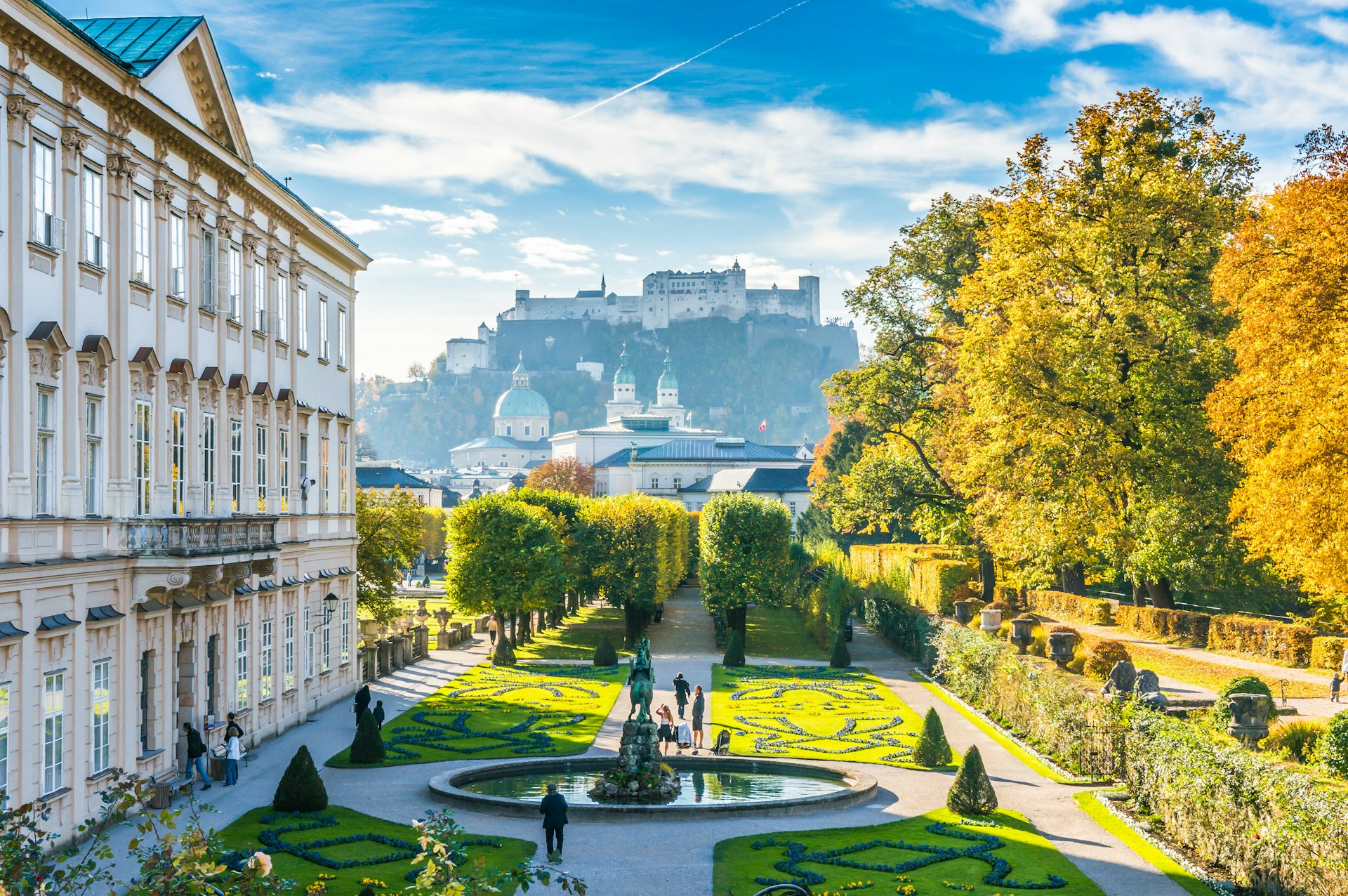
Seek out attractions that cost nothing (nature is free)
UNESCO-protected old towns are open-air museums, and the landscaped gardens of opulent abodes – including those at Schönbrunn and Belvedere in Vienna and Mirabell Gardens in Salzburg – are public-access enchantments. Beyond the gilded halls, several film and music events across the country don’t require a ticket, including Vienna’s Summer Night Concert in Schönbrunn Palace (June), the Vienna Film Festival (June to September) and Salzburg’s Mirabell Gardens Sunday Promenade Concerts (May until August).
For the pinnacle of budget exploration, skip the cable car ticket and pick a hiking route for valley and vineyard highs. And if you don’t find yourself scrambling for a deck-side spot at one of Austria’s bathing lakes, swim in Vienna’s Alte Donau or Salzburg’s Almkanal, instead of pay-for-entry lidos.
Visit museums for free
Ticket costs to see Vienna’s assemblage of art and heritage quickly stack up, but more than one million objects are showcased for free at the Wien Museum Karlsplatz , giving you a taster of the city’s millennium of history. There’s also free admission every first Sunday of the month at Hermesvilla (former escape of Empress Elisabeth, the wife of Emperor Franz Joseph I) in the Lainzer Tiergarten , the artifact-loaded Römermuseum (Roman Museum) and six houses that were once home to the composers Beethoven, Haydn, Schubert, and Strauss.
Max out the value of your ticket on late-night open days – Vienna’s Kunsthistorisches Museum Wien and Leopold Museum are open until 9pm on Thursdays; the Naturhistorisches Museum until 8pm on Wednesdays; and Salzburg’s Museum der Moderne stays open until 8pm on Thursdays.
Across Austria for one night in October, the Long Night of the Museums offers the chance to culture-cram as many museums as you like from 6pm until 1am for the cost of a single €15 ticket.
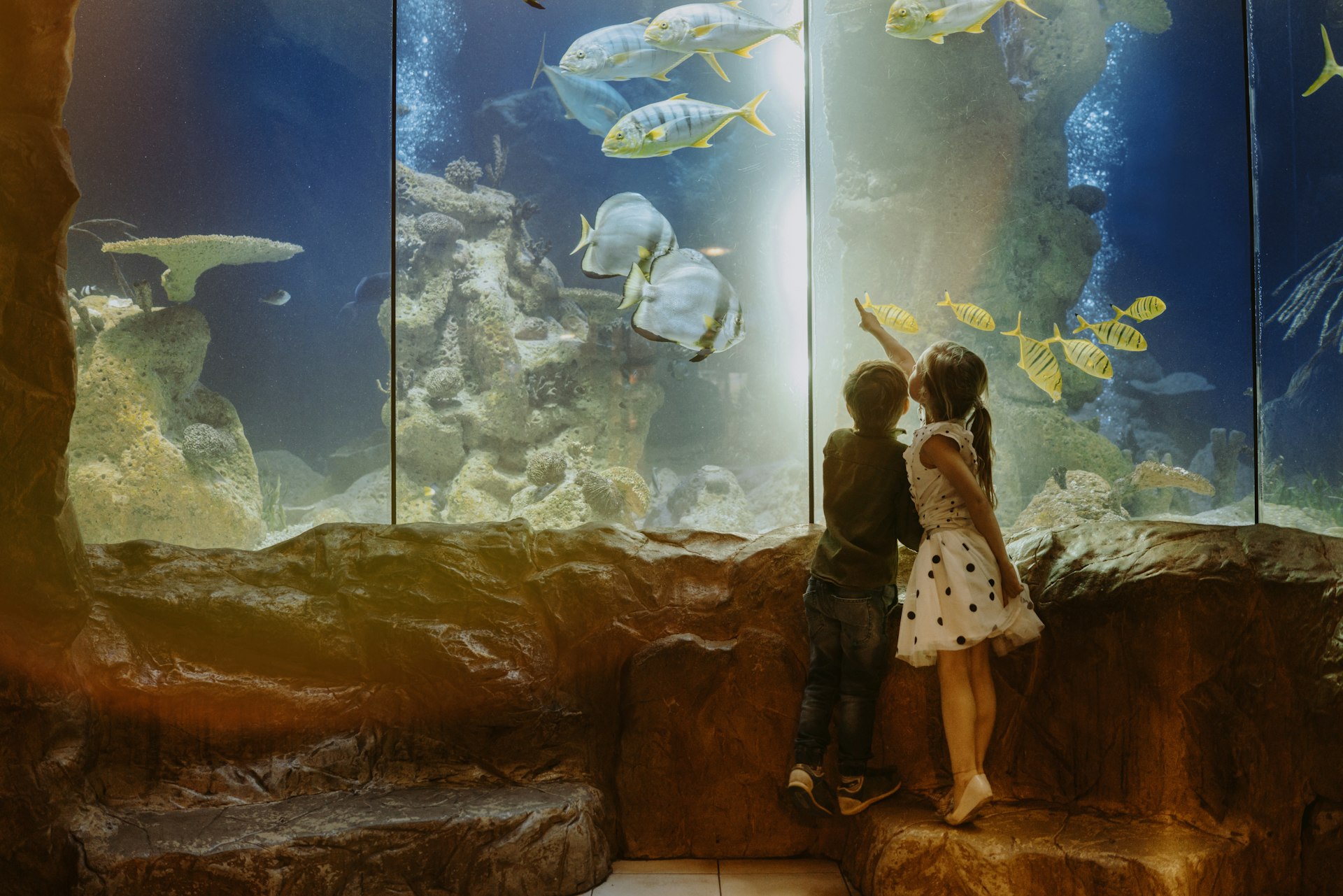
Look out for discounts for children, students and over-60s
From transport to theatre shows, museums to mountain lift passes, showing the relevant ID can get you free or discounted admission.
Join free walking tours and greeter programmes
Join walking tours with locals who will introduce you to their city on a “for-tips” basis. Vienna has nine free tours to choose from. Check out the first free walking tour in Salzburg and Innsbruck’s greeter network . Or guide yourself through Austria's splendor with apps like GPSMYCITY , which currently covers 13 destinations in the country.
Eat breakfast at a bakery and not your hotel
Swap pricey continental breakfasts for bakeries with flavorful bread, pastries and coffee. Ströck, Anker, and Der Mann are fresh-out-of-the-oven chains, and neighborhoods are dotted with independent bake shops.
Scour supermarkets for end-of-day deals
Whether in a Dorf (village) or a Stadt (city), you'll find a supermarket like Billa, Spar, Hofer or MPREIS for a quick, on-the-road fill-up or a budget-friendly at-home feast. For farm-fresh produce, meander mouthwatering markets like Naschmarkt and Brunnenmarkt in Vienna, Kaiser Josef Markt in Graz, and the Market Hall in Innsbruck.
Download the Too Good to Go app and grab last-minute food bundles from grocery stores, supermarkets, bakeries and take-outs. Some generous goodie bags are under €5.
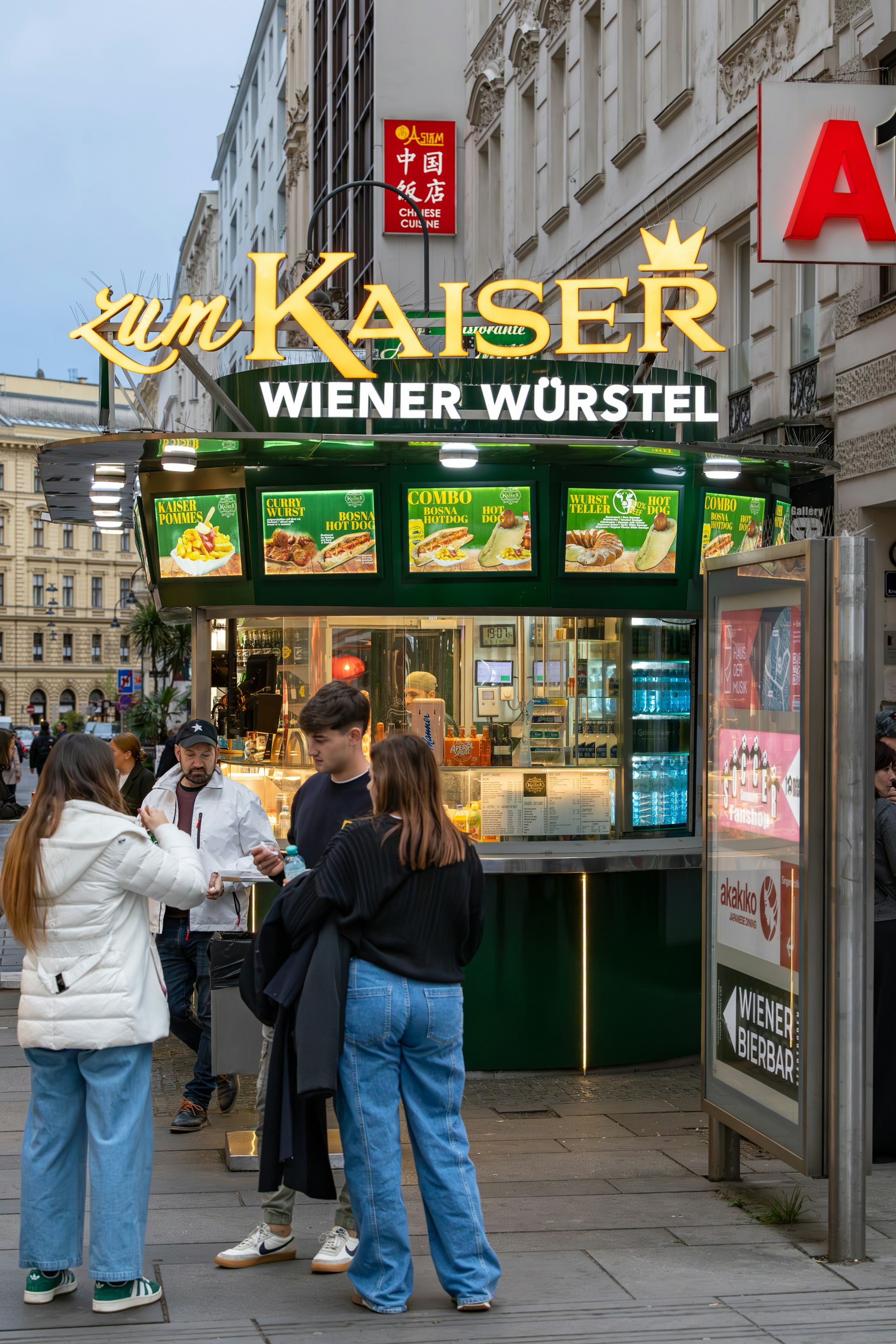
Snack on street food
A rite of passage in Vienna, but found in other cities too, the typically late-night snack stop of a Würstelstand (sausage stand), is where you can pick up a Käsekrainer (a sausage stuffed with tiny cheese cubes) and a beer for less than €10. Thanks to the multicultural crossover, kebab and shawarma vendors abound, as well as Balkan street food like the bosna (hot dog) and ćevapčići (grilled meat).
Bring a reusable water bottle
Stay hydrated with the purest water straight from the mountains. Vienna’s 1300 drinking fountains bring fresh mountain spring water from the Lower Austrian Styrian Alps to the streets, and 27 of Salzburg’s 49 water fountains flow with the mountain spring elixir dubbed the “ Untersberg Champagne .” All tap water in Austria is safe to drink, thanks to its alpine freshness. This is why the coffee and Spritzer (wine and sparking water) taste so good here.
Keep planning your trip to Austria:
- Save these top places to visit to your profile
- These road trips in Austria will take you to all the highlights
- Find the best time to visit Austria for your perfect vacation
Explore related stories
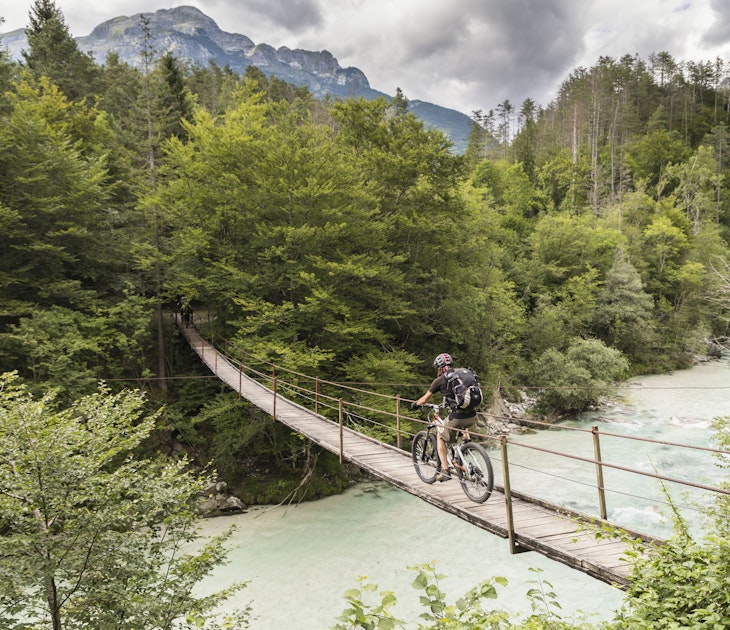
Budget Travel
Apr 27, 2024 • 5 min read
With affordable public transport, great food markets and discount cards, a visit to Slovenia needn't blow up your budget.
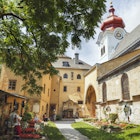
Jul 17, 2022 • 7 min read
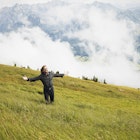
Jun 7, 2022 • 7 min read

Nov 4, 2021 • 6 min read
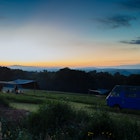
Jun 30, 2020 • 7 min read

Oct 28, 2019 • 19 min read
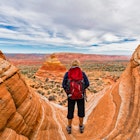
Aug 26, 2019 • 1 min read

Aug 20, 2019 • 2 min read
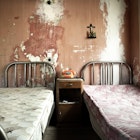
Aug 28, 2018 • 6 min read
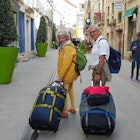
Oct 6, 2016 • 6 min read

IMAGES
VIDEO
COMMENTS
How much does a one week, two week, or one month trip to Australia cost? A one week trip to Australia usually costs around $1,159 (AU$1,747) for one person and $2,318 (AU$3,495) for two people. This includes accommodation, food, local transportation, and sightseeing. A two week trip to Australia on average costs around $2,318 (AU$3,495) for one ...
You can visit Australia on any budget, from a $40 a night hostel in Cairns that's highly-rated on Booking to the spectacular $500 a night Four Seasons Sydney, which offers up the best views of the Sydney Opera House in the city. (Those prices are in AUD, by the way. 1 AUD is equal to 0.60 USD/EUR, or 0.53 GBP.)
The cheapest trip to Australia is about $150 per person per day for travelers willing to take standby flights, deal with inconvenience, and otherwise limit travel expenses. ... Budget Family Vacation. The lowest cost for 4 people to visit Australia for a week is $3,631-$9,738 ($519-$1,391 per day) Food, Travel, ...
Popular day tours, like whale watching and guided walks, cost around AUD$100 to AUD$200. If you're booking high-demand activities - such as the Field of Light or swimming with whale sharks - secure your spot at least a month in advance to avoid disappointment.
When you travel to Australia, your typical costs tend to look like this: Hostels: Hostels cost 25-30 AUD in smaller cities and 25-70 AUD per night in places like Sydney or Melbourne. As always, the smaller the dorm, the higher the cost. Private rooms are 80-150 AUD per night. Food: Your average meal in Australia will run you about 20 AUD.
Pacific / Australia /. Visitors to Australia usually spend between $63 and $443 per day on average for one person and $127 to $887 for two people. While this is a wide range, the average daily cost averages $165 (AU$250) per person. This average includes sightseeing, hotel, food, and local transportation expenses from other travelers.
You can use its multi-city trip planner to budget domestic travel within Australia. 3. The cheapest places to eat are markets and pubs. Australia's big cities have top-notch restaurants, but they can be pricey and are likely to be a stretch too far for budget travelers. Instead, opt for the lively markets in laneways, parks, and historic sites.
A generous budget for four weeks of travel along the west coast would be around AU $4,000. Organized tours will be expensive, costing around AU $3,000 for a 10-day trip from Perth to Broome. The Pinnacles, north of Perth, Western Australia. Photo credit: Getty Images/John Crux Photography.
Planning a trip to Australia doesn't have to break the bank. By determining your travel style and preferences, researching seasonal pricing and deals, planning your itinerary and calculating expenses, considering additional costs and expenses, and creating a realistic budget (and sticking to it!), you can enjoy all that Australia has to offer ...
A one-week vacation in Australia costs an average of $2579 per person, including $1200 for your return flight. A solo traveler will spend an average of $197 per day on expenses. This average cost includes food, accommodation, local transportation, and other activities throughout your stay in Australia.
Barrier Reef Intro Dive = $245. Budget Open Water Dive Course = $799. Overnight Dive Boat = $575 (2 day/1 night inc 7 dives) Melbourne Intro Tour = from $399 (4 day option) Check out RTW Backpackers for everything you need tour wise in Australia by clicking here.
Then we took another domestic flight from Sydney to Melbourne for AUD 115 per person, and to get from the country, we flew from Darwin to Kuala Lumpurvia Singapore for AUD 470 per person. TOTAL: 1230 USD. VISA AND PERMITS. Have a look at Australian government website hereif you're required to have a visa to Australia.
The cost of traveling to Australia varies depending on factors like the time of year, type of accommodation, and activities. Generally, a basic daily budget for backpackers is $70-$100 AUD, mid-range travelers should budget $150-$250 AUD per day, and luxury travelers should expect to spend over $400 AUD per day.
How to travel Australia on a budget! A trip to Australia doesn't have to be expensive, we spent less than €100/150 AUD per day during our 6-week road trip along the East Coast. Detailed budget breakdown and information about the costs of renting a camper van, campsites, petrol, food & activities. #australia #roadtrip
For traveling longer distances in Australia, domestic flights are often the best option. You can usually find one-way flights for under $100 AUD. Flights will also cut your travel time by a lot. For example, driving from Sydney to Melbourne can take 12 or more hours. Flying from Sydney to Melbourne takes one hour.
Day 1: One perfect day in Sydney. Seeing Sydney is easy on a budget because many of the city's best attractions are free, or cost just a few dollars. Start with a walk through the historic village, The Rocks, which sits on the harbour, right underneath the famous Sydney Harbour Bridge. This area contains many narrow, cobblestone laneways and ...
It is possible to travel to Australia on a budget. In fact, there are many ways to do so. In this guide, we'll explore ways you can save money and travel around the country without breaking the bank. I'll also share some insights about my own experiences when I was traveling in Australia as a backpacker in 2014-2015.
Expect basic amenities like free Wi-Fi and self-catering facilities. Only some hostels include breakfast. For those traveling with a tent, a basic tent plot without electricity starts around 7 AUD, though most are 10-25 AUD per night. For budget hotels, expect to spend 100-120 AUD per night for a two-star hotel.
Budget Travel. 9 money-saving tips for budget travelers in Australia. Nov 10, 2023 • 8 min read. Tips & Advice. ... Discover where locals travel in Australia. Feb 27, 2024 • 6 min read. Tips & Advice. 10 things to know before going to Los Angeles. Feb 15, 2024 • 7 min read. Festivals & Events.
From East to West Australia. By Aspire Down Under. 13 Nights / 16 Days*. From $6,499 per person, including international flights. View Offer. Deal.
Millions of visitors from North America, Europe, Asia, and other parts of the world flock to the land down under in search of their own adventures-whether its for the food, the amazing wildlife ...
Travel Incidents TA staff caught spending $137k on holidays Three Tourism Australia employees have been fired for spending almost $140,000 of taxpayers' money on personal holidays.
2024-25 allocation [budget estimate] $703.9 million. 2024-25 total Australian ODA [budget estimate] $738.3 million. 2023-24 allocation [budget estimate] $613.2 million. 2023-24 total Australian ODA [budget estimate] $723.4 million. 2022-23 total Australian ODA [actual] $489.5 million
Paris, France. Ahead of the 2024 Olympic Games, Paris raised its existing nightly tourist tax, which previously ranged from €1 to €5 (~$1.50-$8 AUD). The updated fee varies based on the ...
Source: 2024-25 Budget, 2023-24 MYEFO, 2023-24 Budget, PBO historical fiscal data. Government subsidies and CPI inflation. The RBA sets the cash rate with the aim of keeping headline CPI inflation between 2-3%.Conceptually, the CPI measures the percentage change in the price of a basket of goods and services consumed by households.
Plan your dream holiday. From ancient rainforests and famous reefs to outback deserts and mountain peaks, there's a whole world of experiences to discover Down Under. Use our trip builder to plan your perfect adventure in just a few taps. Use our trip planner to find your dream Australian holiday.
Australia's budget airlines Bonza and Jetstar offer cheap fares, and prices tend to be lower if you travel in the early morning or late evening. Sites like Wotif can also be helpful for booking car rentals, so you can take off on epic road trips on a whim. If you don't feel like driving, train and bus travel are convenient and affordable ...
The 2024-25 Australian federal budget was delivered on budget night at 7:30pm on Tuesday, 14 May 2024 by Treasurer Jim Chalmers. The budget will dictate how the Australian Government will allocate an estimated A$715 billion across the federal government, and to state and territory governments. It will be the third federal budget handed down by the Labor Party since their victory in the 2022 ...
Here's how to make your budget stretch further on your visit to Austria. Daily costs Dorm bed in a hostel: €30; Basic hotel room for two: €100; Daily travel card on public transport: €8; City card, 24 hours: €70; Museum entry: €15; Cup of coffee: €4.50; Three-course restaurant dinner for two: €80; A glass of Austrian wine: €4